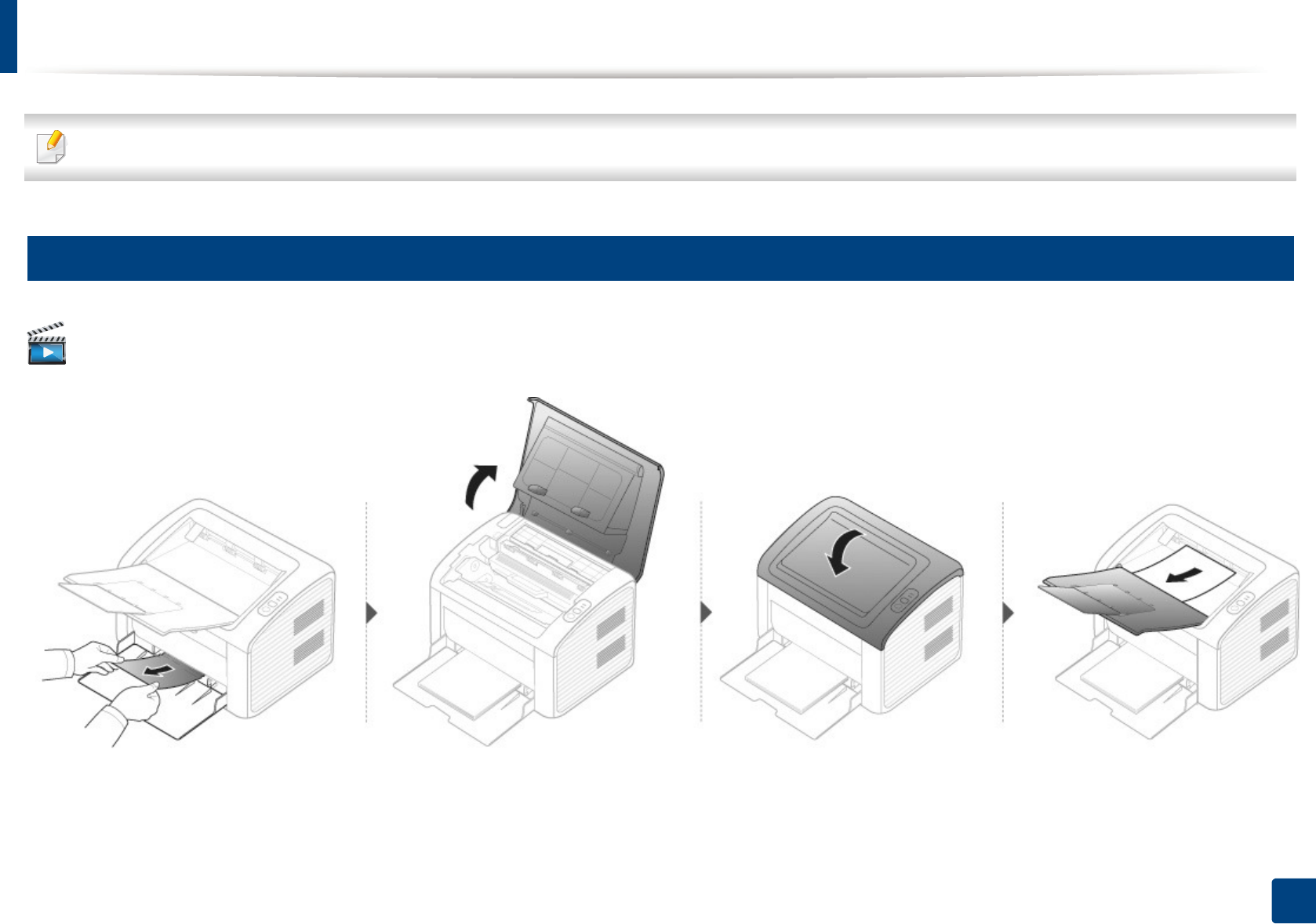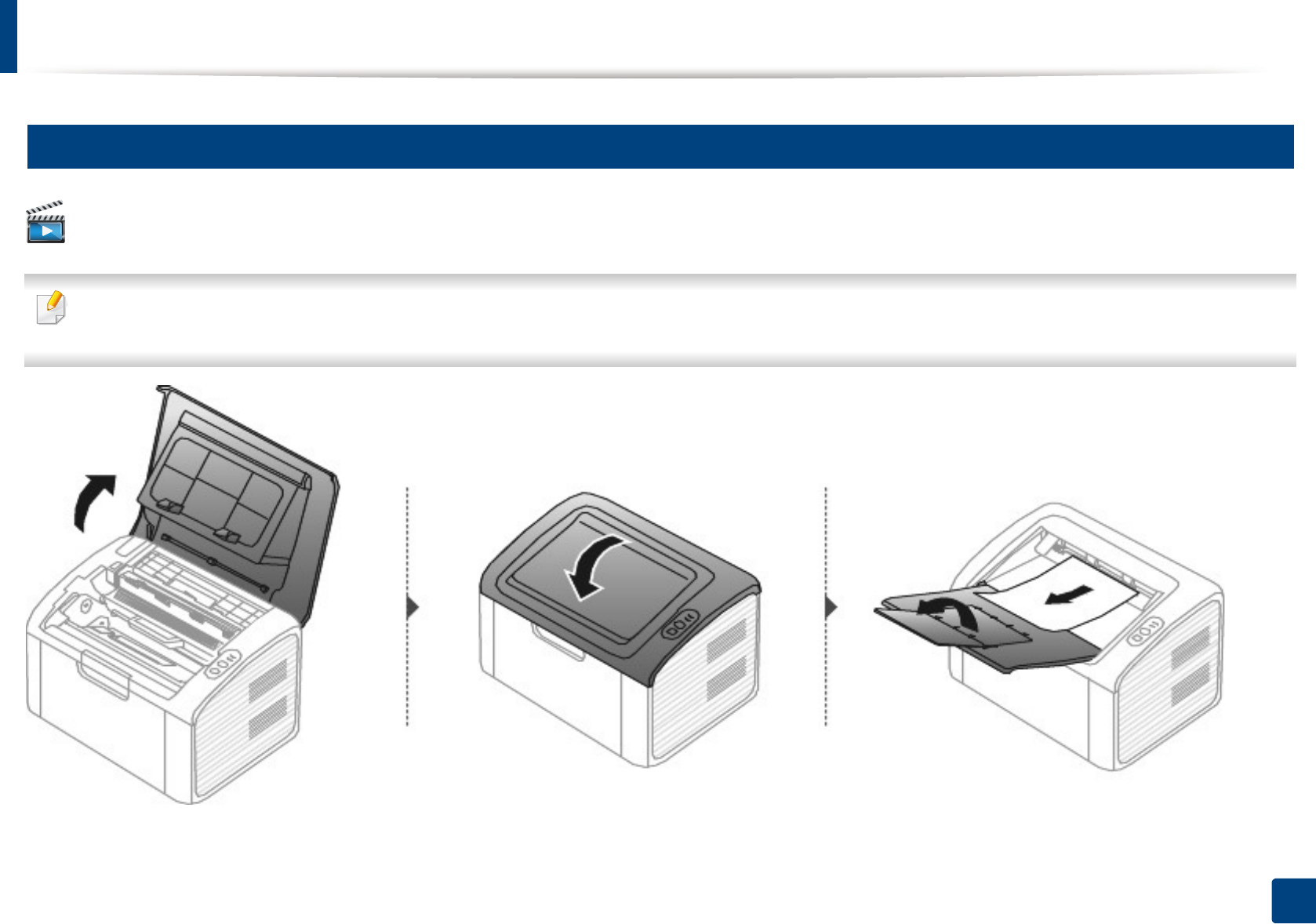Samsung Electronics Co SLM2020W Printer User Manual Bluejay english NEW
Samsung Electronics Co Ltd Printer Bluejay english NEW
Contents
- 1. Users Manual 1
- 2. Users Manaul 2
- 3. Users Manual 3
Users Manual 1

BASIC
User’s Guide
M-202x Series
M-202xW Series
BASIC
User’s Guide
This guide provides information concerning installation, basic operation and
troubleshooting on windows.
ADVANCED
This guide provides information about installation, advanced configuration, operation and
troubleshooting on various OS environments.
Some features may not be available depending on models or countries.
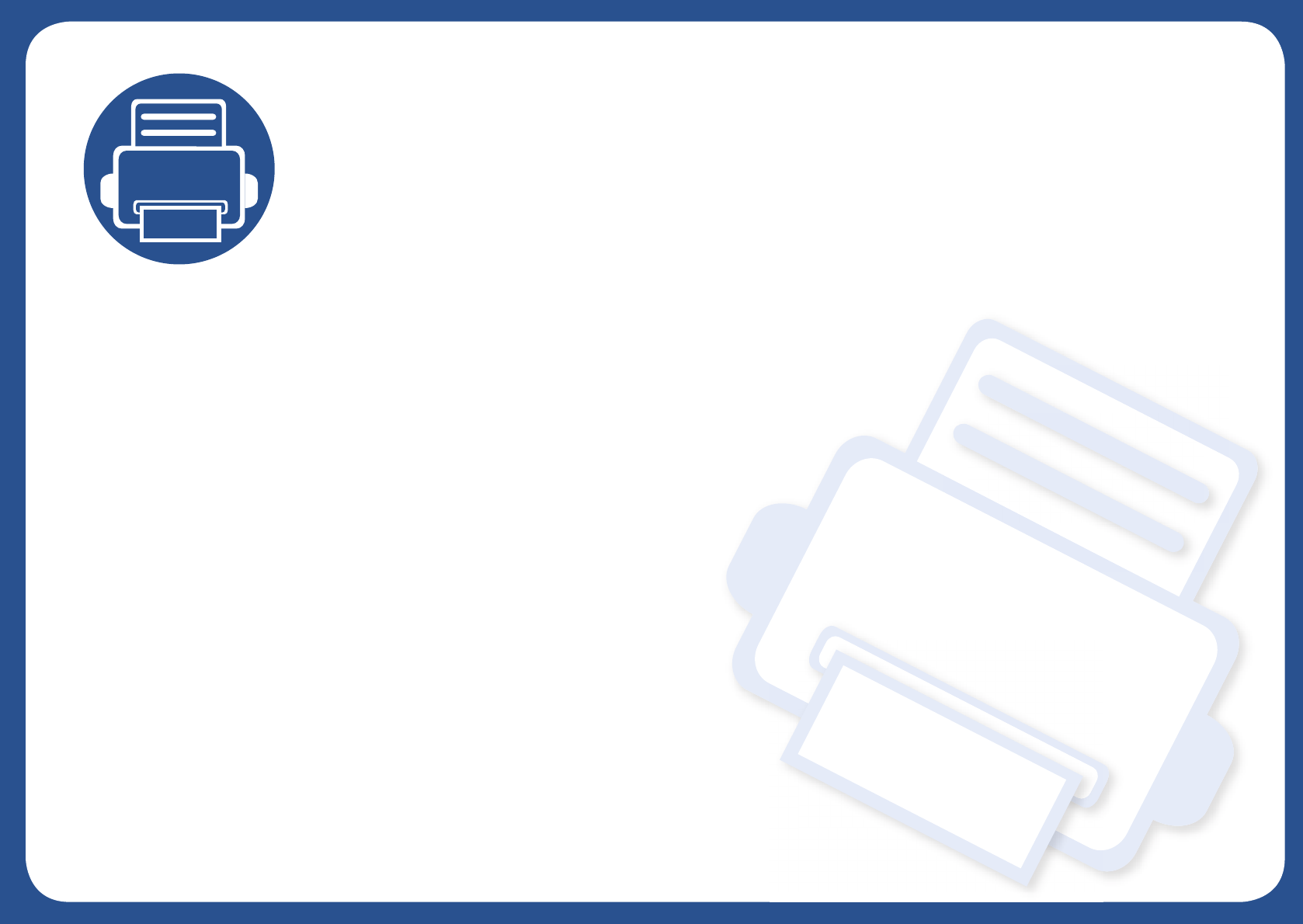
1. Introduction
This chapter provides information you need to know before using the machine.
•Key benefits 2
• Features by models 4
• Useful to know 6
• About this user’s guide 7
• Safety information 8
• Machine overview 13
• Control panel overview 16
• Turning on the machine 18
• Installing the driver locally 19
• Reinstalling the driver 20
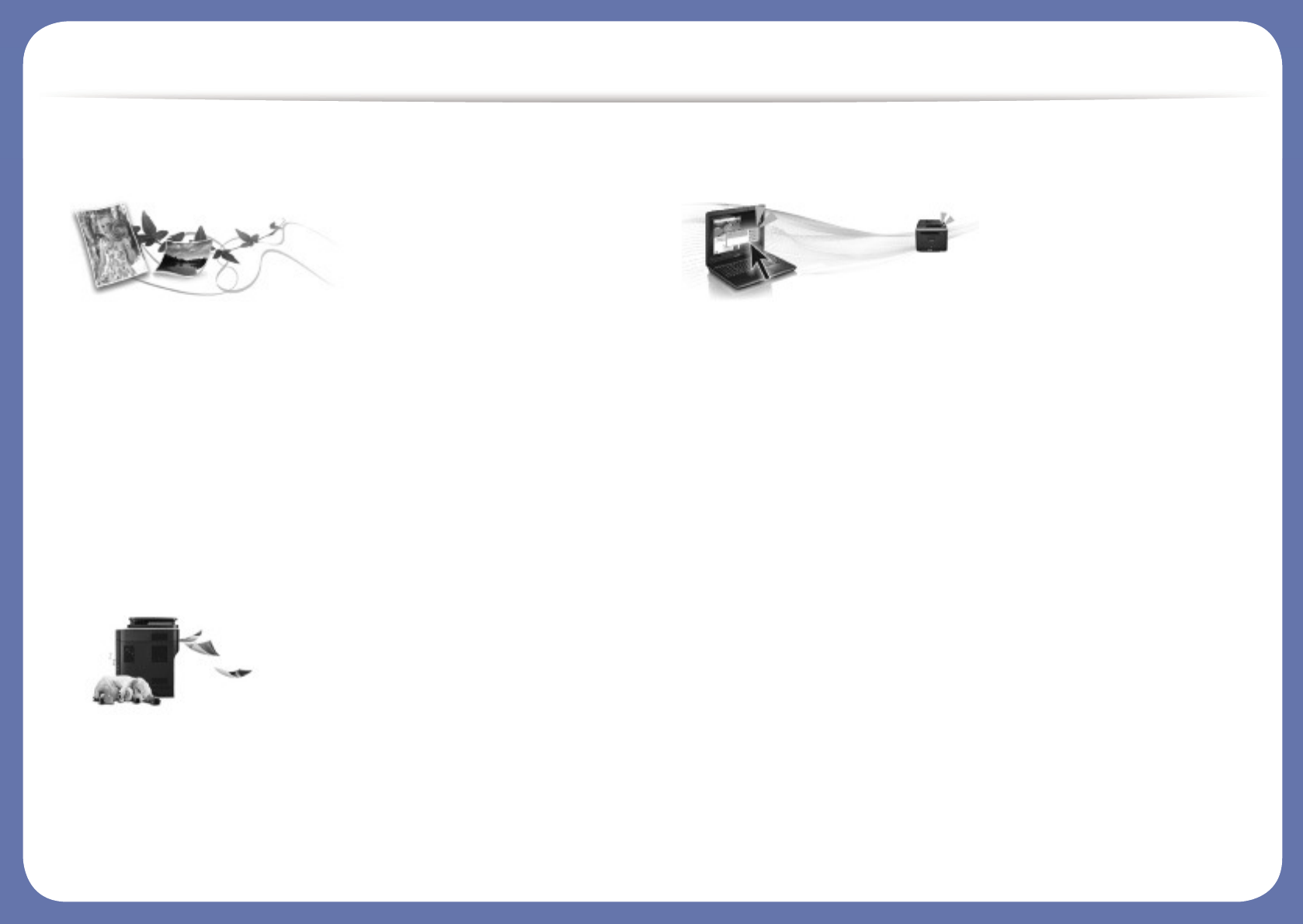
Key benefits
Environmentally friendly
• To save toner and paper, this machine supports the Eco feature (see "Easy
Eco Driver" on page 3).
• To save paper, you can print multiple pages on a single sheet of paper (see
"Using advanced print features" on page 5).
• To save paper, you can print on both sides of the paper (manual double-
sided printing) (see "Using advanced print features" on page 5).
• To save electricity, this machine automatically conserves electricity by
substantially reducing power consumption when not in use.
Print with excellent quality and speed
• You can print with a resolution of up to 1,200 x 1,200 dpi effective output.
• Fast, on-demand printing.
- For single-side printing, 20 ppm (A4) or 21 ppm (Letter).
Convenience
• Easy Capture Manager allows you to easily edit and print whatever you
captured using the Print Screen key on the keyboard (see "Understanding
Easy Capture Manager" on page 4).
• Samsung Easy Printer Manager and Samsung Printer Status (or Smart Panel)
are a program that monitors and informs you of the machine’s status and
allows you to customize the machine’s settings (see "Using Samsung Easy
Printer Manager" on page 8).
• AnyWeb Print helps you screen-capture, preview, scrap, and print the
screen more easily than when you use the ordinary program (see "Samsung
AnyWeb Print" on page 2).
• Smart Update allows you to check for the latest software and install the
latest version during the printer driver installation process. This is available
only for Windows OS users.
• If you have Internet access, you can get help, support application, machine
drivers, manuals, and order information from the Samsung website,
www.samsung.com > find your product > Support or Downloads.
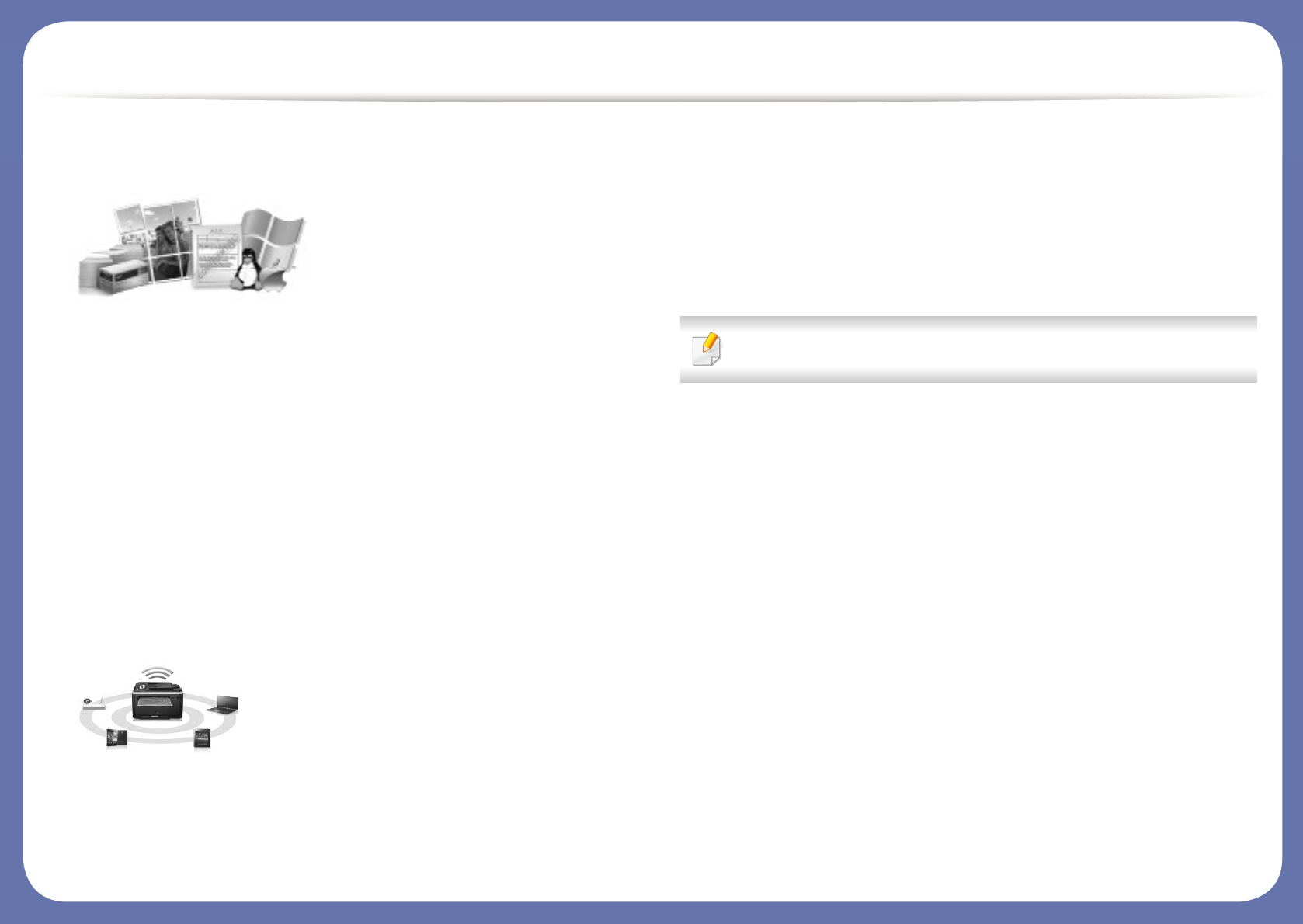
Key benefits
Wide range of functionality and application support
• Supports various paper sizes (see "Print media specifications" on page 4).
• Print watermark: You can customize your documents with words, such as
“Confidential” (see "Using advanced print features" on page 5).
• Print posters: The text and pictures of each page of your document are
magnified and printed across the multiple sheets of paper and can then be
taped together to form a poster (see "Using advanced print features" on
page 5).
• You can print in various operating systems (see "System requirements" on
page 7).
• Your machine is equipped with a USB interface.
Supports various wireless network setting method
• Using the WPS (Wi-Fi Protected Setup™) button
- You can easily connect to a wireless network using the WPS button on
the machine and the access point (a wireless router).
• Using the USB cable or a network cable
- You can connect and set various wireless network settings using a USB
cable or a network cable.
• Using the Wi-Fi Direct
- You can conveniently print from your mobile device using the Wi-Fi or
Wi-Fi Direct feature.
See "Introducing wireless set up methods" on page 18.
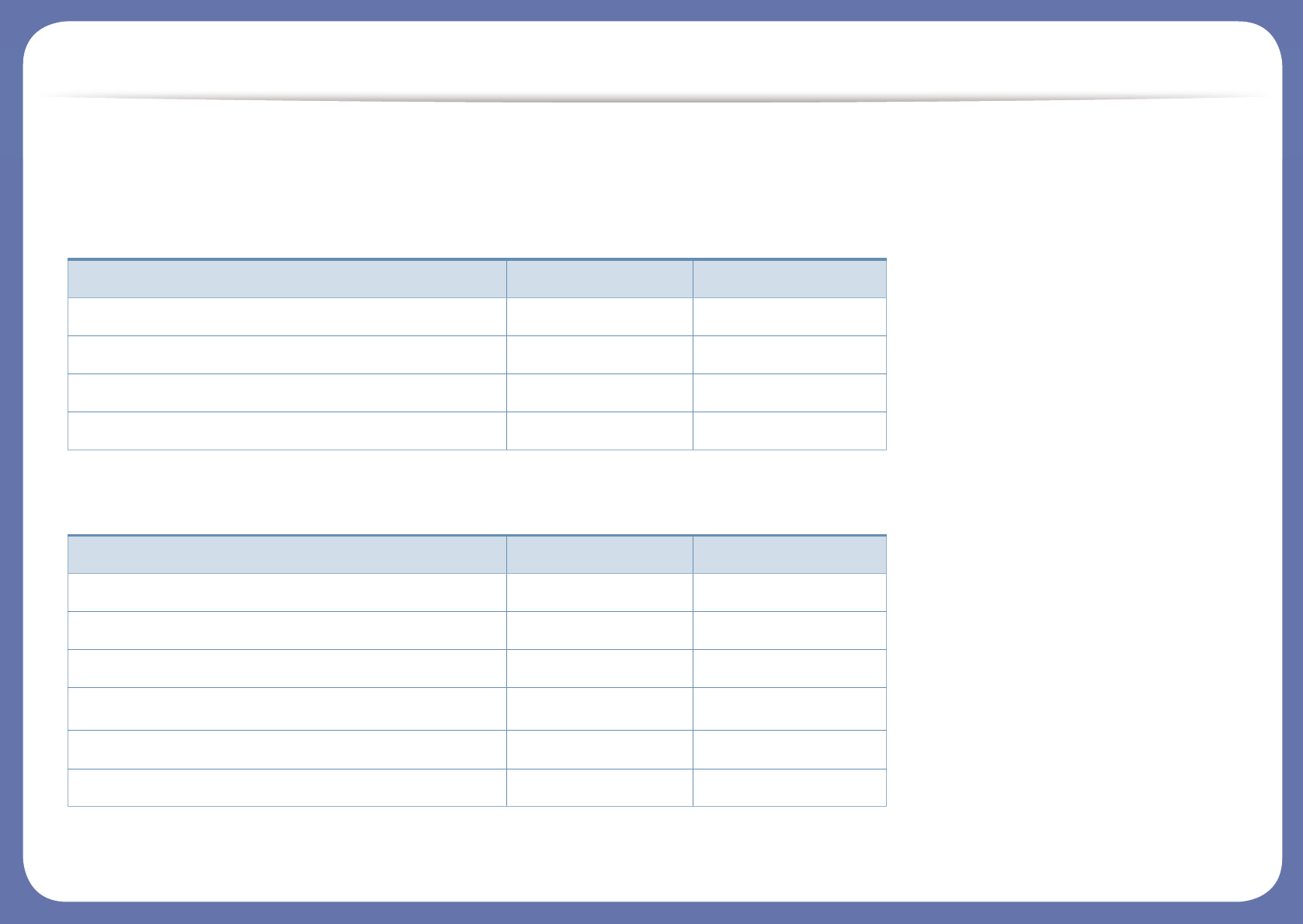
Features by models
Some features and optional goods may not be available depending on model or country.
Operating System
Software
Operating System M-202x Series M-202xW Series
Windows ● ●
Macintosh ● ●
Linux ● ●
Unix
Software M-202x Series M-202xW Series
PCL printer driver
SPL printer driver ● ●
PS printer driver
XPS printer driver1
1. For XPS driver, it is only supported for windows through the Samsung website (www.samsung.com)
● ●
Samsung Easy Printer Manager ● ●
SyncThru™ Web Service ●
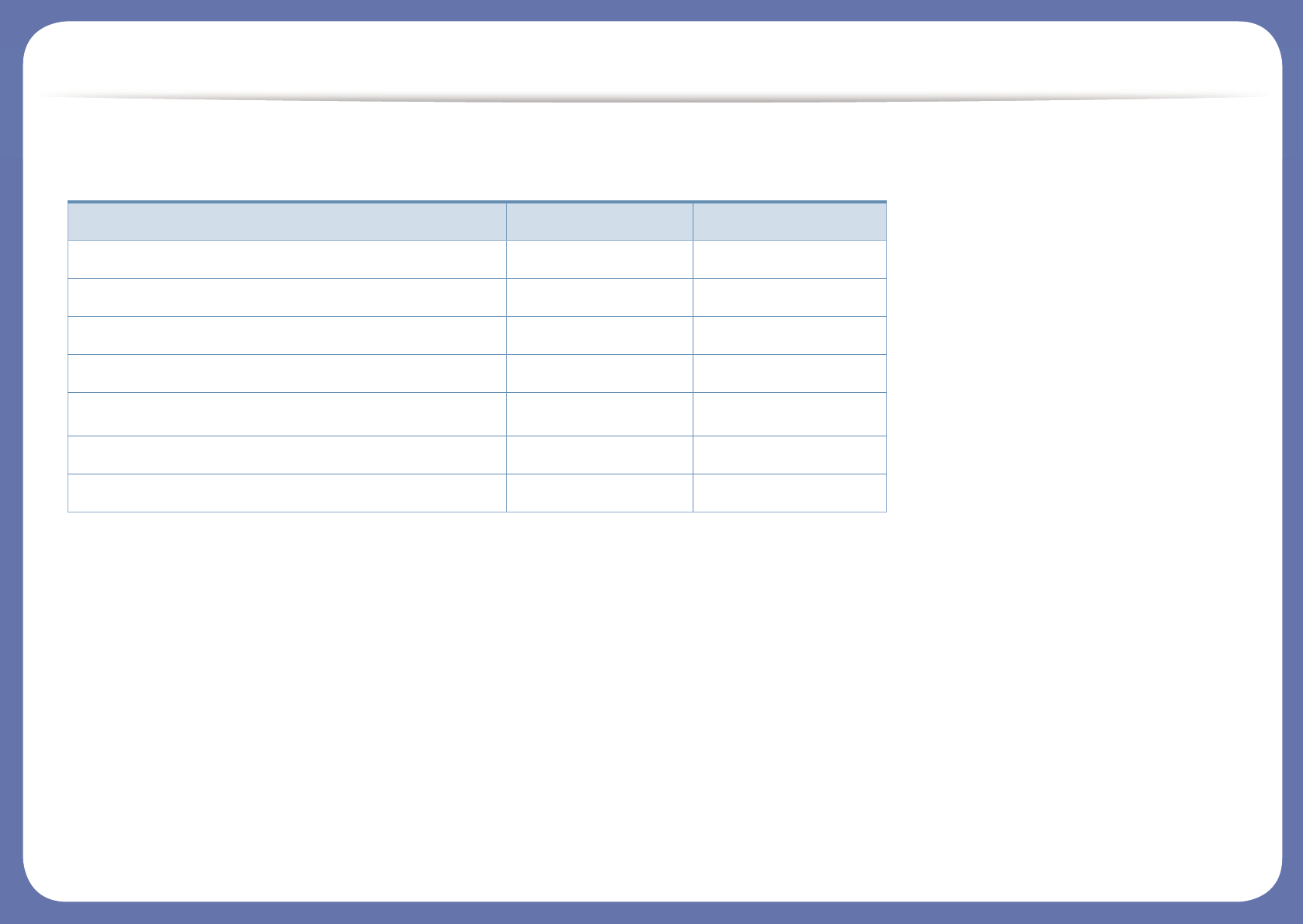
Features by models
Variety feature
(●: Included, Blank: Not available)
Features M-202x Series M-202xW Series
Hi-Speed USB 2.0 ● ●
Network Interface Ethernet 10/100 Base TX wired LAN
Network Interface 802.11b/g/n wireless LAN ●
IPv6 ●
Eco printing(Easy Eco Driver)1
1. Setting the ECO settings is available from the windows driver.
● ●
Wi-Fi Protected Setup™ (WPS) ●
Manual duplex (2-sided) printing ● ●
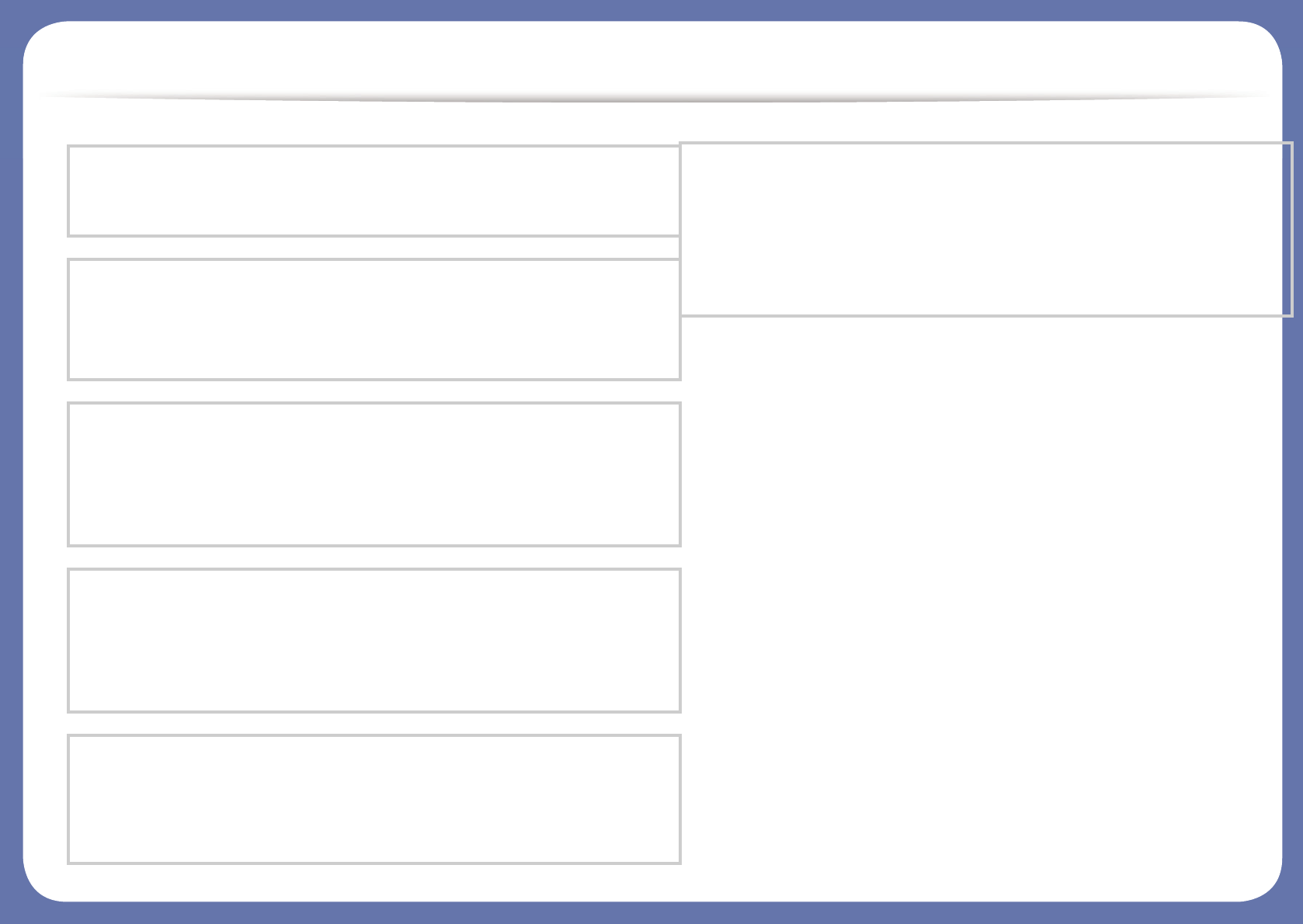
Useful to know
Where can I download the machine’s driver?
• Visit www.samsung.com/printer to download the latest machine’s
driver, and install it on your system.
Where can I purchase accessories or supplies?
• Inquire at a Samsung distributor or your retailer.
• Visit www.samsung.com/supplies. Select your country/region to
view product service information.
The status LED flashes or remains constantly on.
• Turn the product off and on again.
• Check the meanings of LED indications in this manual and
troubleshoot accordingly (see "Understanding the status LED" on
page 6).
A paper jam has occurred.
• Open and close the top cover (see "Front view" on page 14).
• Check the instructions on removing jammed paper in this manual
and troubleshoot accordingly (see "Clearing paper jams" on page
3).
Printouts are blurry.
• The toner level might be low or uneven. Shake the toner cartridge.
• Try a different print resolution setting.
• Replace the toner cartridge.
The machine does not print.
• Open the print queue list and remove the document from the list
(see "Canceling a print job" on page 13).
• Remove the driver and install it again (see "Installing the driver
locally" on page 19).
• Select your machine as your default machine in your Windows.
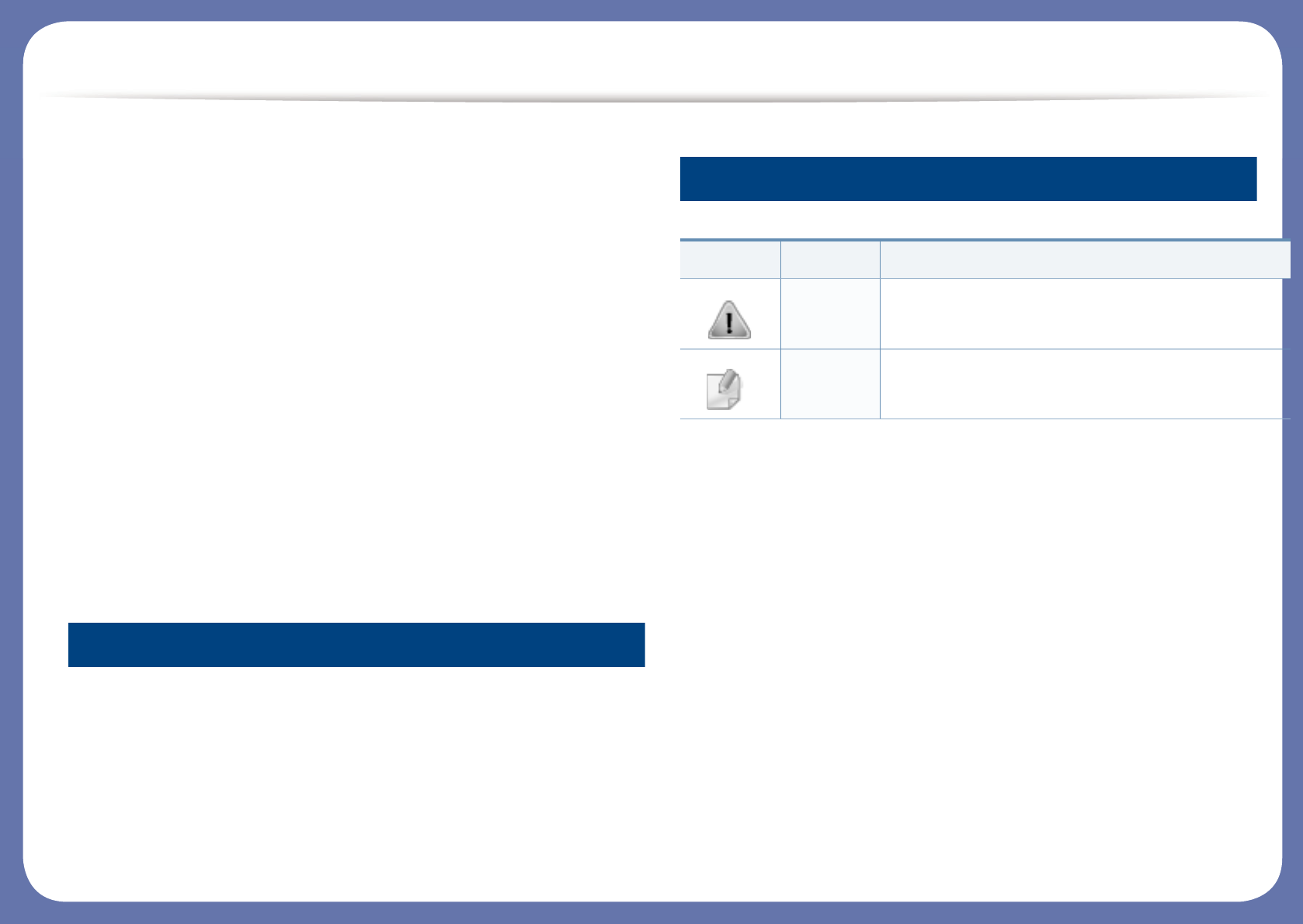
About this user’s guide
About this user’s guide
This user's guide provides information for your basic understanding of the
machine as well as detailed steps to explain machine usage.
• Read the safety information before using the machine.
• If you have a problem using the machine, refer to the troubleshooting
chapter.
• Terms used in this user’s guide are explained in the glossary chapter.
• All illustrations in this user’s guide may differ from your machine
depending on its options or model you purchased.
• The screenshots in this user's guide may differ from your machine
depending on the machine’s firmware/driver version.
• The procedures in this user’s guide are mainly based on Windows 7.
1
Conventions
Some terms in this guide are used interchangeably, as below:
• Document is synonymous with original.
• Paper is synonymous with media, or print media.
• Machine refers to printer or MFP.
2
General icons
Icon Text Description
Caution Gives users information to protect the machine from
possible mechanical damage or malfunction.
Note Provides additional information or detailed
specification of the machine function and feature.
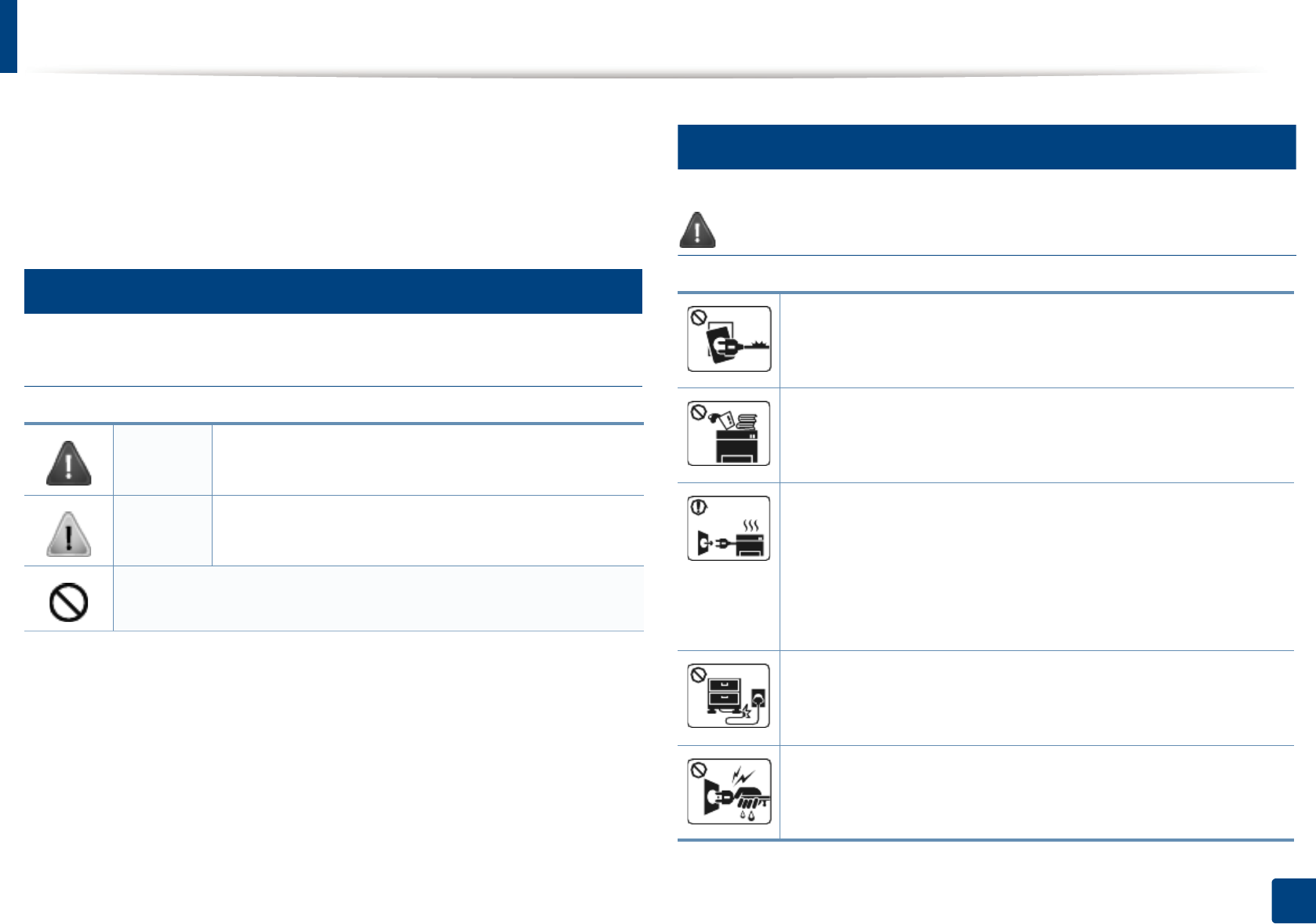
9
1. Introduction
Safety information
These warnings and precautions are included to prevent injury to you and
others, and to prevent any potential damage to your machine. Be sure to read
and understand all of these instructions before using the machine. After reading
this section, keep it in a safe place for future reference.
3
Important safety symbols
Explanation of all icons and signs used in this chapter
4
Operating environment
Warning
Warning Hazards or unsafe practices that may result in severe
personal injury or death.
Caution Hazards or unsafe practices that may result in minor
personal injury or property damage.
Do not attempt.
Do not use if the power cord is damaged or if the electrical outlet is
not grounded.
This could result in electric shock or fire.
Do not place anything on top of the machine (water, small metal or
heavy objects, candles, lit cigarettes, etc.).
This could result in electric shock or fire.
• If the machine gets overheated, it releases smoke, makes
strange noises, or generates an odd odor, immediately turn off
the power switch and unplug the machine.
• The user should be able to access the power outlet in case of
emergencies that might require the user to pull the plug out.
This could result in electric shock or fire.
Do not bend, or place heavy objects on the power cord.
Stepping on or allowing the power cord to be crushed by a heavy
object could result in electric shock or fire.
Do not remove the plug by pulling on the cord; do not handle the
plug with wet hands.
This could result in electric shock or fire.
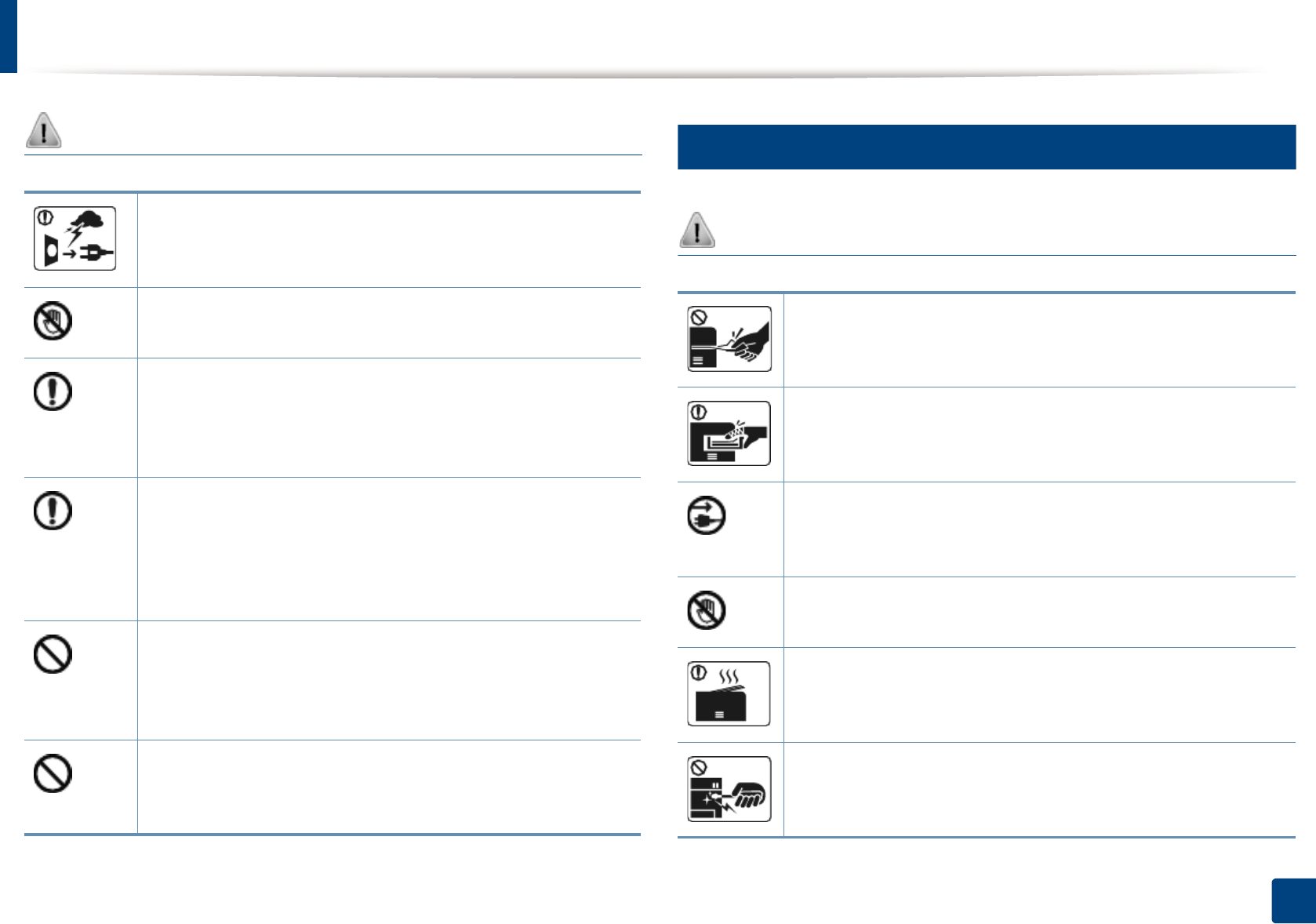
Safety information
10
1. Introduction
Caution
5
Operating method
Caution
During an electrical storm or for a period of non-operation,
remove the power plug from the electrical outlet.
This could result in electric shock or fire.
Be careful, the paper output area is hot.
Burns could occur.
If the machine has been dropped, or if the cabinet appears
damaged, unplug the machine from all interface connections and
request assistance from qualified service personnel.
Otherwise, this could result in electric shock or fire.
If the machine does not operate properly after these instructions
have been followed, unplug the machine from all interface
connections and request assistance from qualified service
personnel.
Otherwise, this could result in electric shock or fire.
If the plug does not easily enter the electrical outlet, do not
attempt to force it in.
Call an electrician to change the electrical outlet, or this could
result in electric shock.
Do not allow pets to chew on the AC power, telephone or PC
interface cords.
This could result in electric shock or fire and/or injury to your pet.
Do not forcefully pull the paper out during printing.
It can cause damage to the machine.
Be careful not to put your hand between the machine and paper
tray.
You may get injured.
This machine's power reception device is the power cord.
To switch off the power supply, remove the power cord from the
electrical outlet.
Be care when replacing paper or removing jammed paper.
New paper has sharp edges and can cause painful cuts.
When printing large quantities, the bottom part of the paper
output area may get hot. Do not allow children to touch.
Burns can occur.
When removing jammed paper, do not use tweezers or sharp metal
objects.
It can damage the machine.
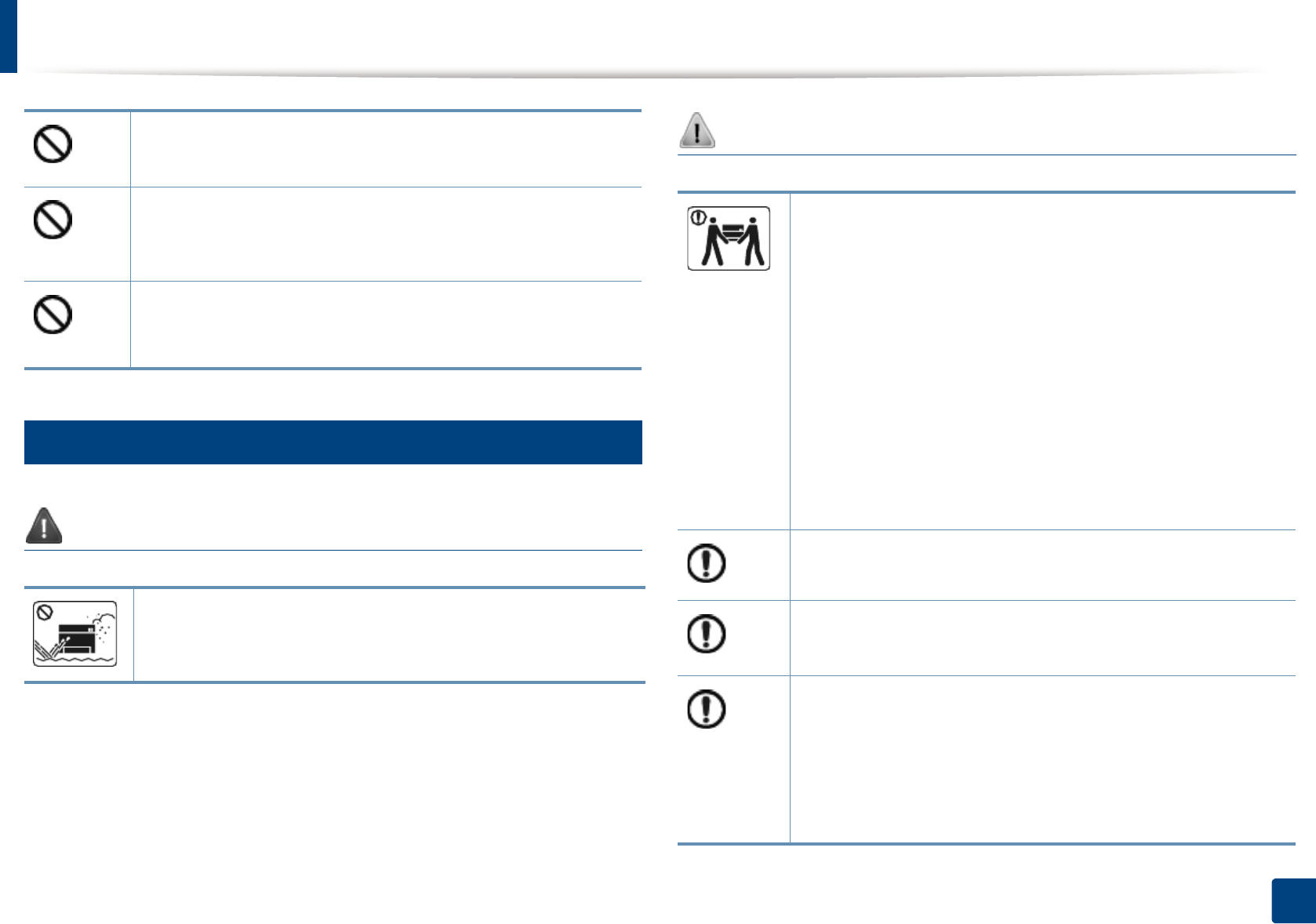
Safety information
11
1. Introduction
6
Installation / Moving
Warning
Caution
Do not allow too many papers to stack up in the paper output tray.
It can damage the machine.
Do not block or push objects into the ventilation opening.
This could result in elevated component temperatures which can
cause damage or fire.
Use of controls or adjustments or performance of procedures other
than those specified herein may result in hazardous radiation
exposure.
Do not place the machine in an area with dust, humidity, or water
leaks.
This could result in electric shock or fire.
Before moving the machine, turn the power off and disconnect all
cords. The information below are only suggestions based on the
units weight.If you have a medical condition that prevents you
from lifting, do not lift the machine. Ask for help, and always use
the appropriate amount of people to left the device safety.
Then lift the machine:
• If the machine weighs under 20 kg (44.09 lbs), lift with 1 person.
• If the machine weighs 20 kg (44.09 lbs) - 40kg (88.18 lbs), lift
with 2 people.
• If the machine weighs more than 40 kg (88.18 lbs), lift with 4 or
more people.
The machine could fall, causing injury or machine damage.
Do not place the machine on an unstable surface.
The machine could fall, causing injury or machine damage.
Use only No.26 AWG1 or larger, telephone line cord, if necessary.
Otherwise, it can cause damage to the machine.
Use the power cord supplied with your machine for safe
operation. If you are using a cord which is longer than 2 meters (6
feet) with a 110 V machine, then the gauge should be 16 AWG or
larger.
Otherwise, it can cause damage to the machine, and could result
in electric shock or fire.
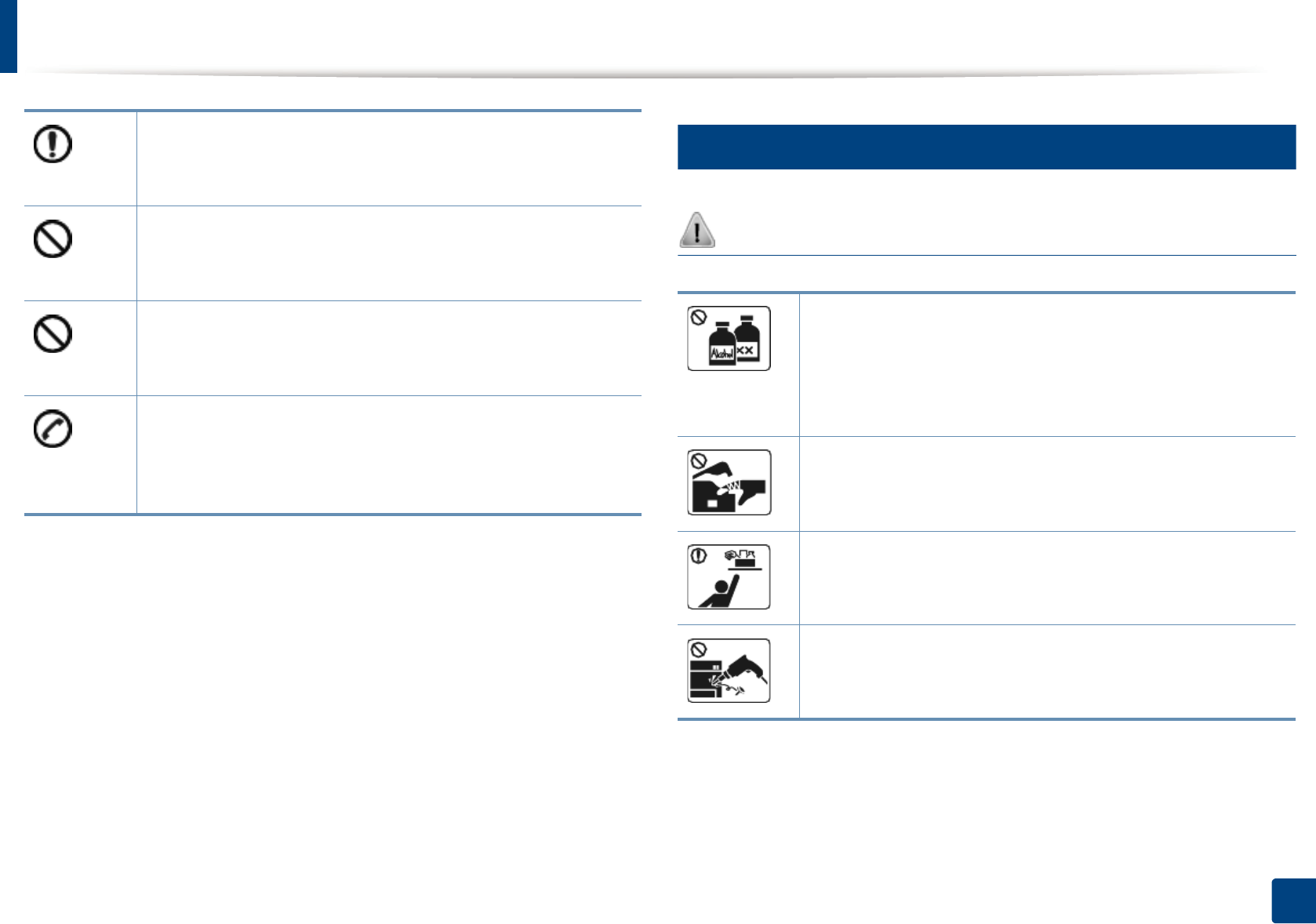
Safety information
12
1. Introduction
7
Maintenance / Checking
Caution
Make sure you plug the power cord into a grounded electrical
outlet.
Otherwise, this could result in electric shock or fire.
Do not overload wall outlets and extension cords.
This can diminish performance, and could result in electric shock
or fire.
Do not put a cover over the machine or place it in an airtight
location, such as a closet.
If the machine is not well-ventilated, this could result in fire.
The machine should be connected tothe power level which is
specified on the label.
If you are unsure and want to check the power level you are using,
contact the electrical utility company.
1. AWG: American Wire Gauge
Unplug this product from the wall outlet before cleaning the
inside of the machine. Do not clean the machine with benzene,
paint thinner or alcohol; do not spray water directly into the
machine.
This could result in electric shock or fire.
When you are working inside the machine replacing supplies or
cleaning the inside, do not operate the machine.
You could get injured.
Keep cleaning supplies away from children.
Children could get hurt.
Do not disassemble, repair or rebuild the machine by yourself.
It can damage the machine. Call a certified technician when the
machine needs repairing.
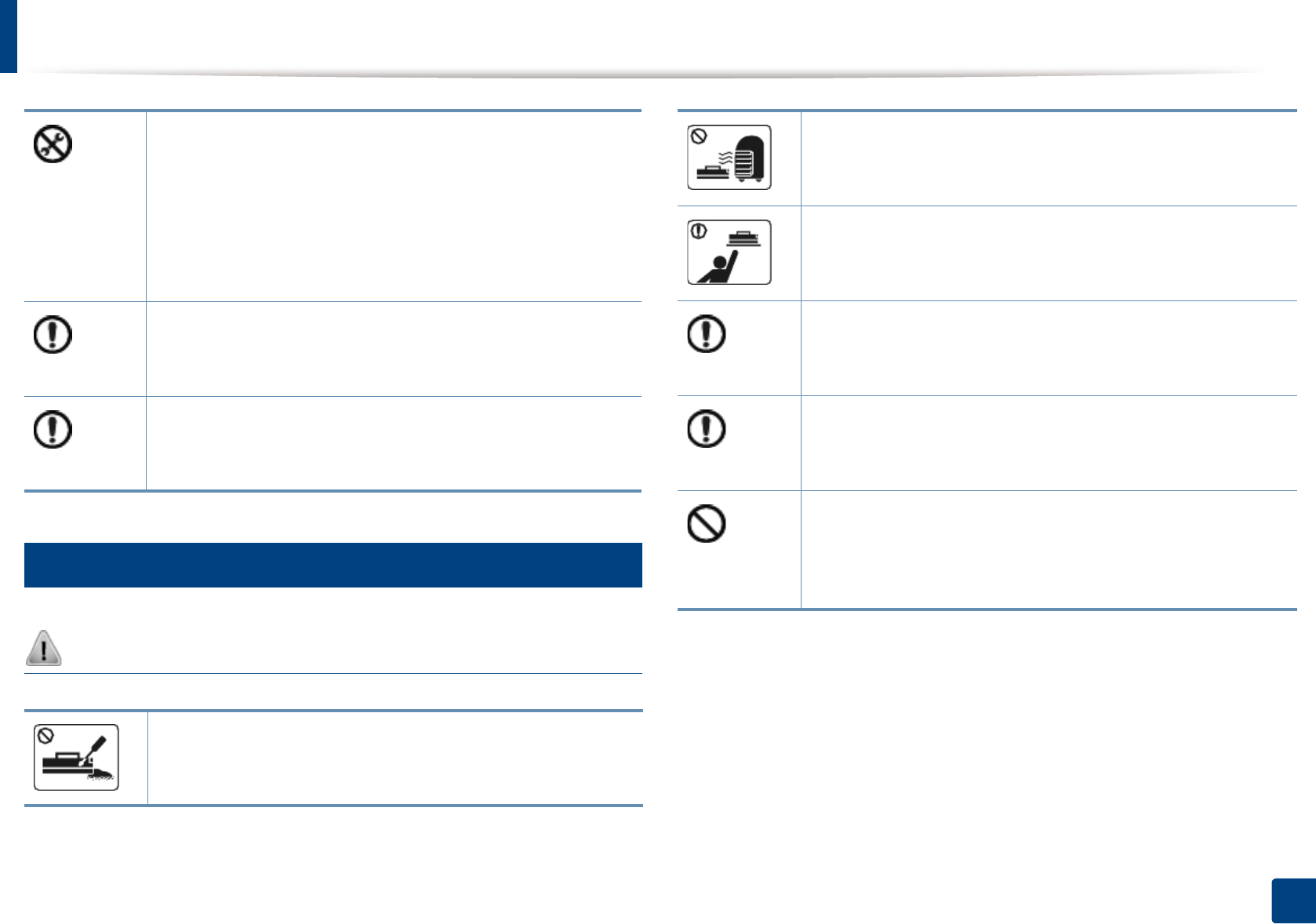
Safety information
13
1. Introduction
8
Supply usage
Caution
• Do not remove any covers or guards that are fastened with
screws.
• Fuser units should only be repaired by a certified service
technician. Repair by non-certified technicians could result in
fire or electric shock.
• The machine should only be repaired by a Samsung service
technician.
To clean and operate the machine, strictly follow the user's guide
provided with the machine.
Otherwise, you could damage the machine.
Keep the power cable and the contact surface of the plug clean
from dust or water.
Otherwise, this could result in electric shock or fire.
Do not disassemble the toner cartridge.
Toner dust can be dangerous if inhaled or ingested.
Do not burn any of the supplies such as toner cartridge or fuser
unit.
This could cause an explosion or uncontrollable fire.
When storing supplies such as toner cartridges, keep them away
from children.
Toner dust can be dangerous if inhaled or ingested.
When changing the toner cartridge or removing jammed paper,
be careful not to let toner dust touch your body or clothes.
Toner dust can be dangerous if inhaled or ingested.
When toner gets on your clothing, do not use hot water to wash
it.
Hot water sets toner into fabric. Use cold water.
Using recycled supplies, such as toner, can cause damage to the
machine.
In case of damage due to the use of recycled supplies, a service
fee will be charged.
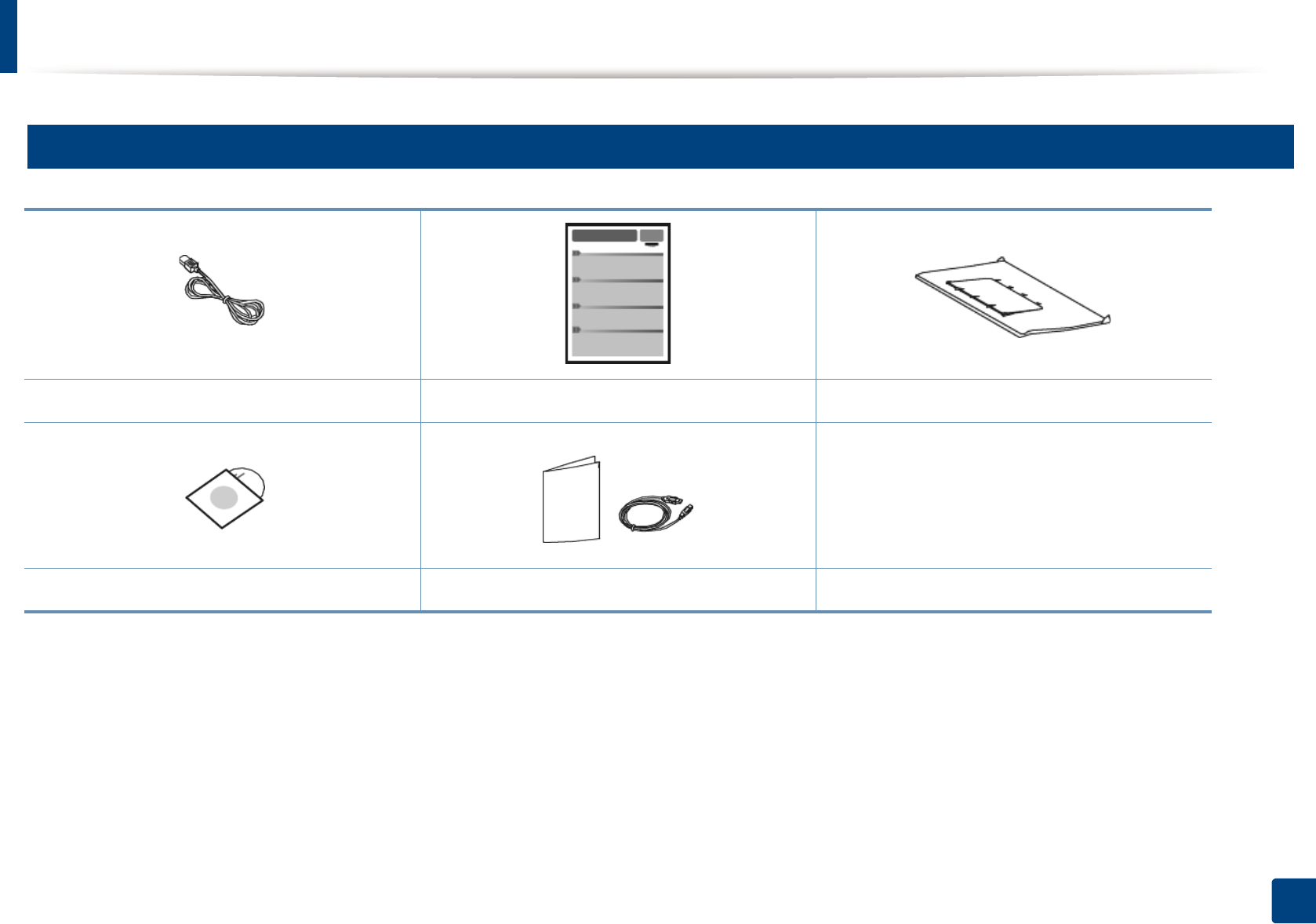
14
1. Introduction
Machine overview
9
Accessories
Power cord Quick installation guide Output stacker1
1. Refer to the Quick Install Guide to attach the output stacker to the machine.
Software CD2
2. The software CD contains the printer drivers and software applications.
Misc. accessories3
3. Miscellaneous accessories included with your machine may vary by country of purchase and specific model.
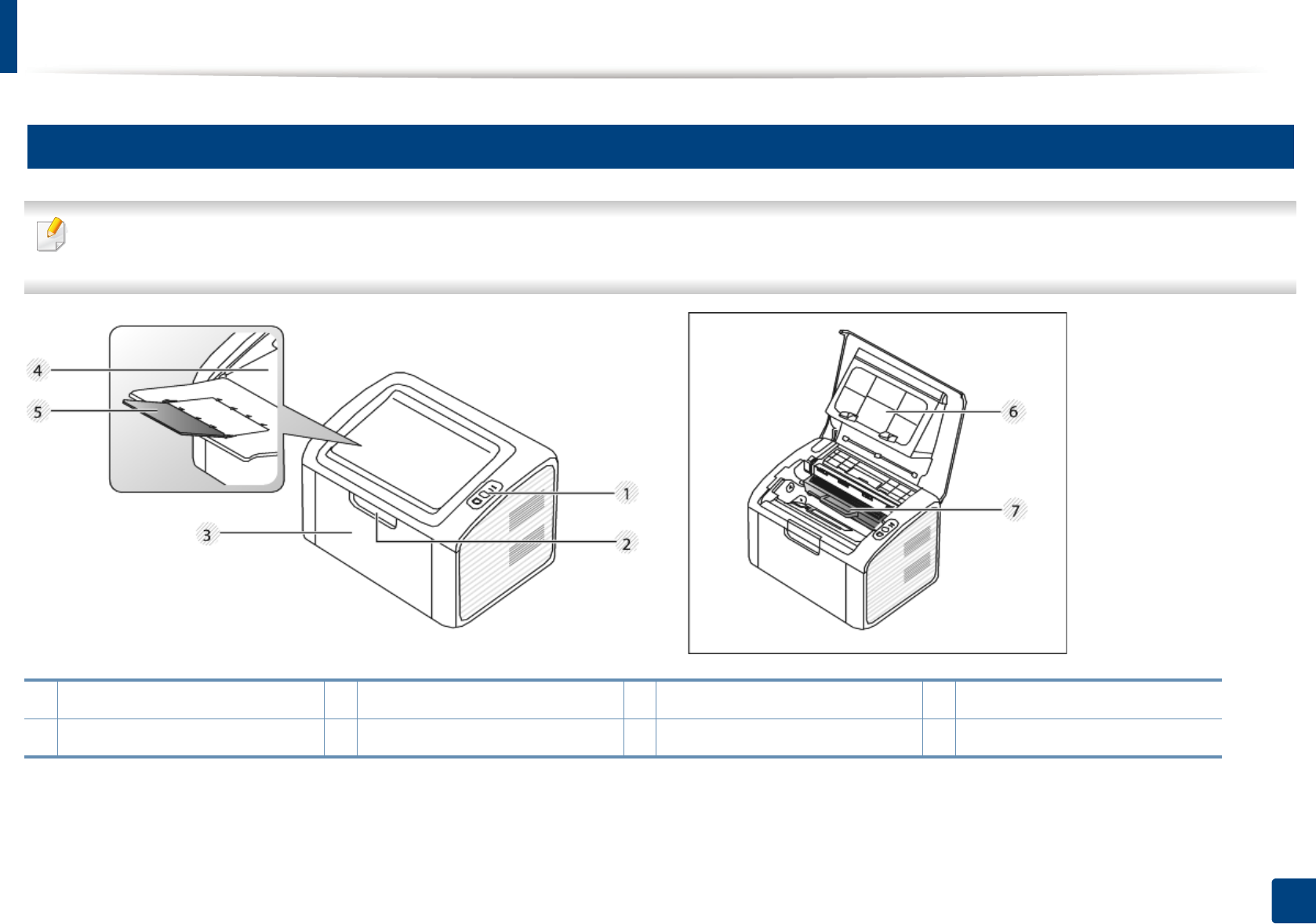
Machine overview
15
1. Introduction
10
Front view
• This illustration may differ from your machine depending on its model.
• Some features and optional goods may not be available depending on model or country (see "Features by models" on page 4).
1 Control panel 3 Tray 5 Output support 7 Toner cartridge
2 Tray handle 4 Output tray 6 Top cover
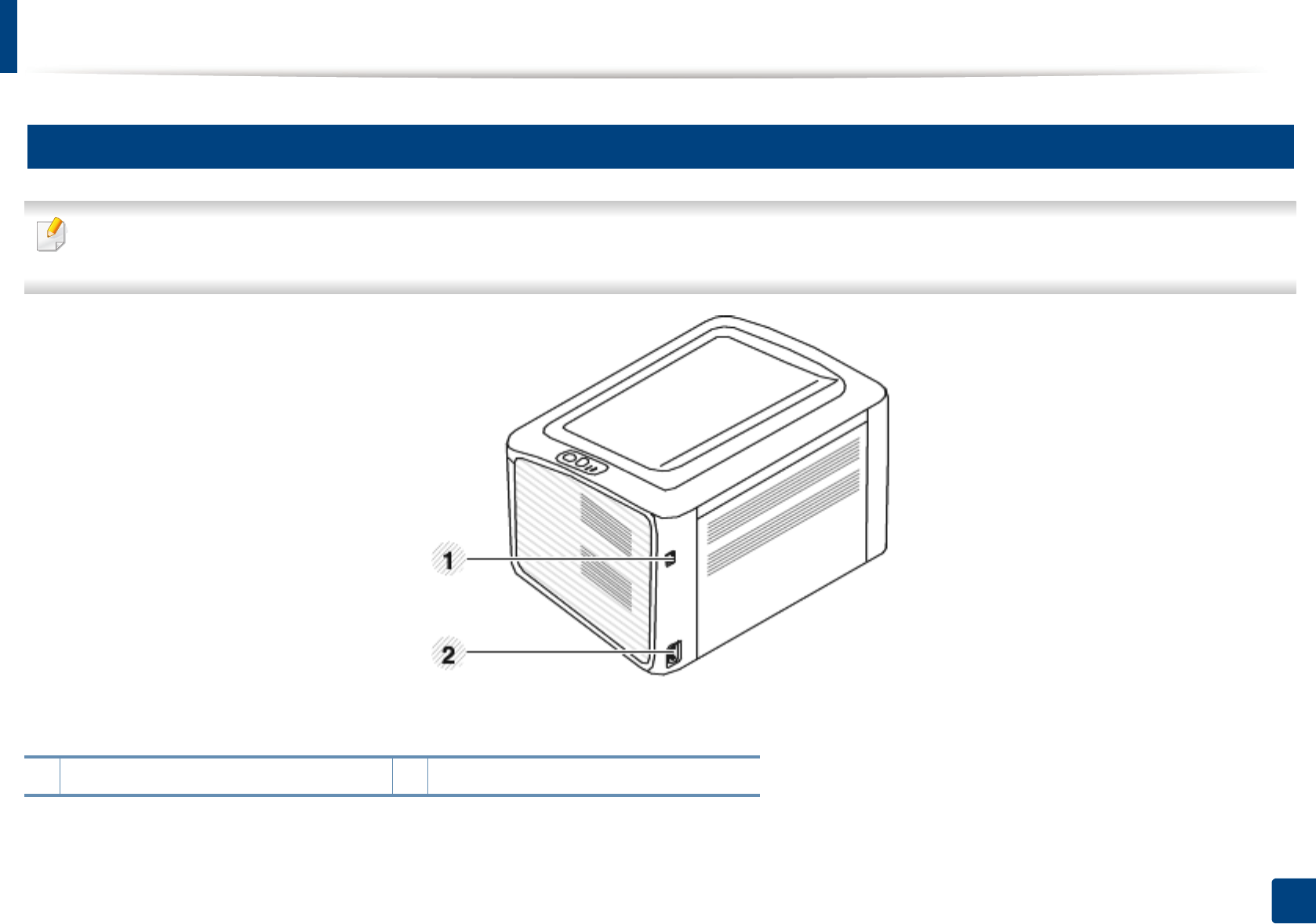
Machine overview
16
1. Introduction
11
Rear view
• This illustration may differ from your machine depending on its model.
• Some features and optional goods may not be available depending on model or country (see "Features by models" on page 4).
1 USB port 2 Power receptacle
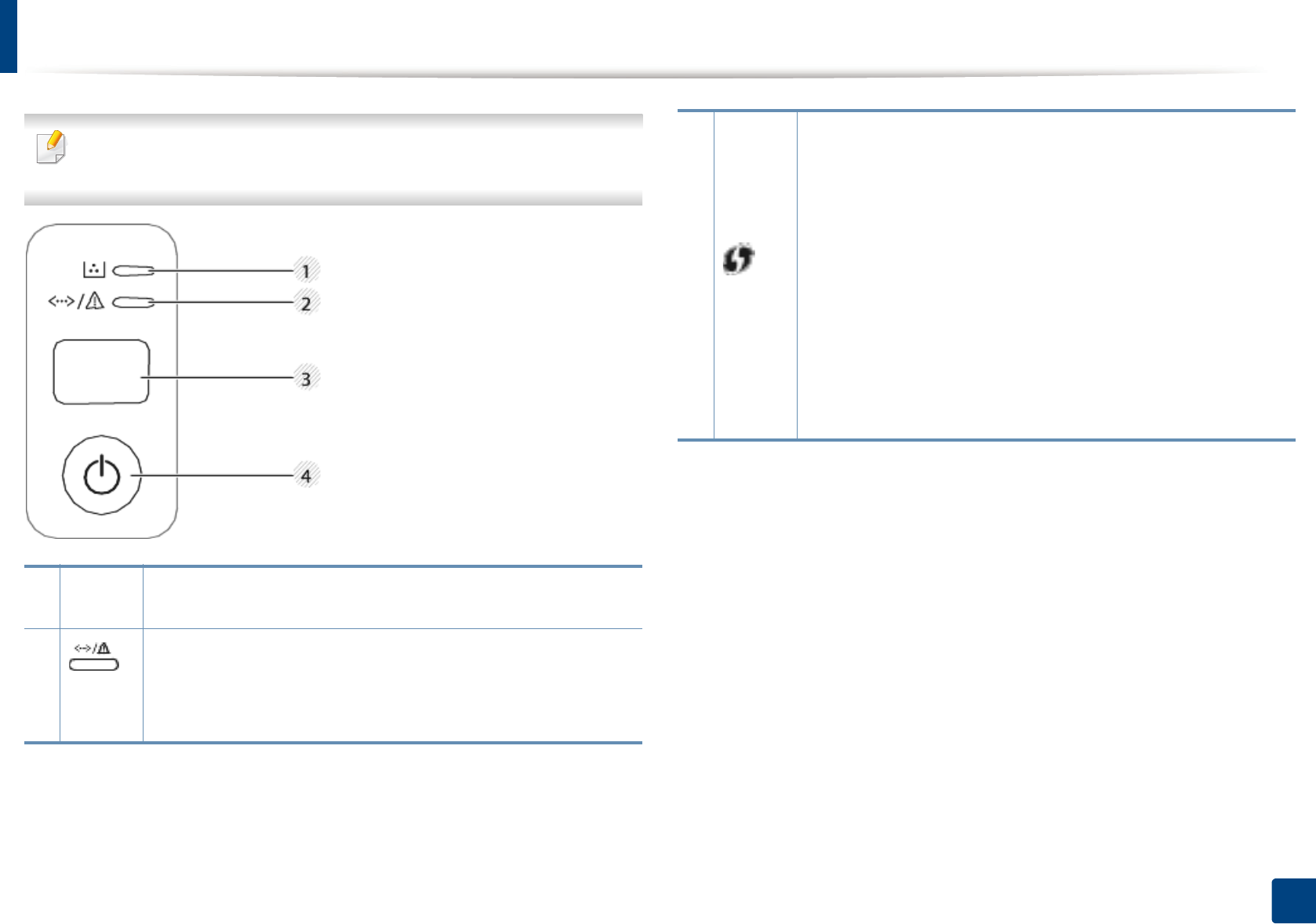
17
1. Introduction
Control panel overview
This control panel may differ from your machine depending on its model.
There are various types of control panels.
1Toner
LED
Shows the status of the toner (see "Status LED" on page 7).
2
(Status
LED)
Shows the status of your machine (see "Status LED" on page 7).
3
(WPS)
Configures the wireless network connection easily without a
computer (see "Wireless network setup" on page 17).
•Configuration sheet
- Press and hold this button for about 10 seconds until the
green LED blinks slowly, and release.
•Prints supplies info report / error report
- Press and hold this button for about 15 seconds until the
green LED on, and release.
•Manual print
- Press this button each time you load a sheet of paper in the
tray if you have selected Manual Feeder for Source in your
printer driver.
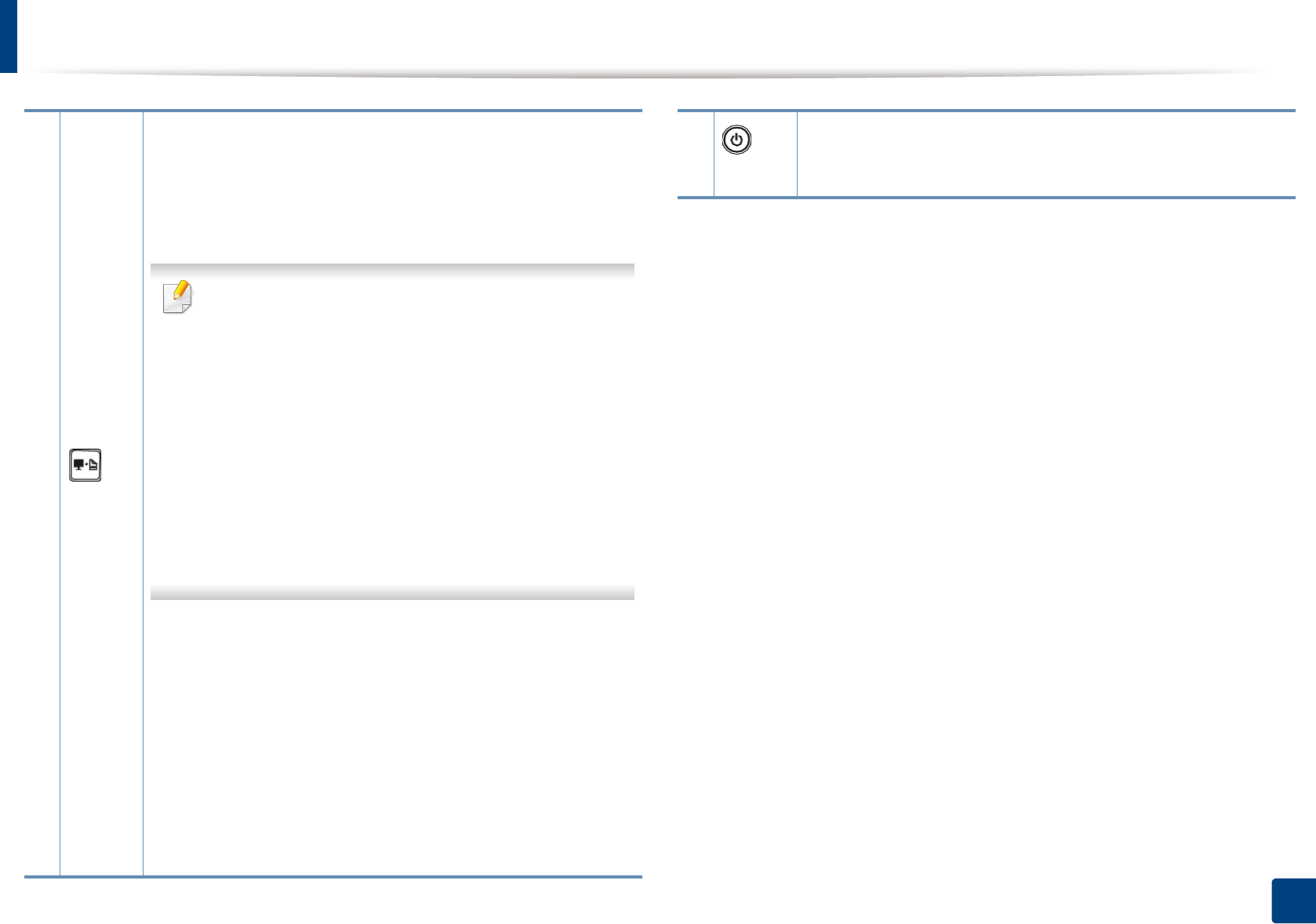
Control panel overview
18
1. Introduction
3
(Print
screen)
•Prints the screen
- Press this button and the green LED will start blinking. If
you want to print only the active screen, release the button
when the green LED stops blinking. If you want to print the
whole screen, release the button while it’s blinking.
•Print Screen can only be used in the Windows and
Macintosh operating systems.
• You can only use this function with USB-connected
machine.
• When printing the active window/whole monitor
screen using the print screen button, the machine may
use more toner depending on what is being printed.
• You can only use this function if the machine’s Easy
Printer Manager program is installed if you are a
macintosh OS user, you need to enable Screen Print
Settings from the Easy Printer Manager to use the
Print Screen feature.
•Configuration sheet
- Press and hold this button for about 10 seconds until the
green LED blinks slowly, and release.
•Prints supplies info report / error report
- Press and hold this button for about 15 seconds until the
green LED on, and release.
•Manual print
- Press this button each time you load a sheet of paper in the
tray if you have selected Manual Feeder for Source in your
printer driver.
4
(Power)
You can turn the power off or wake the machine up from the
sleep mode with this button.
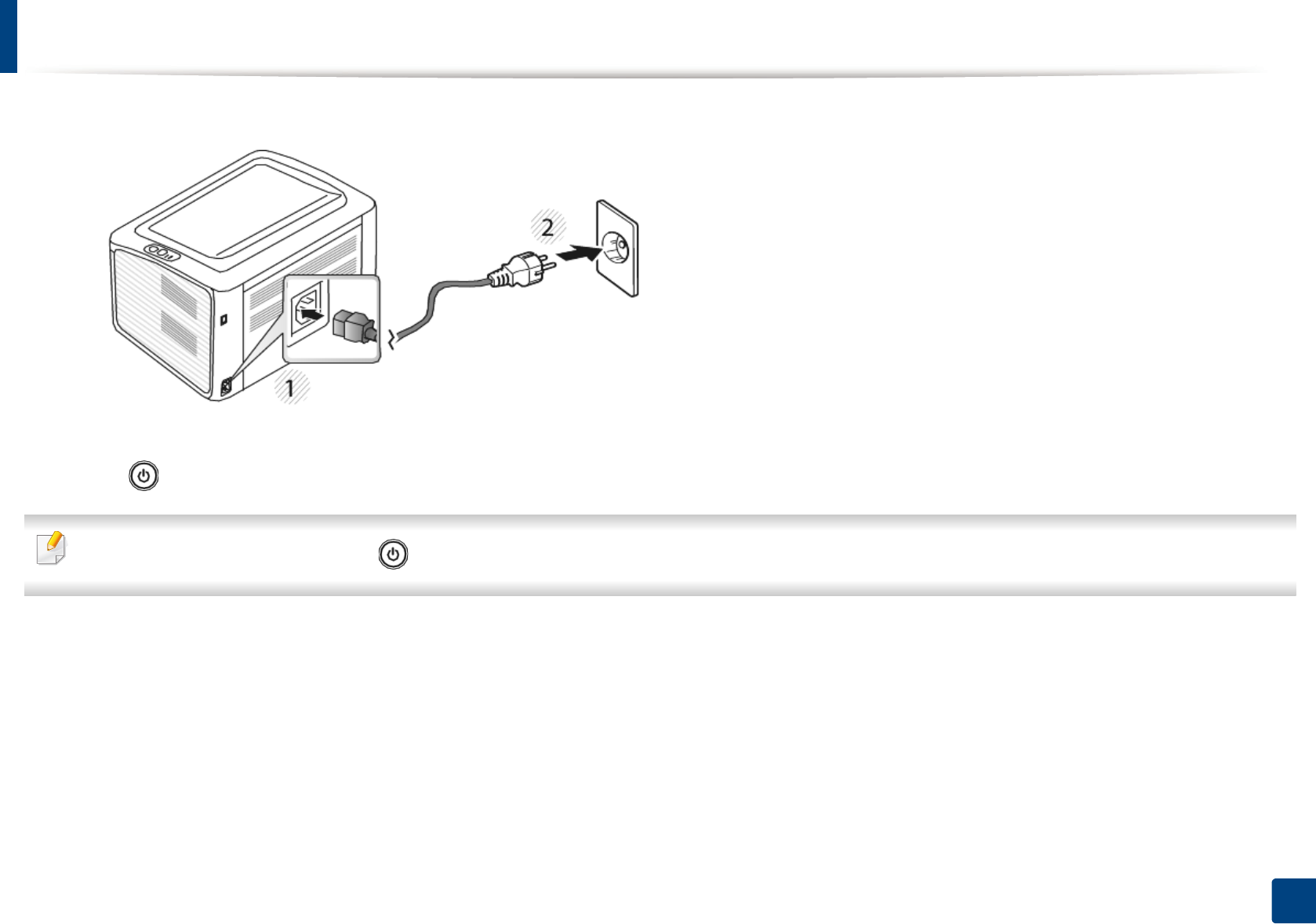
19
1. Introduction
Turning on the machine
1Connect the machine to the electricity supply first.
2 press (power) on the control panel.
If you want to turn the power off, press (power) on the control panel.
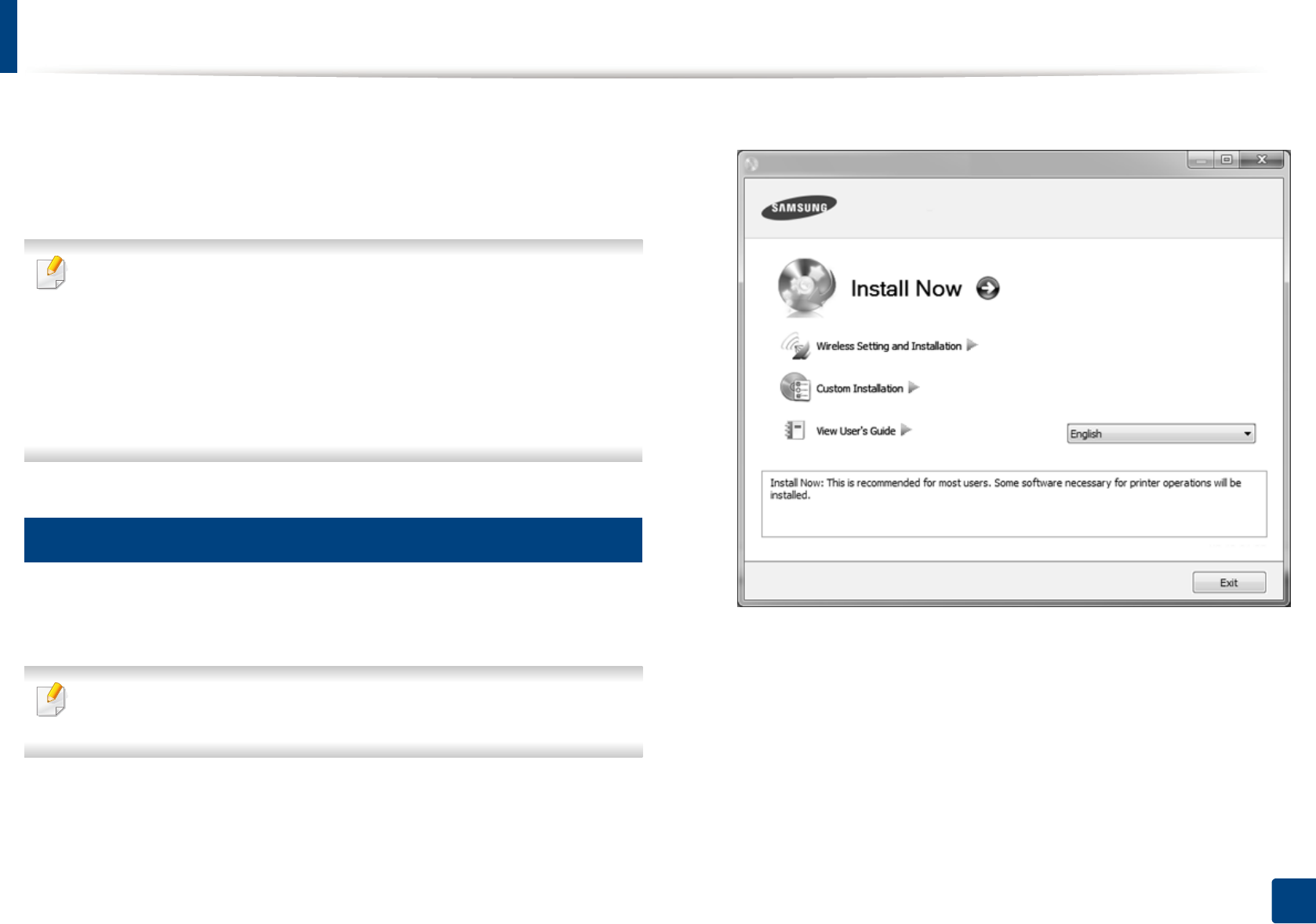
20
1. Introduction
Installing the driver locally
A locally connected machine is a machine directly attached to your computer
using the cable. If your machine is attached to a network, skip the following
steps below and go on to installing a network connected machine’s driver (see
Advanced Guide).
• If you are a Macintosh or Linux OS user, refer to the "Software installation"
on page 1.
• The installation window in this User’s Guide may differ depending on the
machine and interface in use.
• Selecting Custom Installation allows you to choose which programs to
install.
• Only use a USB cable no longer than 3 meters (118 inches).
12
Windows
1Make sure that the machine is connected to your computer and
powered on.
If the “Found New Hardware Wizard” appears during the installation
procedure, click Cancel to close the window.
2 Insert the supplied software CD into your CD-ROM drive.
The software CD should automatically run and an installation window
will appear.
3 Select Install Now.
4 Read License Agreement, and select I accept the terms of the License
Agreement. Then, click Next.
5 Follow the instructions in the installation window.
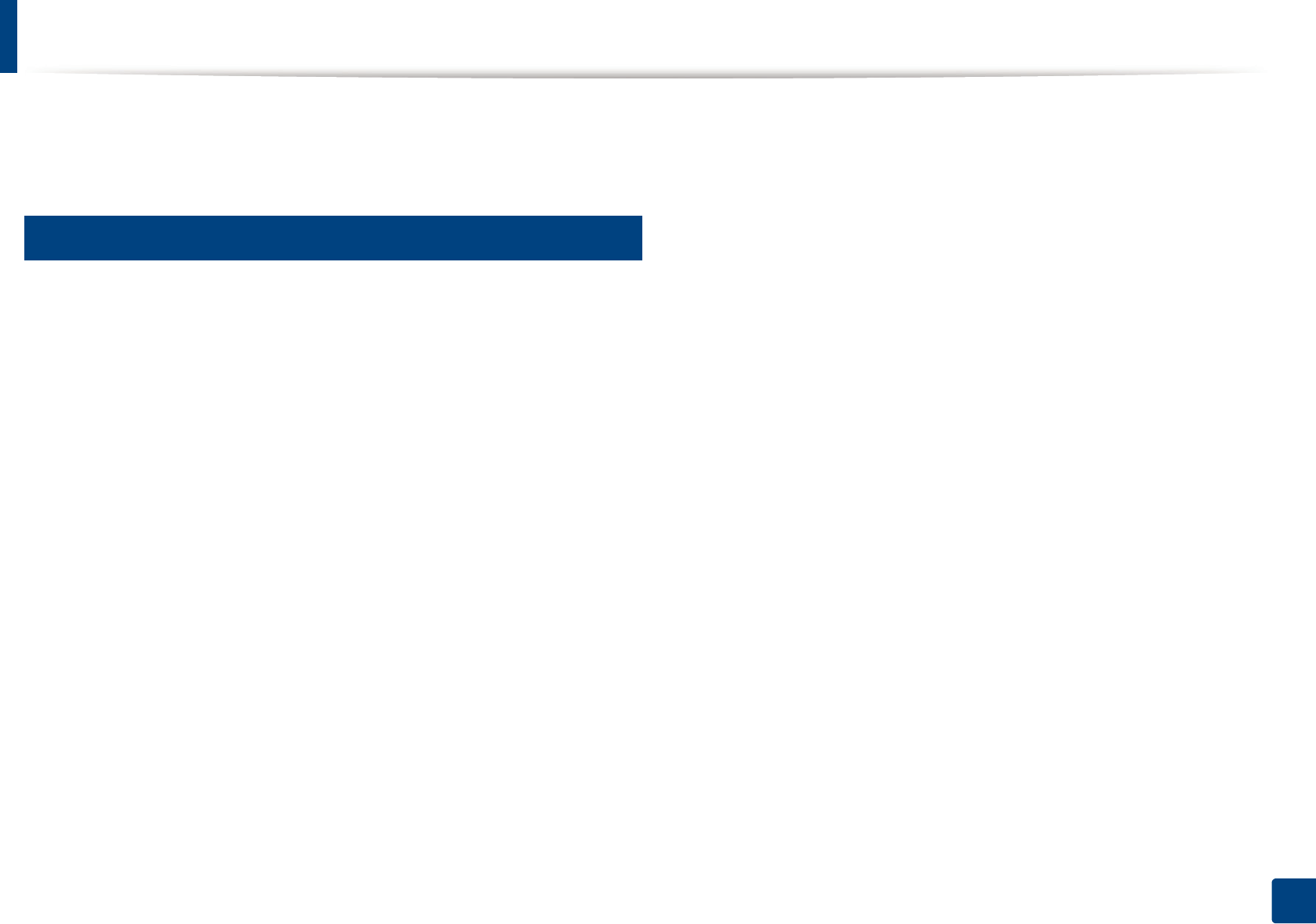
21
1. Introduction
Reinstalling the driver
If the printer driver does not work properly, follow the steps below to reinstall
the driver.
13
Windows
1Make sure that the machine is connected to your computer and
powered on.
2 From the Start menu, select Programs or All Programs > Samsung
Printers > your printer driver name > Uninstall.
3 Follow the instructions in the installation window.
4 Insert the software CD into your CD-ROM drive and install the driver
again (see "Installing the driver locally" on page 19).
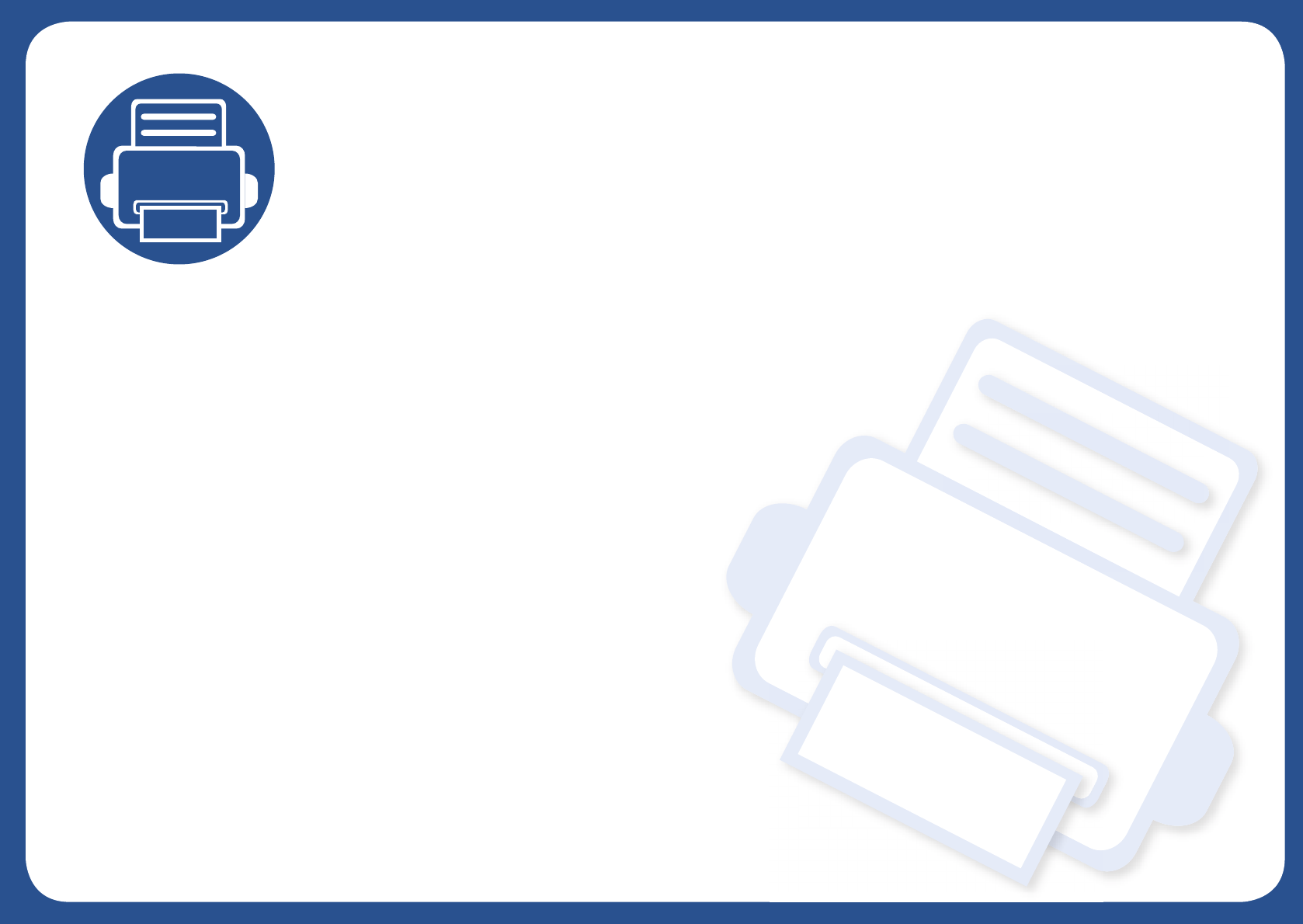
2. Learning the Basic Usage
After installation is complete, you may want to set the machine’s default settings. Refer to the next section if you would
like to set or change values. This chapter provides information about the overall menu structure and the basic setup
options.
• Printing a demo page 2
• Media and tray 3
• Basic printing 12
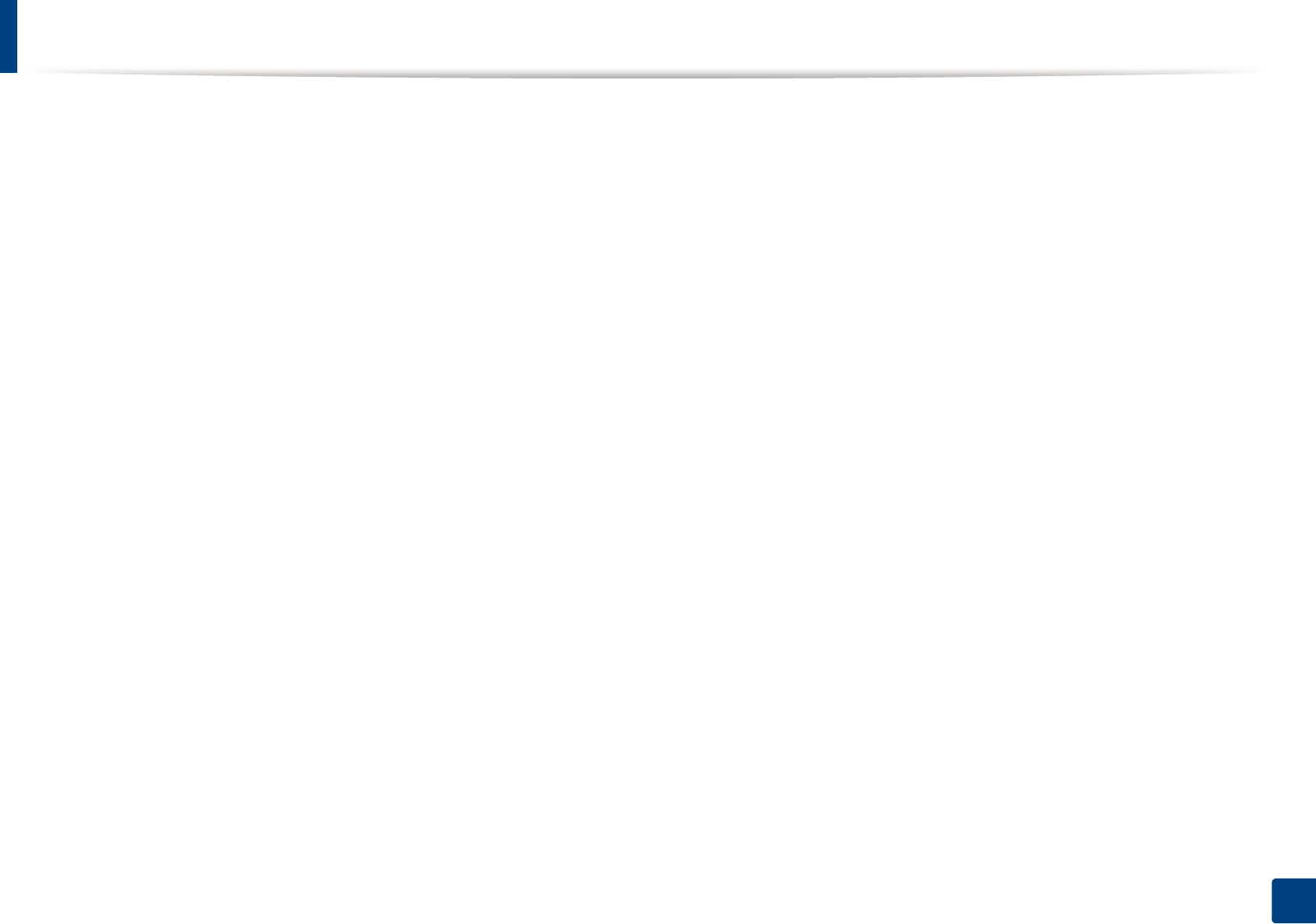
23
2. Learning the Basic Usage
Printing a demo page
Print a demo page to make sure that the machine is operating correctly (Windows only).
To print a demo page:
• Open the Printing Preferences (see "Opening printing preferences" on page 13) > Samsung tab > Demo page
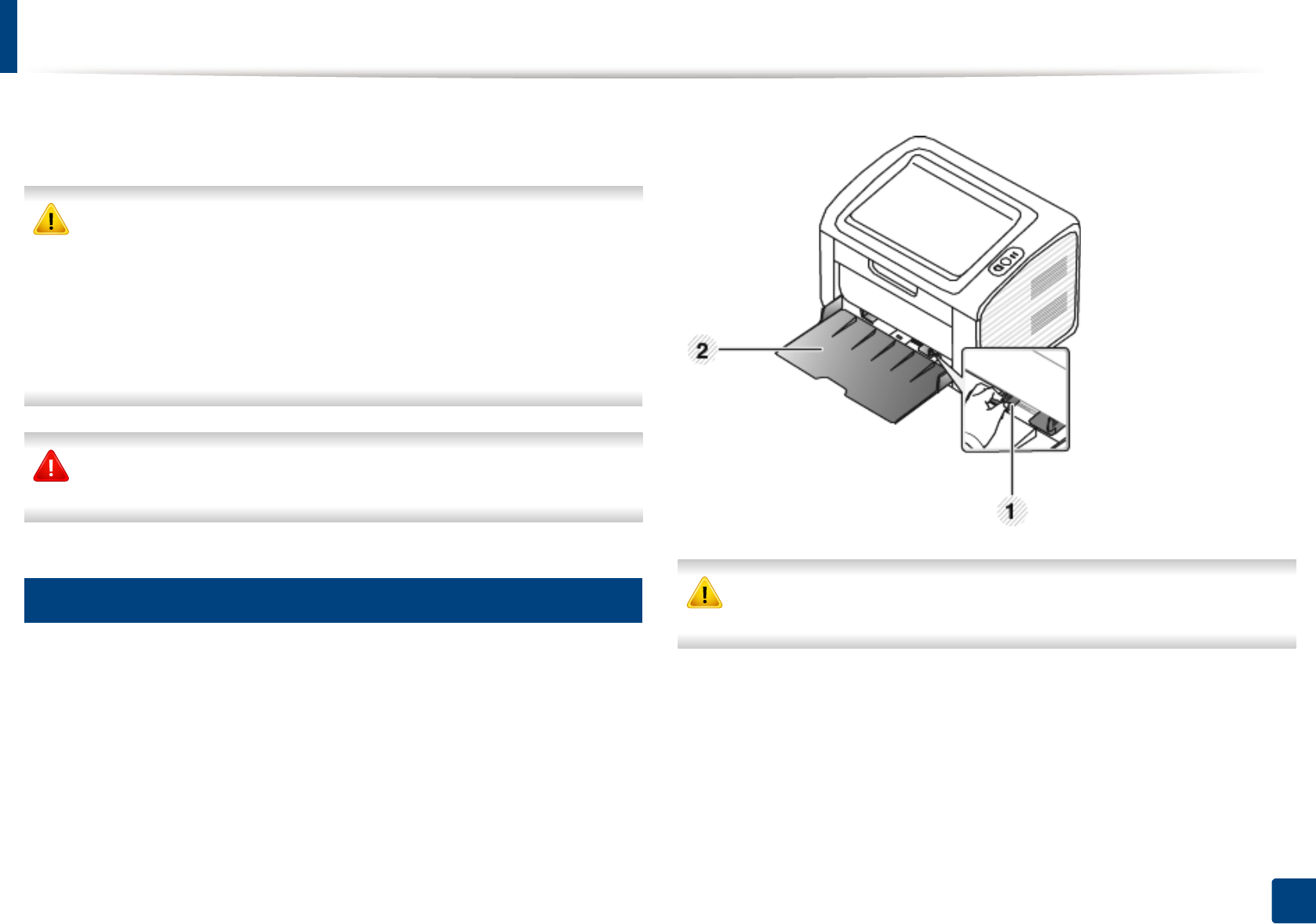
24
2. Learning the Basic Usage
Media and tray
This chapter provides information on how to load print media into your
machine.
• Using print media that does not meet these specifications may cause
problems or require repairs. Such repairs are not covered by Samsung’s
warranty or service agreements.
• Make sure not to use the inkjet photo paper with this machine. It could
cause damage to the machine.
• Using inflammable print media can cause a fire.
• Use designated print media (see "Print media specifications" on page 4).
The use of inflammable media or foreign materials left in the printer may
lead to overheating of the unit and, in rare cases may cause a fire.
1
Tray overview
To change the size, you need to adjust the paper guide.
If you do not adjust the guide, it may cause paper registration, image skew,
or jamming of the paper.
1Paper width guide
2Tray
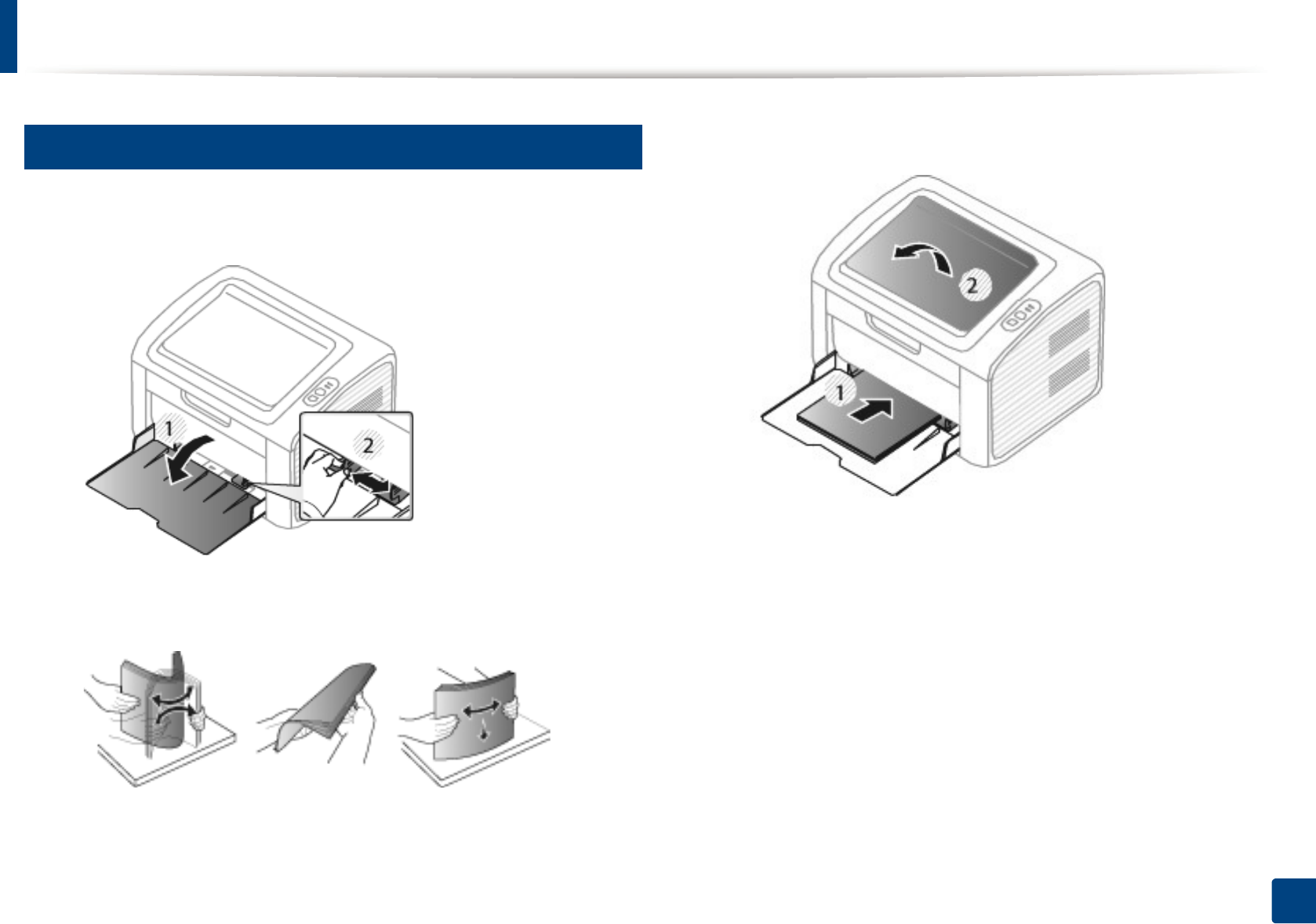
Media and tray
25
2. Learning the Basic Usage
2
Loading paper in the tray
1Open the tray. Then, adjust the tray size to the media size you are loading
(see "Tray overview" on page 3).
2 Flex or fan the edge of the paper stack to separate the pages before
loading papers.
3 Place the paper with the side you want to print facing up andopen the
output tray.
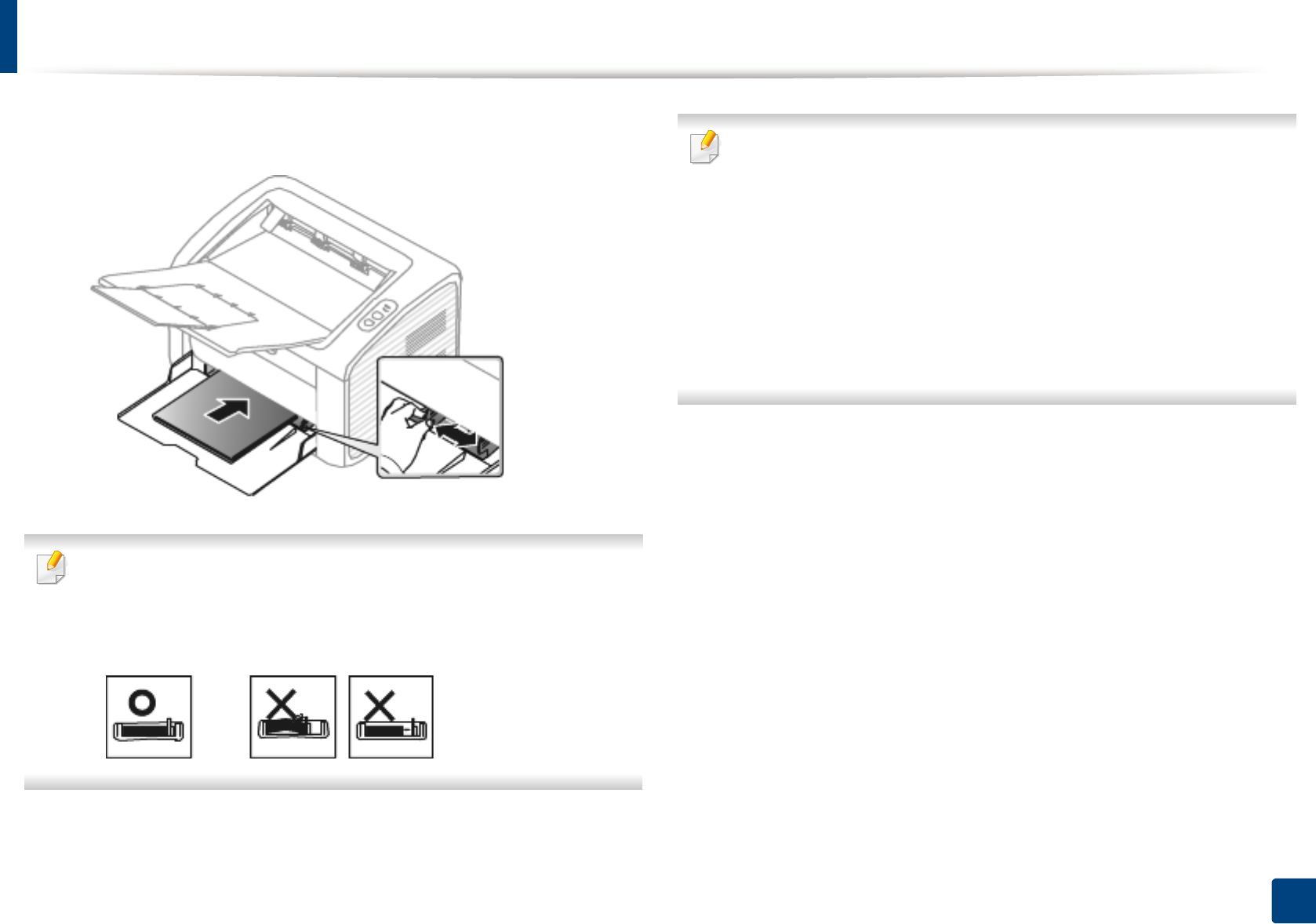
Media and tray
26
2. Learning the Basic Usage
4 Squeeze the paper width guide and slide it to the edge of the paper stack
without causing it to bend.
• Do not push the paper width guide too far causing the media to warp.
• Do not use a paper with a leading-edge curl, it may cause a paper jam or
the paper can be wrinkled.
• If you do not adjust the paper width guide, it may cause paper jams.
5 When you print a document, set the paper type and size for the tray (see
"Setting the paper size and type" on page 11).
The settings made from the machine driver override the settings on the
control panel.
a To print in application, open an application and start the print menu.
b Open Printing Preferences (see "Opening printing preferences" on
page 13).
c Press the Paper tab in Printing Preferences, and select an appropriate
paper type.
For example, if you want to use a label, set the paper type to Label.
d Select Manual Feeder in paper source, then press OK.
e Start printing in application.
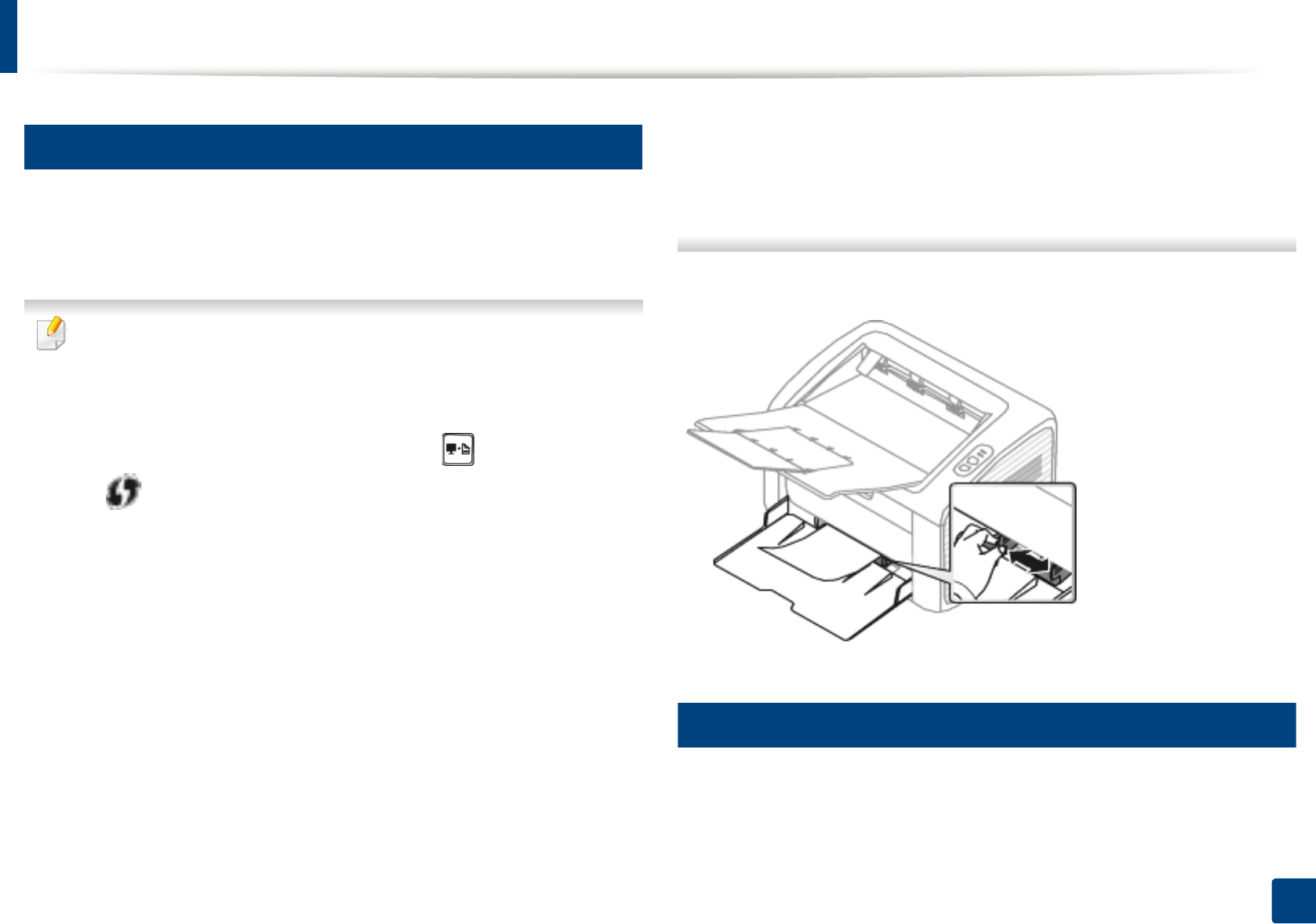
Media and tray
27
2. Learning the Basic Usage
3
Manual feeding in the tray
The manual feeder can hold special sizes and types of print material, such as
postcards, note cards, and envelopes (see "Print media specifications" on page
4).
Tips on using the manual feeder
• Load only one type, size and weight of print media at time in the manual
feeder.
•If you select Paper > Source > Manual Feeder for the paper source in
your software application, you need to press (Print screen) or
(WPS) button each time you print a page and load only one type,
size and weight of print media at a time on the manual tray.
• To prevent paper jams, do not add paper while printing when there is still
paper in the manual feeder.
• Print media should be loaded face up with the top edge going into the
manual feeder first and be placed in the center of the tray.
• To ensure printing quality and to prevent paper jams, only load the
available paper (see "Print media specifications" on page 4).
• Flatten any curl on postcards, envelopes, and labels before loading them
into the manual feeder.
• When printing on special media, you must follow the loading guidelines
(see "Printing on special media" on page 6).
• When the machine is in a power save mode, the machine does not feed
paper from the manual feeder. Wake up the machine by pressing the
power button before using the manual feeder.
4
Printing on special media
The table below shows the special media usable in each tray.
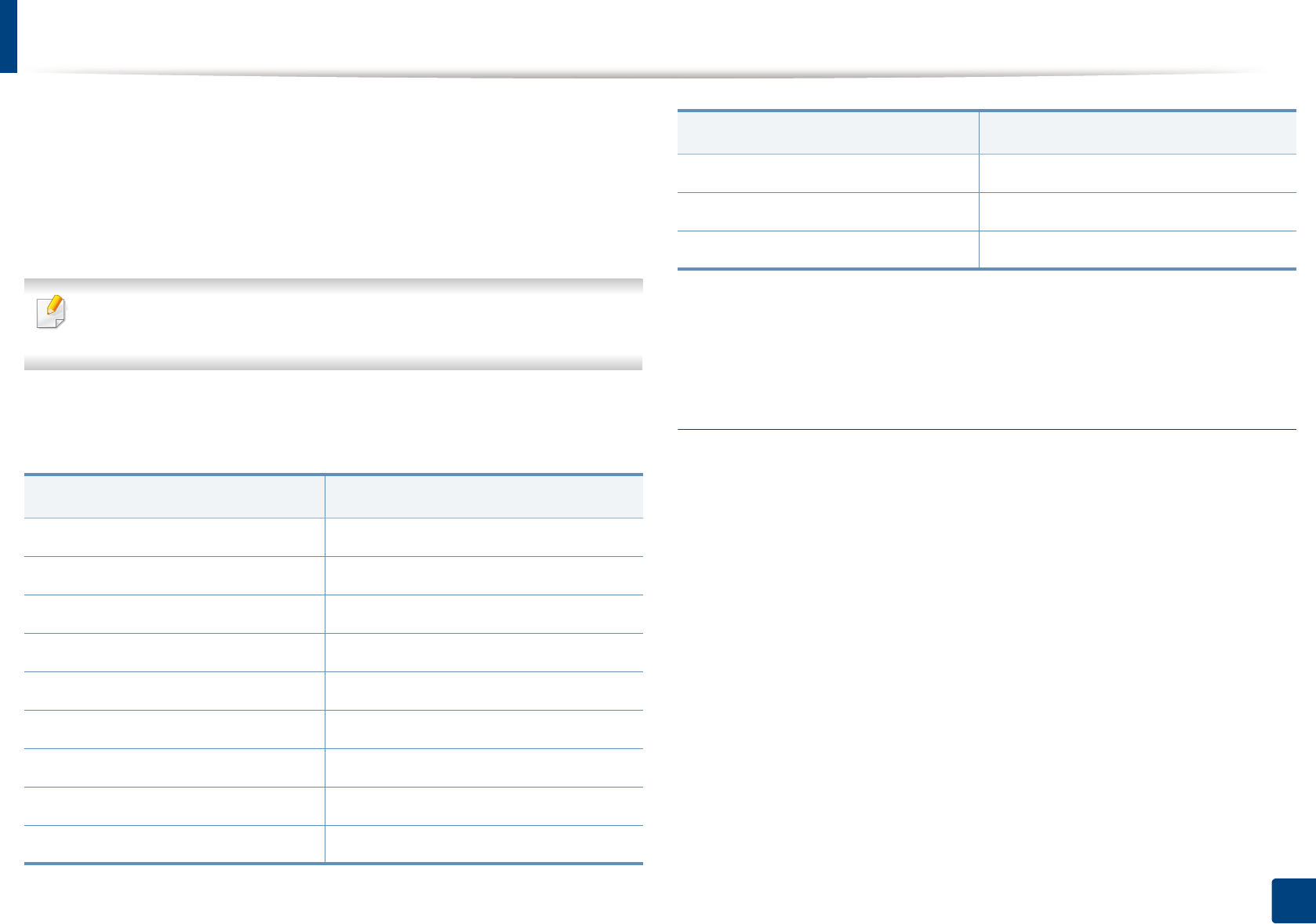
Media and tray
28
2. Learning the Basic Usage
The media types are shown in the Printing Preferences. To get the higest
printing quality, select the proper media type from the Printing Preferences
window > Paper tab > Paper Type (see "Opening printing preferences" on page
13).
For example, if you want to print on labels, select Labels for Paper Type.
When using special media, we recommend you feed one sheet at a time (see
"Print media specifications" on page 4).
To see for paper weights for each sheet, refer to "Print media specifications" on
page 4.
(●: Included, Blank: Not available)
Envelope
Printing successfully on envelopes depends upon the quality of the envelopes.
Types Tray1
Plain ●
Thick ●
Thin ●
Bond ●
Color ●
CardStock ●
Labels ●
Envelope ●
Preprinted ●
Cotton ●
Recycled ●
Archive ●
1. The paper types available manual feeding in tray.
Types Tray1
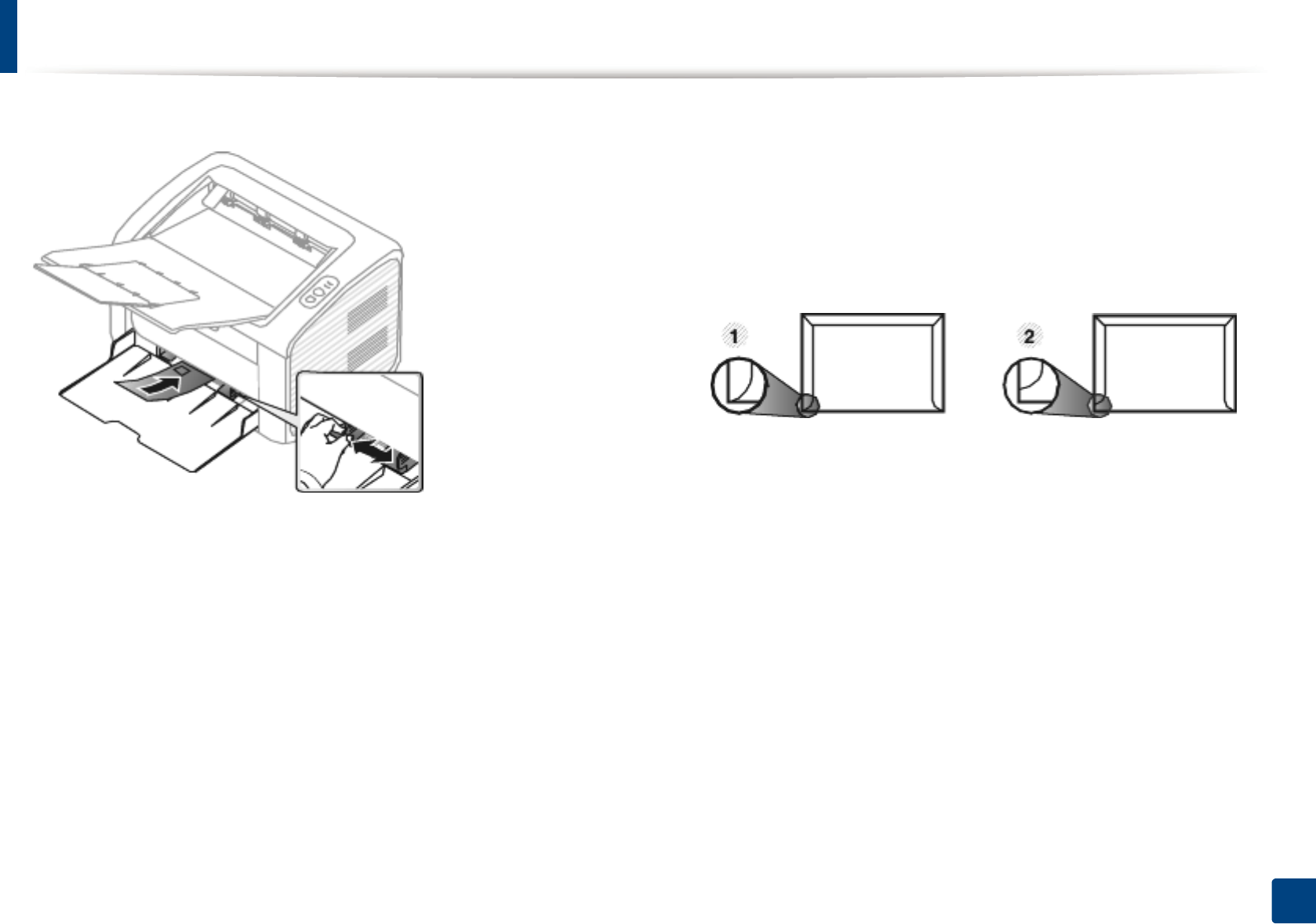
Media and tray
29
2. Learning the Basic Usage
To print an envelope, place it as shown in the following figure.
If you select Envelope from the Printing Preferences window, but the printed
images get easily erased, select Thick Envelope and try printing again.
However, this might cause some noise when printing.
• When selecting envelopes, consider the following factors:
-Weight: should not exceed 90 g/m2 otherwise; jams may occur.
-Construction: should lie flat with less than 6 mm curl and should not
contain air.
-Condition: should not be wrinkled, nicked, nor damaged.
-Temperature: should resist the heat and pressure of the machine
during operation.
• Use only well-constructed envelopes with sharp and well-creased folds.
• Do not use stamped envelopes.
• Do not use envelopes with clasps, snaps, windows, coated lining, self-
adhesive seals, or other synthetic materials.
• Do not use damaged or poorly made envelopes.
• Be sure the seam at both ends of the envelope extends all the way to the
corner of the envelope.
1Acceptable
2Unacceptable
• Envelopes with a peel-off adhesive strip or with more than one flap that
folds over to seal must use adhesives compatible with the machine’s fusing
temperature for 0.1 second (about 170°C (338 °F)). The extra flaps and strips
might cause wrinkling, creasing, or jams, and may even damage the fuser.
• For the best print quality, position margins no closer than 15 mm from the
edges of the envelope.
• Avoid printing over the area where the envelope’s seams meet.
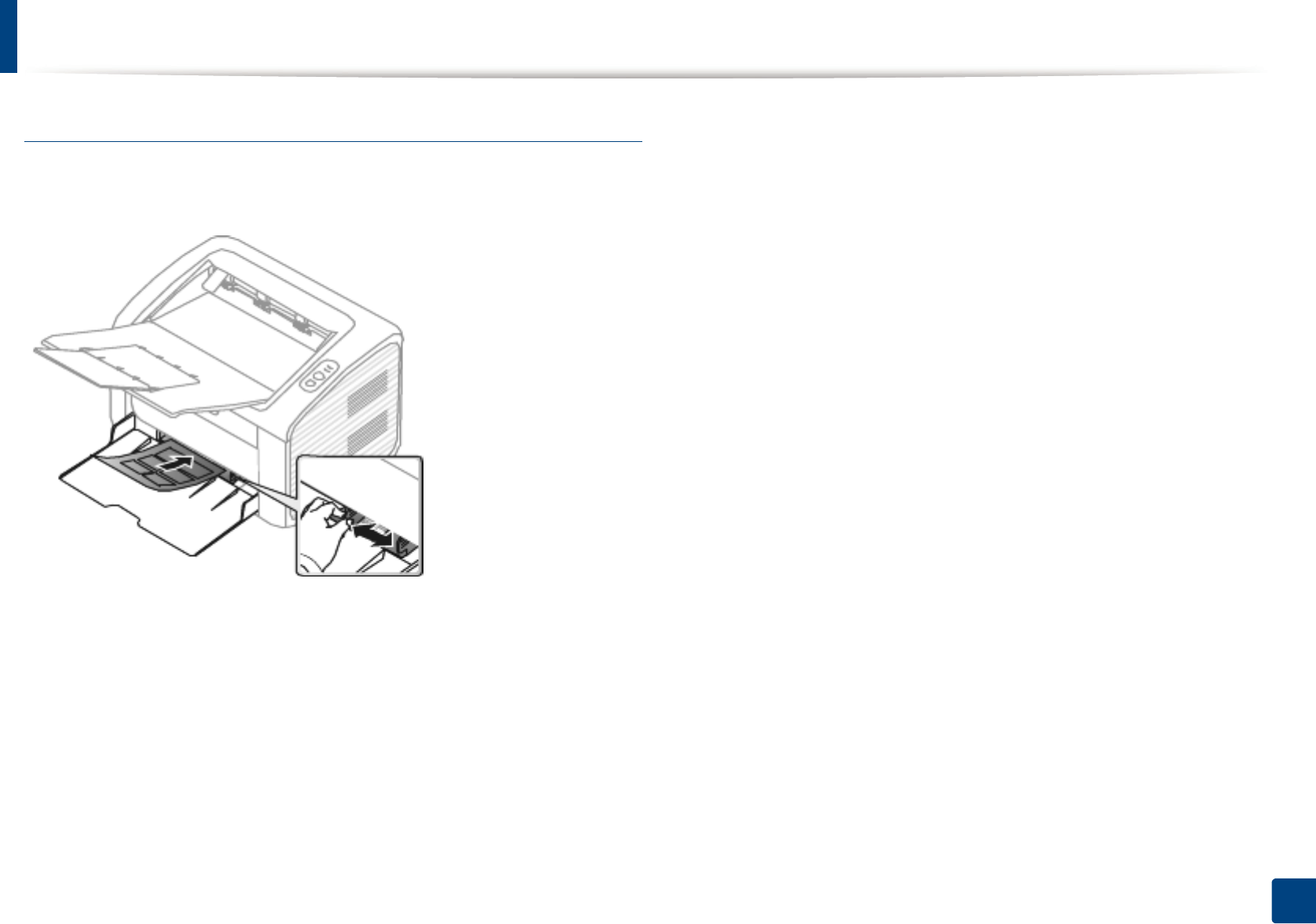
Media and tray
30
2. Learning the Basic Usage
Labels
To avoid damaging the machine, use only labels designed for use in laser
printers.
• When selecting labels, consider the following factors:
-Adhesives: Should be stable at your machine’s fusing temperature.
Check your machine’s specifications to view the fusing temperature
(about 170°C (338°F)).
-Arrangement: Only use labels with no exposed backing between them.
Labels can peel off sheets that have spaces between the labels, causing
serious jams.
-Curl: Must lie flat with no more than 13 mm of curl in any direction.
-Condition: Do not use labels with wrinkles, bubbles, or other
indications of separation.
• Make sure that there is no exposed adhesive material between labels.
Exposed areas can cause labels to peel off during printing, which can cause
paper jams. Exposed adhesive can also cause damage to machine
components.
• Do not run a sheet of labels through the machine more than once. The
adhesive backing is designed for only a single pass through the machine.
• Do not use labels that are separating from the backing sheet or are wrinkled,
bubbled, or otherwise damaged.
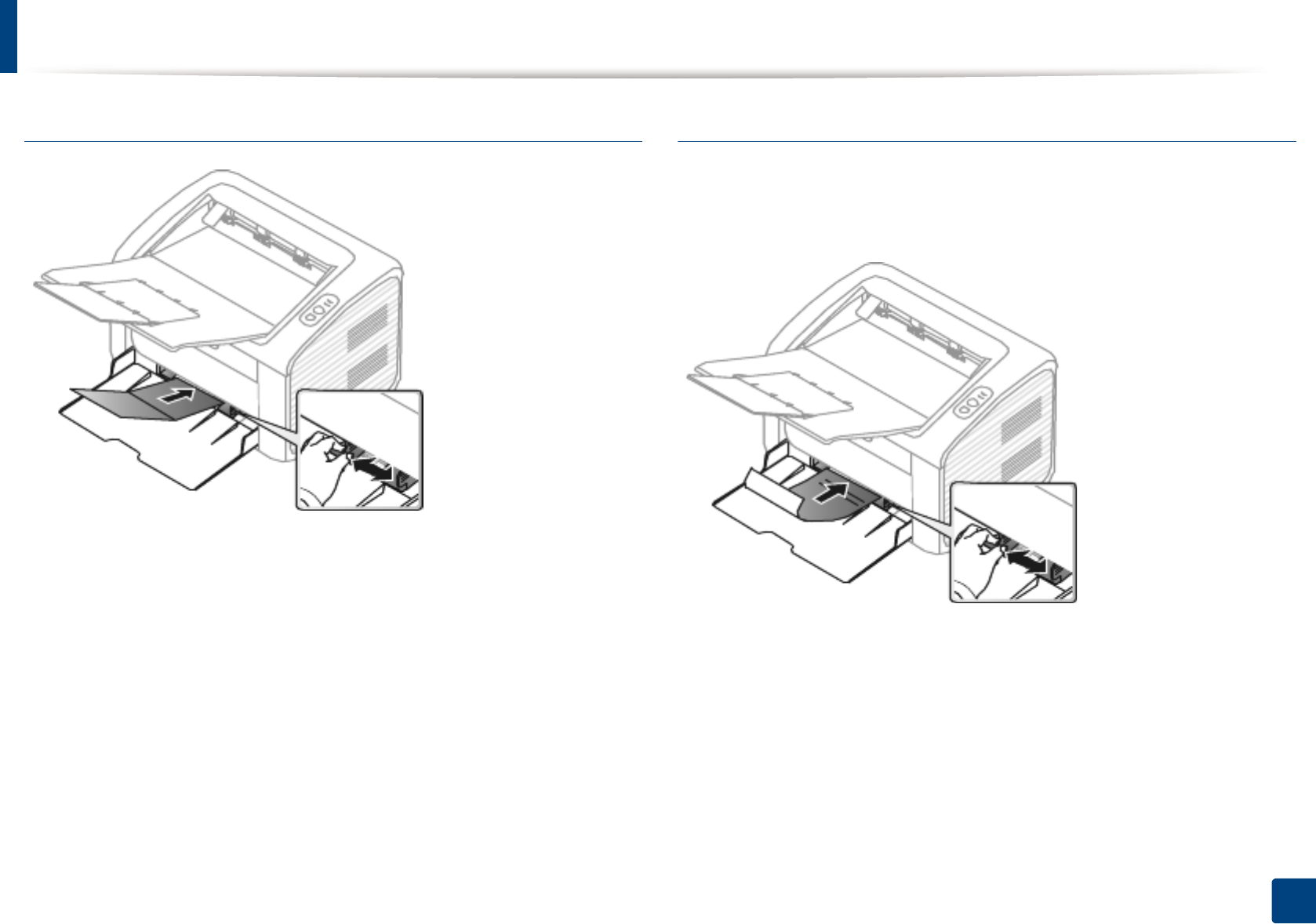
Media and tray
31
2. Learning the Basic Usage
Card stock/ Custom-sized paper
• In the software application, set margins at least 6.4 mm (0.25 inches) away
from the edges of the material.
Preprinted paper
When loading preprinted paper, the printed side should be facing up with an
uncurled edge at the front. If you experience problems with paper feeding, turn
the paper around. Note that print quality is not guaranteed.
• Must be printed with heat-resistant ink that will not melt, vaporize, or
release hazardous emissions when subjected to the machine’s fusing
temperature for 0.1 second (about 170°C (338°F)).
• Preprinted paper ink must be non-flammable and should not adversely
affect machine rollers.
• Before you load preprinted paper, verify that the ink on the paper is dry.
During the fusing process, wet ink can come off preprinted paper, reducing
print quality.
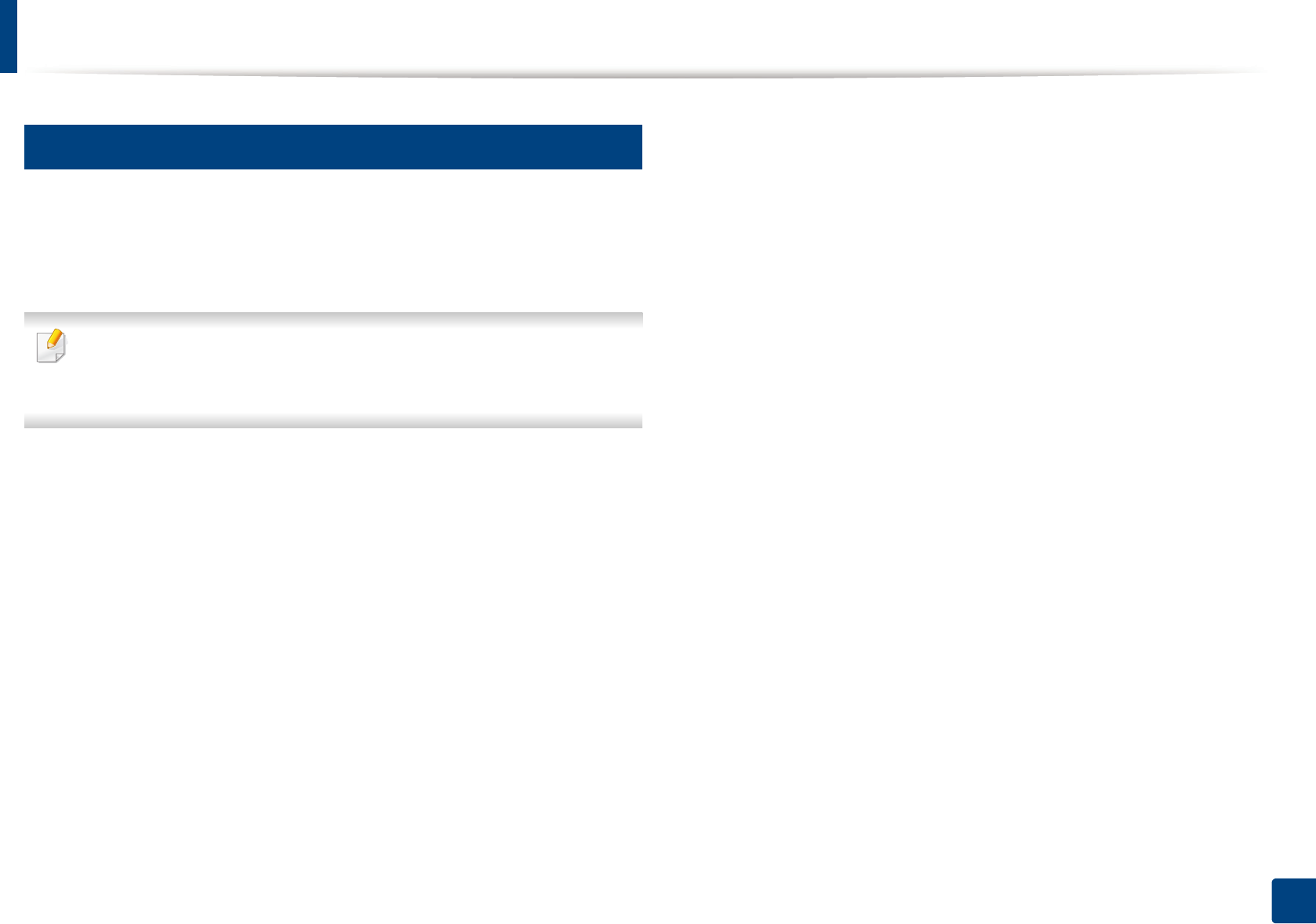
Media and tray
32
2. Learning the Basic Usage
5
Setting the paper size and type
After loading paper in the paper tray, set the paper size and type.
Open the Printing Preferences (see "Opening printing preferences" on page
13) and set the paper size and type in the Paper tab.
If you want to use special-sized paper such as billing paper, select Custom
in the Paper tab in the Printing Preferences (see "Opening printing
preferences" on page 13).
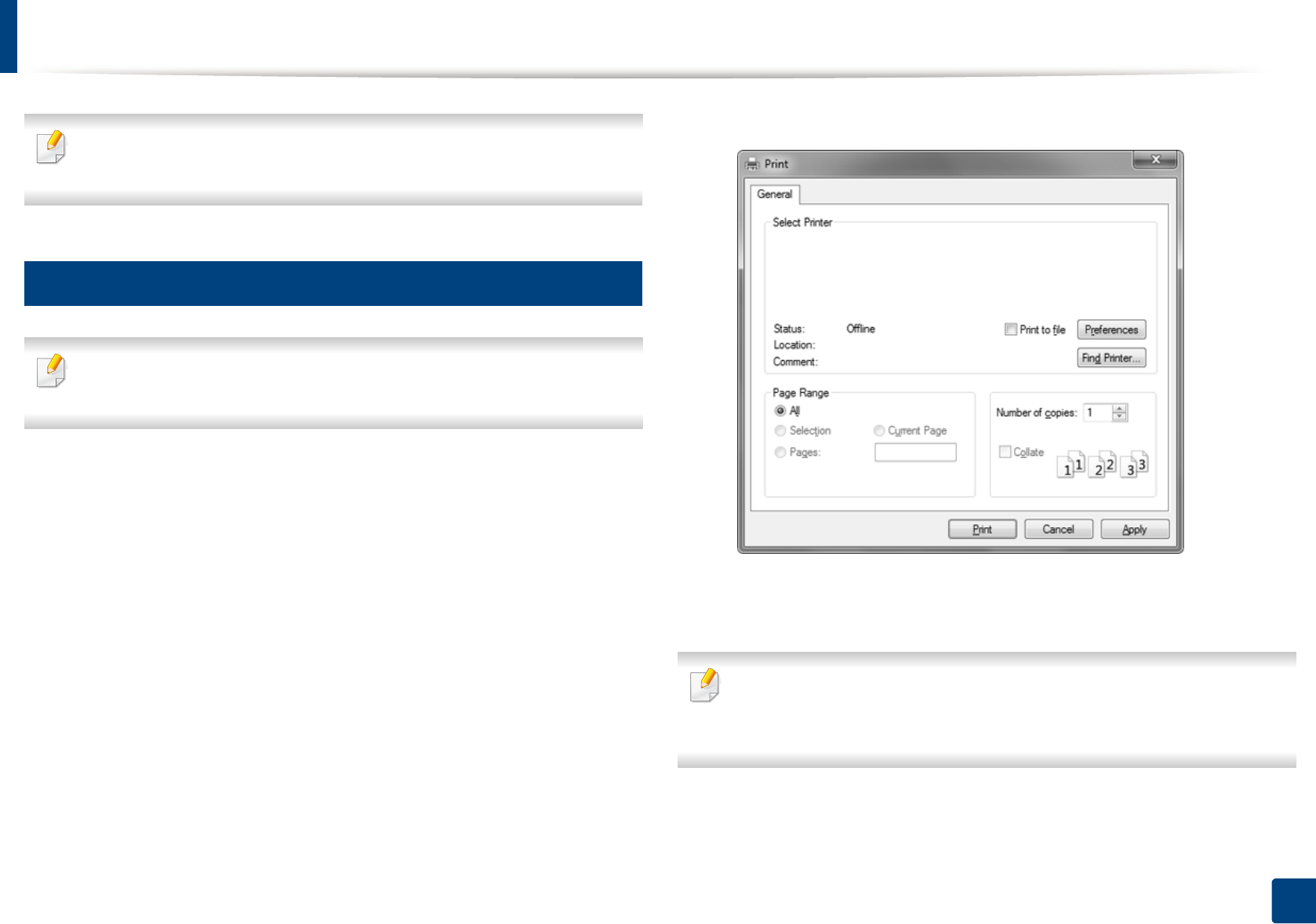
33
2. Learning the Basic Usage
Basic printing
For special printing features, refer to the Advanced Guide (see "Using
advanced print features" on page 5).
6
Printing
If you are a Macintosh or Linux user, refer to the "Macintosh printing" on
page 15 or "Linux printing" on page 17.
The following Printing Preferences window is for Notepad in Windows 7.
1Open the document you want to print.
2 Select Print from the File menu.
3 Select your machine from the Select Printer list.
4 The basic print settings including the number of copies and print range
are selected within the Print window.
To take advantage of the advanced printing features, click Properties or
Preferences from the Print window (see "Opening printing preferences" on
page 13).
5 To start the print job, click OK or Print in the Print window.
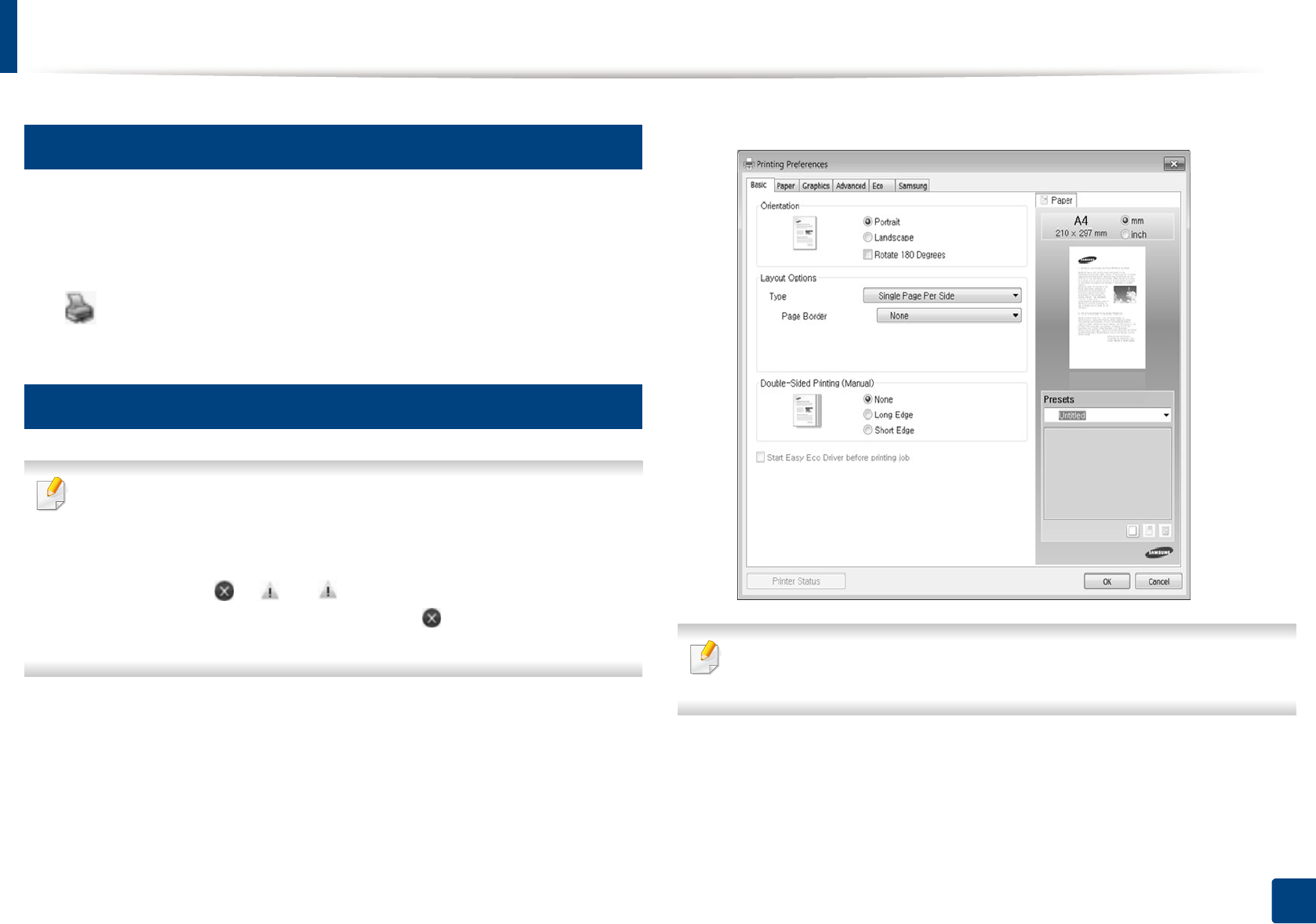
Basic printing
34
2. Learning the Basic Usage
7
Canceling a print job
If the print job is waiting in the print queue or print spooler, cancel the job as
follows:
• You can access this window by simply double-clicking the machine icon
( ) in the Windows task bar.
8
Opening printing preferences
• The Printing Preferences window that appears in this user’s guide may
differ depending on the machine in use. However, the composition of
the Printing Preferences window is similar.
• When you select an option in Printing Preferences, you may see a
warning mark or . An mark means you can select that certain
option but it is not recommended, and an mark means you cannot
select that option due to the machine’s setting or environment.
1Open the document you want to print.
2 Select Print from the file menu.
3 Select your machine from the Select Printer.
4 Click Properties or Preferences.
You can check the machine's current status using the Printer Status button
(see "Using Samsung Printer Status" on page 11).
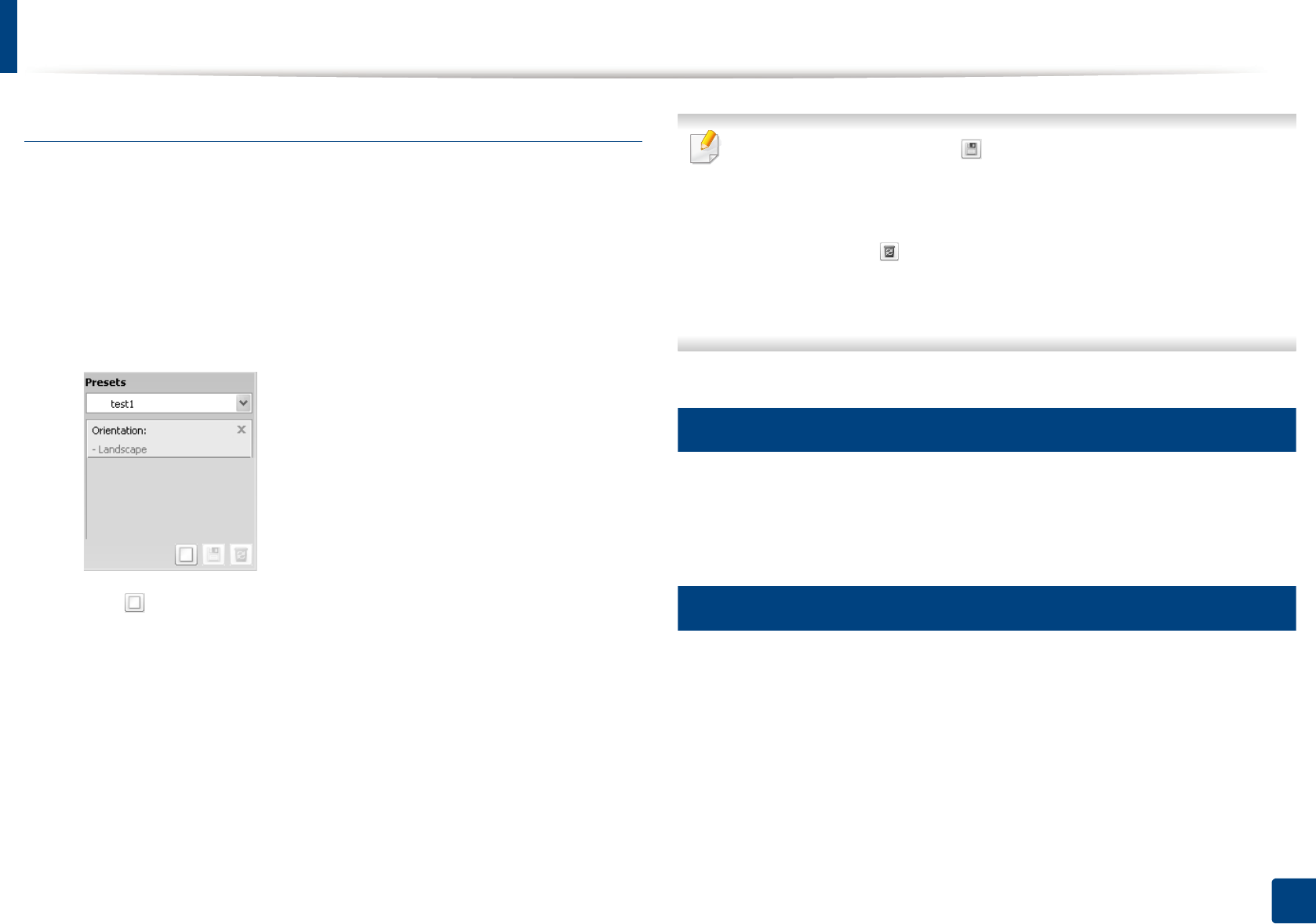
Basic printing
35
2. Learning the Basic Usage
Using a favorite setting
The Presets option, which is visible on each preferences tab except for the
Samsung tab, allows you to save the current preferences for future use.
To save a Presets item, follow these steps:
1Change the settings as needed on each tab.
2 Enter a name for the item in the Presets input box.
3 Click (Add). When you save Presets, all current driver settings are
saved.
Select more options and click (Update), settings will be added to the
Presets you made. To use a saved setting, select it from the Presets drop-
down list. The machine is now set to print according to the settings you
have selected. To delete saved settings, select it from the Presets drop-
down list and click (Delete).
You can also restore the printer driver’s default settings by selecting
Default Preset from the Presets drop-down list.
9
Using help
Click the option you want to know on the Printing Preferences window and
press F1 on your keyboard.
10
Eco printing
The Eco function cuts toner consumption and paper usage. The Eco function
allows you to save print resources and lead you to eco-friendly printing.
To Eco Printing, click the below:
See "Easy Eco Driver" on page 3.
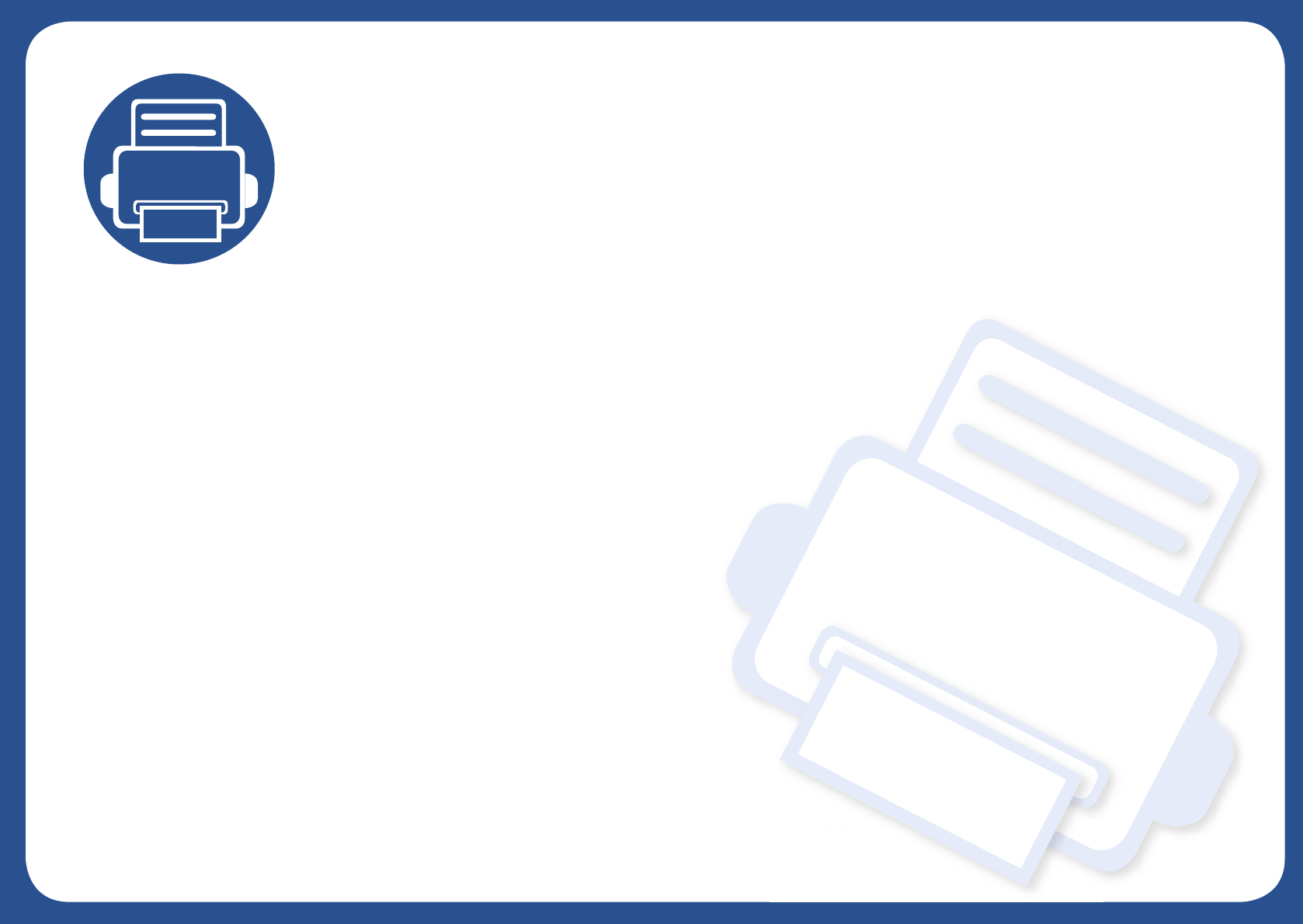
3. Maintenance
This chapter provides information about purchasing supplies, accessories and maintenance parts available for your
machine.
• Ordering supplies and accessories 2
• Available supplies 3
• Available maintenance parts 4
• Storing the toner cartridge 5
• Redistributing toner 7
• Replacing the toner cartridge 8
• Cleaning the machine 11
• Tips for moving & storing your machine 15
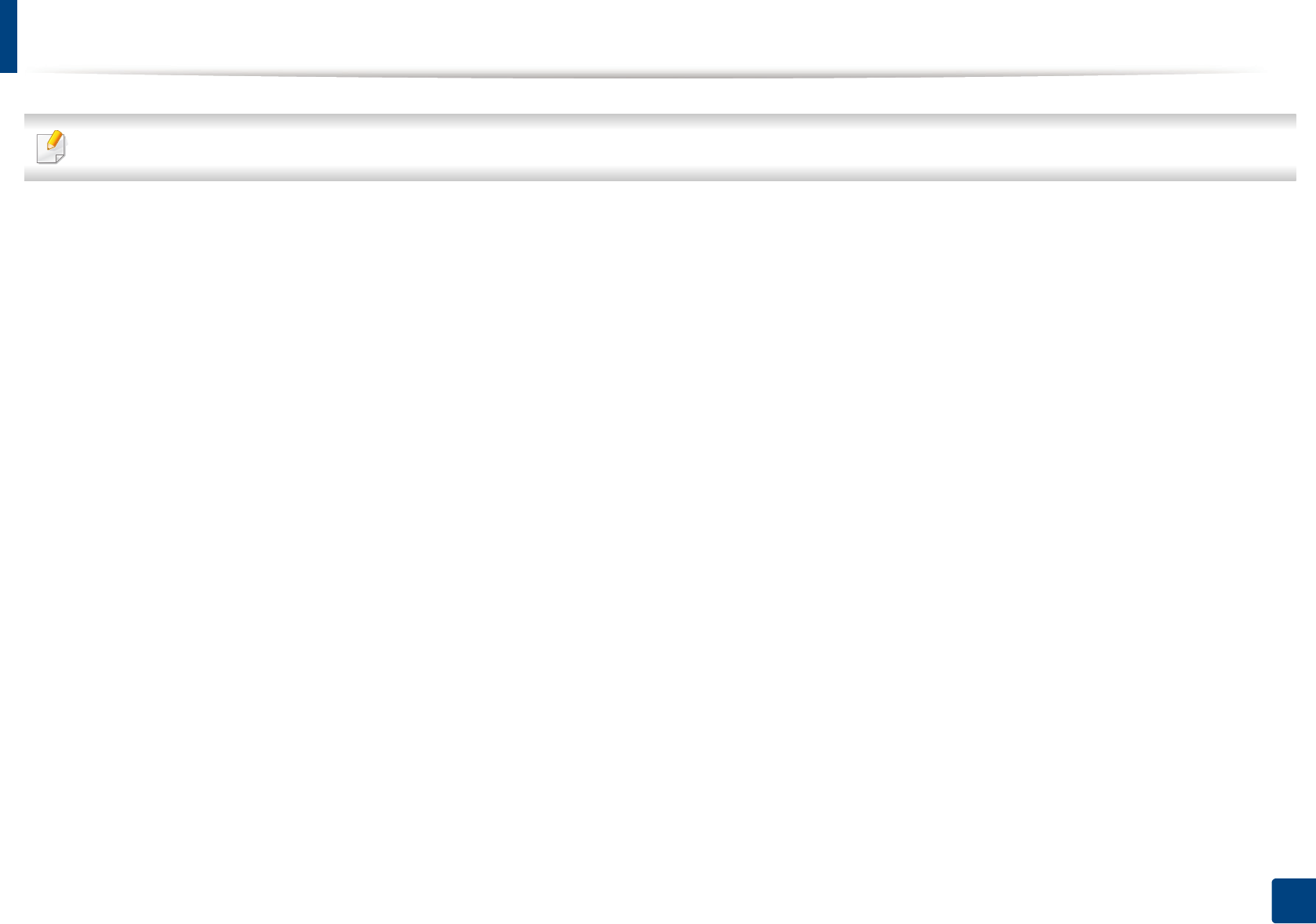
37
3. Maintenance
Ordering supplies and accessories
Available accessories may differ from country to country. Contact your sales representatives to obtain the list of available supplies, and maintenance parts.
To order Samsung-authorized supplies, accessories, and maintenance parts, contact your local Samsung dealer or the retailer where you purchased your machine.
You can also visit www.samsung.com/supplies, and then select your country/region to obtain the contact information for service.
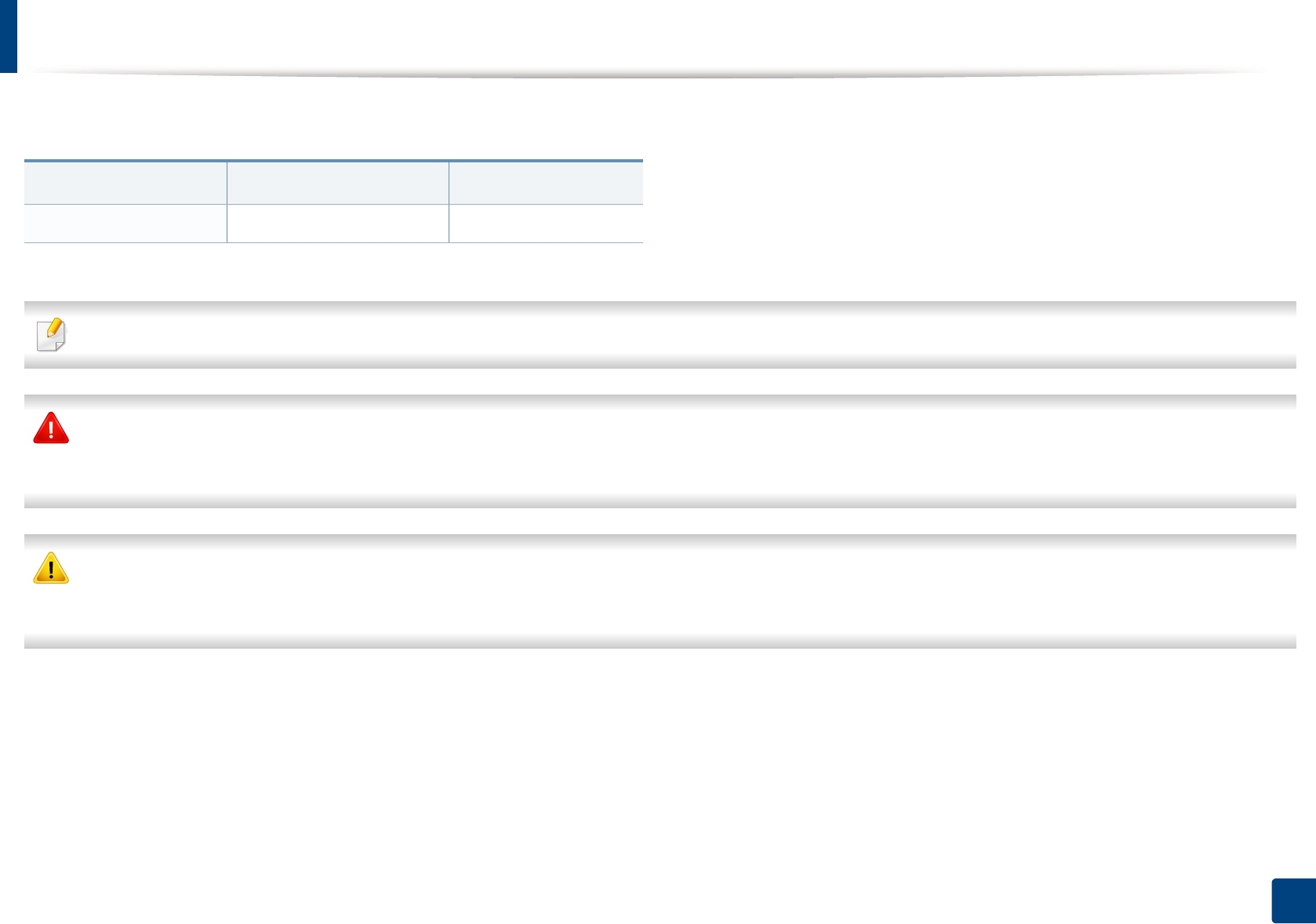
38
3. Maintenance
Available supplies
When supplies reach the end of their life spans, you can order the following types of supplies for your machine:
Depending on the options, percentage of image area, and job mode used, the toner cartridge’s lifespan may differ.
When purchasing new toner cartridges or other supplies, these must be purchased in the same country as the machine you are using. Otherwise, new toner
cartridges or other supplies will be incompatible with your machine due to different configurations of toner cartridges and other supplies according to the specific
country conditions.
Samsung does not recommend using non-genuine Samsung toner cartridge such as refilled or remanufactured toner. Samsung cannot guarantee non-genuine
Samsung toner cartridge's quality. Service or repair required as a result of using non-genuine Samsung toner cartridges will not be covered under the machine’s
warranty.
Type Average yield1
1. Declared yield value in accordance with ISO/IEC 19752.
Part name
Toner cartridge Approx. 1,500 pages MLT-D101S
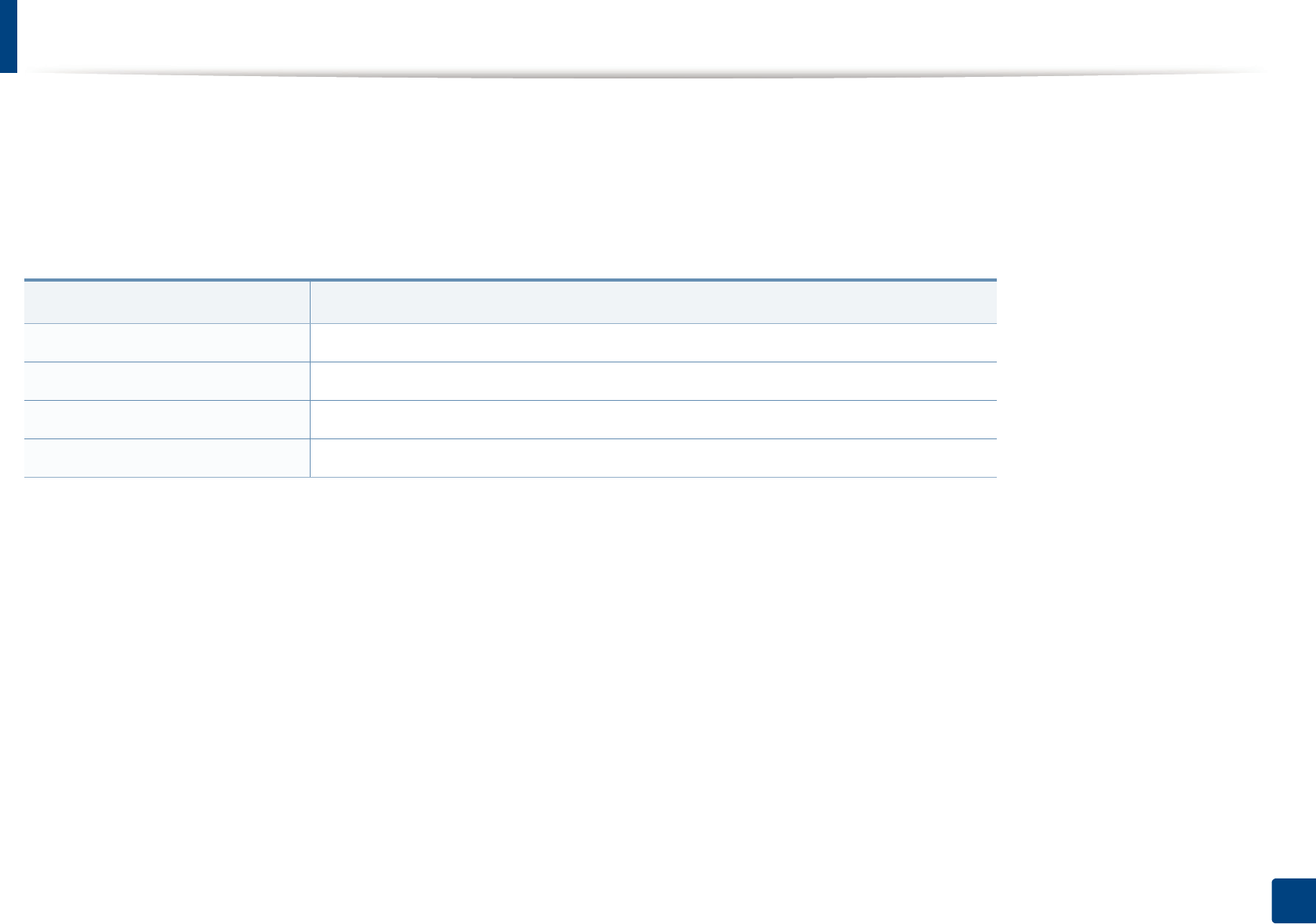
39
3. Maintenance
Available maintenance parts
To purchase maintenance parts, contact the source where you bought the machine. Replacing maintenance parts can be performed only by an authorized service
provider, dealer, or the retailer where you bought the machine. The warranty does not cover the replacement of any maintenance parts once it has reached its
“Average yield”.
Maintenance parts are replaced at specific intervals to avoid print quality and paper feed problems resulting from worn parts, see table below. The purpose of which
is to maintain your machine in top working condition. The maintenance parts below should be replaced when the life span of each item has been met.
Parts Average yield1
1. It will be affected by the operating system used, computing performance, application software, connecting method, media type, media size and job
complexity.
Fuser unit Approx. 30,000 pages
Transfer roller Approx. 30,000 pages
Feed roller Approx. 30,000 pages
Pickup roller Approx. 30,000 pages
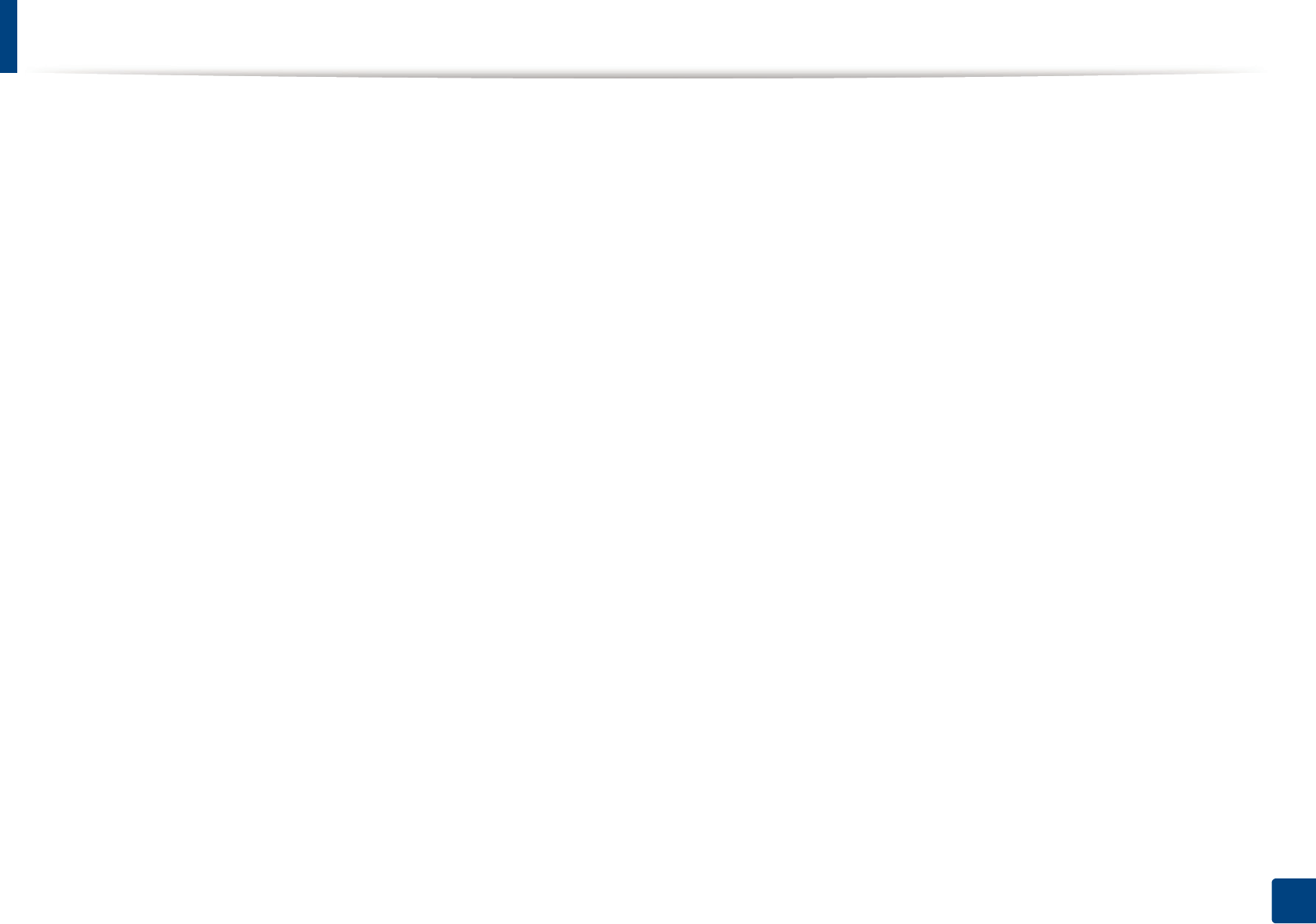
40
3. Maintenance
Storing the toner cartridge
Toner cartridges contain components that are sensitive to light, temperature and humidity. Samsung suggests users follow these recommendations to ensure
optimal performance, highest quality, and longest life from your new Samsung toner cartridge.
Store this cartridge in the same environment in which the printer will be used. This should be in controlled temperature and humidity conditions. The toner cartridge
should remain in its original and unopened package until installation – if original packaging is not available, cover the top opening of the cartridge with paper and
store in a dark cabinet.
Opening the cartridge package prior to use dramatically shortens its useful shelf and operating life. Do not store on the floor. If the toner cartridge is removed from
the printer, follow the instructions below to store the toner cartridge properly.
• Store the cartridge inside the protective bag from the original package.
• Store lying flat (not standing on end) with the same side facing up as if it were installed in the machine.
• Do not store consumables in any of the following conditions:
- Temperature greater than 40°C (104°F).
- Humidity range less than 20% and greater than 80%.
- An environment with extreme changes in humidity or temperature.
- Direct sunlight or room light.
- Dusty places.
- A car for a long period of time.
- An environment where corrosive gases are present.
- An environment with salty air.
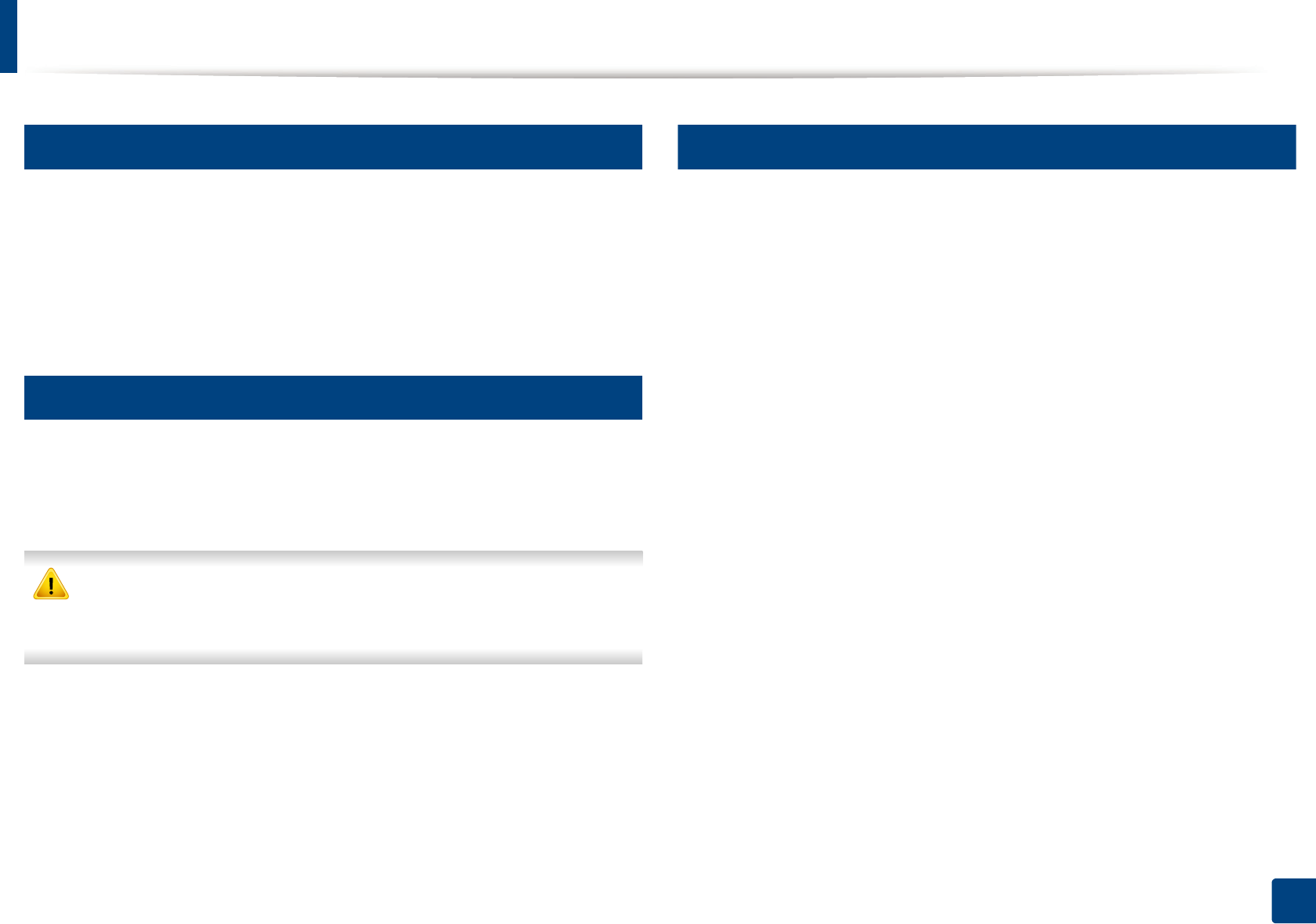
Storing the toner cartridge
41
3. Maintenance
1
Handling instructions
• Do not touch the surface of the photoconductive drum in the cartridge.
• Do not expose the cartridge to unnecessary vibrations or shock.
• Never manually rotate the drum, especially in the reverse direction; this can
cause internal damage and toner spillage.
2
Toner cartridge usage
Samsung Electronics does not recommend or approve the use of non-Samsung
brand toner cartridges in your printer including generic, store brand, refilled, or
remanufactured toner cartridges.
Samsung’s printer warranty does not cover damage to the machine caused
by the use of a refilled, remanufactured, or non-Samsung brand toner
cartridges.
3
Estimated cartridge life
Estimated cartridge life the life of the toner cartridge (or imaging unit) yield
depends on the amount of toner that print jobs require. The actual print yield
may vary depending on the print density of the pages you print on, operating
environment, percentage of image area, printing interval, media type and/or
media size. For example, if you print a lot of graphics, the consumption of the
toner is higher and you may need to change the cartridge more often.
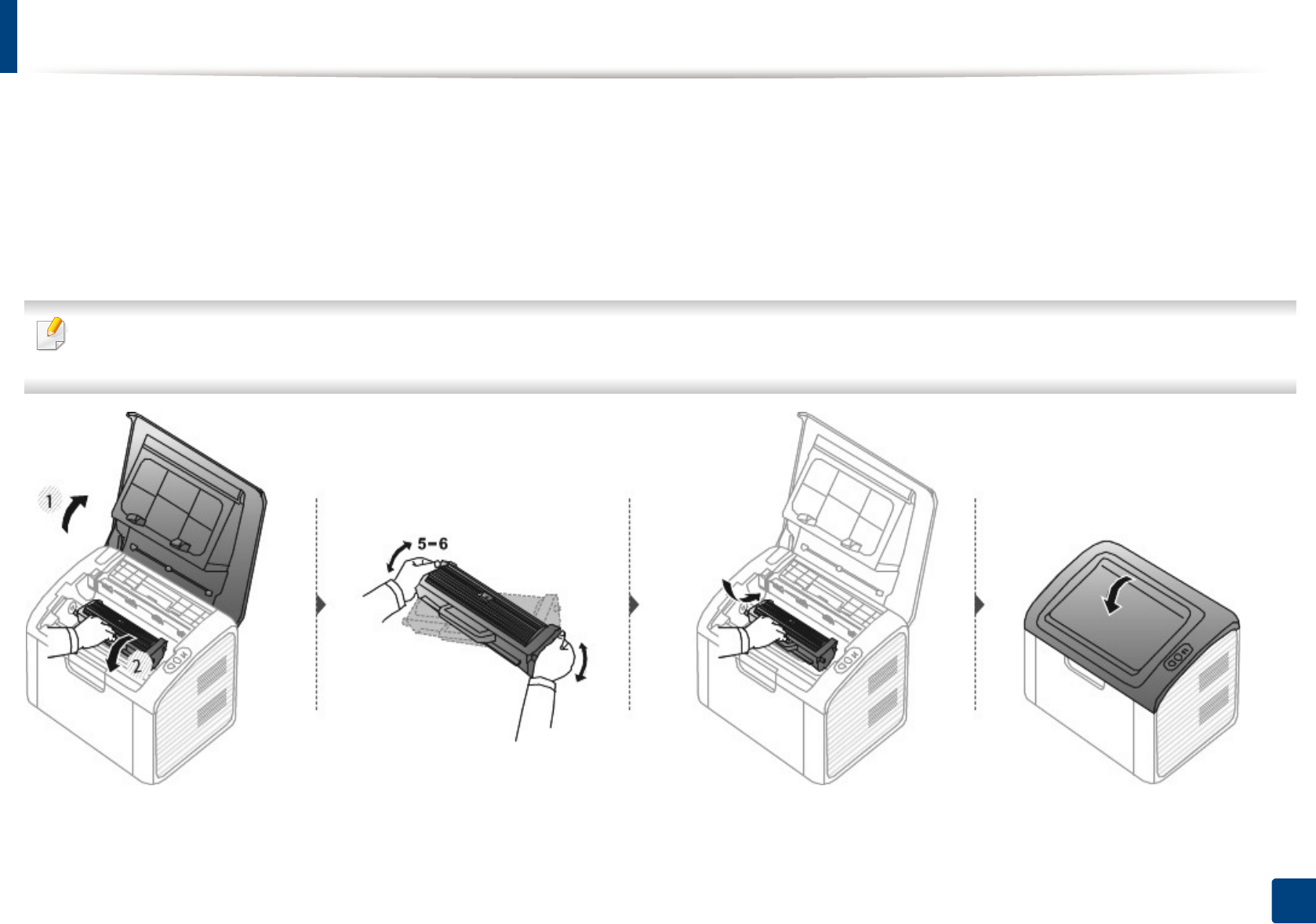
42
3. Maintenance
Redistributing toner
When the toner cartridge is near the end of its life:
• White streaks or light printing occurs and/or density variation side to side.
• The Toner LED blinks orange.
If this happens, you can temporarily improve print quality by redistributing the remaining toner in the cartridge. In some cases, white streaks or light printing will still
occur even after you have redistributed the toner.
• Before opening the top cover, close the output support first.
• If toner gets on your clothing, wipe it off with a dry cloth and wash clothing in cold water. Hot water sets toner into fabric.
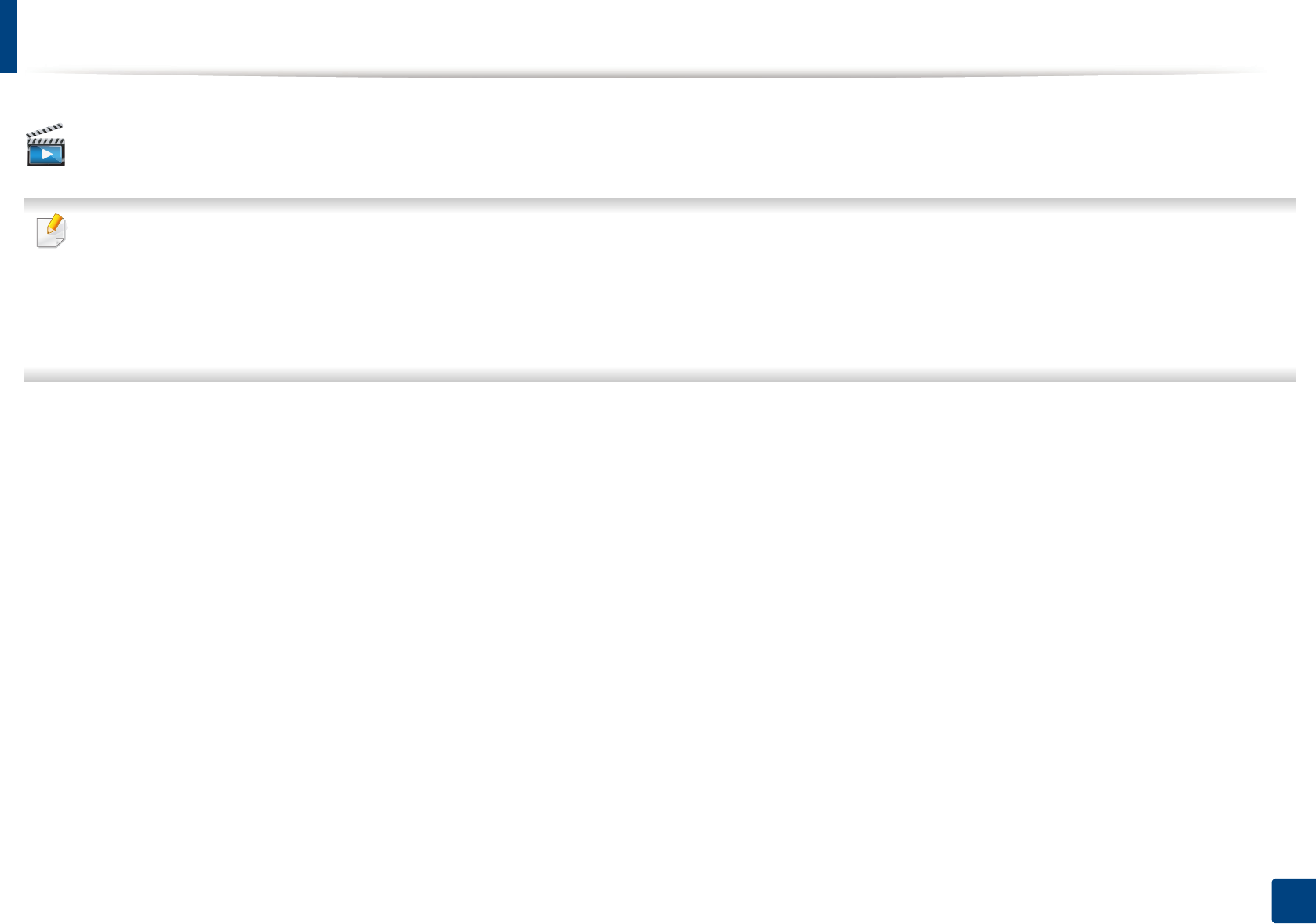
43
3. Maintenance
Replacing the toner cartridge
Click this link to open an animation about replacing a toner cartridge.
• Before opening the top cover, close the output support first.
• Do not use sharp objects such as a knife or scissors to open the toner cartridge package. They might scratch the drum of the cartridge.
• If toner gets on your clothing, wipe it off with a dry cloth and wash clothing in cold water. Hot water sets toner into fabric.
• Shake the toner cartridge thoroughly, it will increase the initial print quality.
• Do not touch the green underside of the toner cartridge. Use the handle on the cartridge to avoid touching this area.
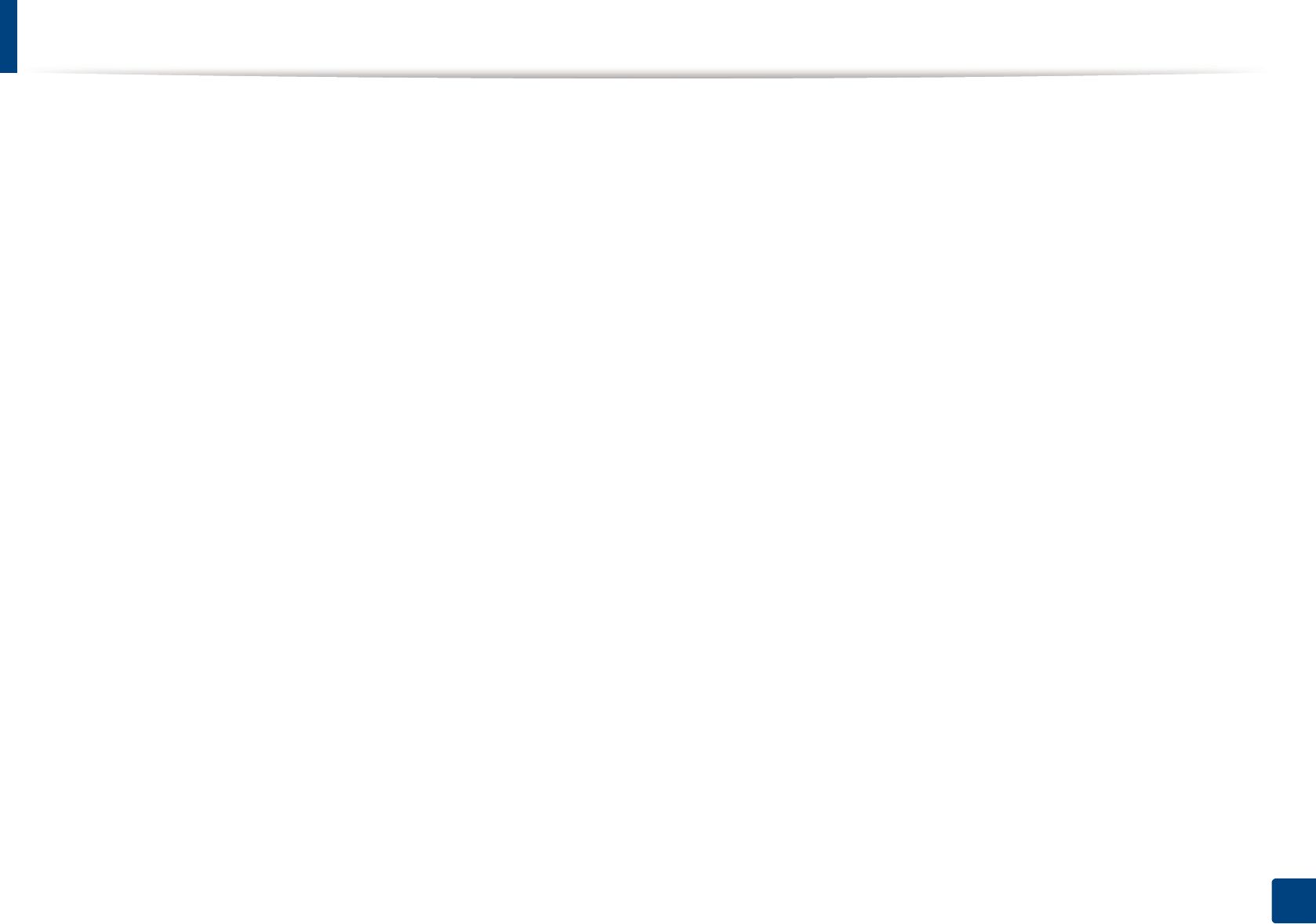
Replacing the toner cartridge
44
3. Maintenance
When a toner cartridge has reached the end of life, the machine will stop
printing.
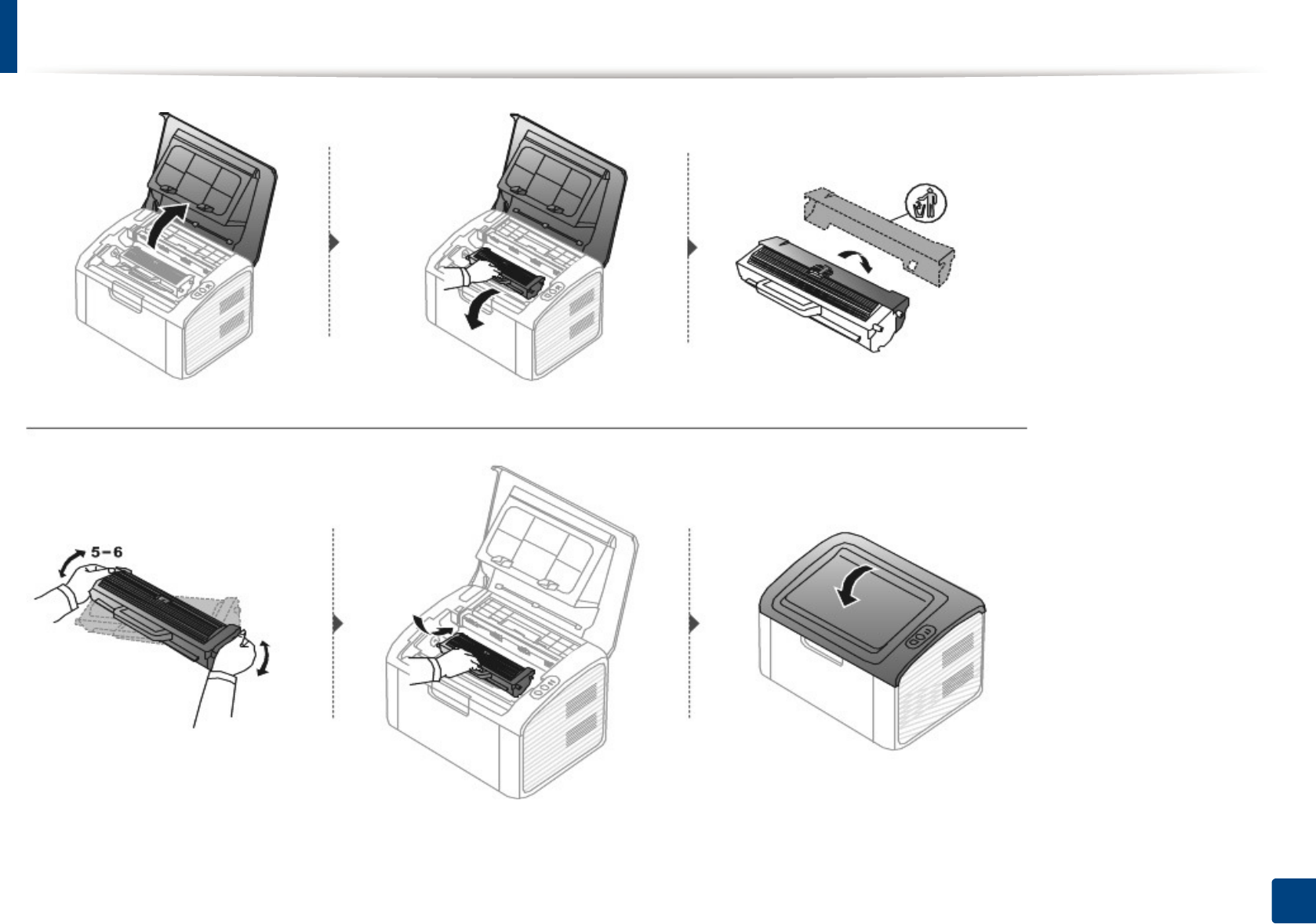
Replacing the toner cartridge
45
3. Maintenance
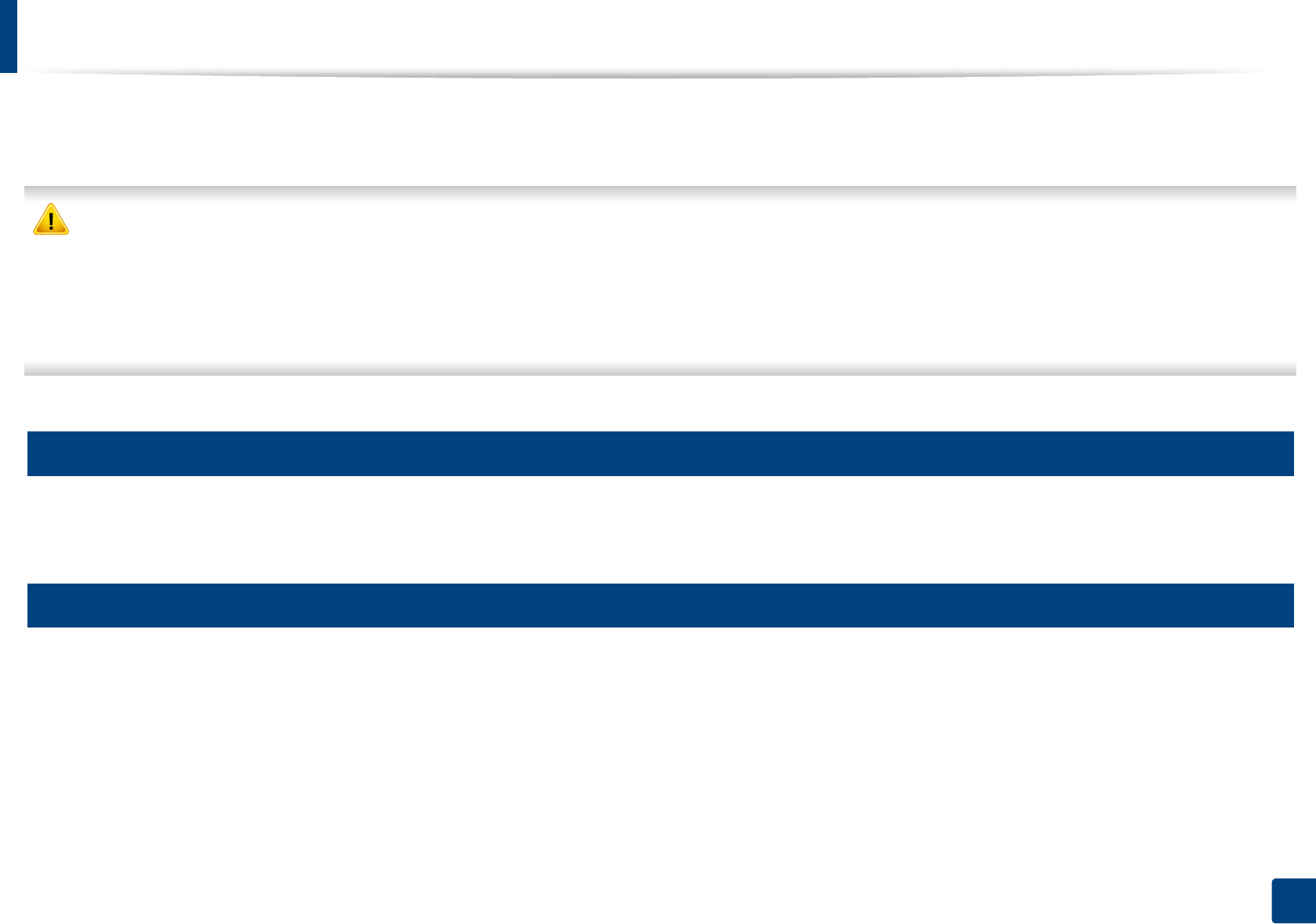
46
3. Maintenance
Cleaning the machine
If printing quality problems occur or if you use your machine in a dusty environment, you need to clean your machine regularly to keep it in the best printing
condition and use your machine longer.
• Cleaning the cabinet of the machine with cleaning materials containing large amounts of alcohol, solvents, or other strong substances can discolor or distort the
cabinet.
• If your machine or the surrounding area is contaminated with toner, we recommend you use a cloth or tissue dampened with water to clean it. If you use a vacuum
cleaner, toner blows in the air and might be harmful to you.
• During the printing process, paper, toner, and dust particles can accumulate inside the machine. This buildup can cause print quality problems, such as toner
specks or smearing. Cleaning the inside of the machine clears and reduces these problems.
4
Cleaning the outside
Clean the machine cabinet with a soft, lint-free cloth. Dampen the cloth slightly with water, but be careful not to let any water drip onto or into the machine.
5
Cleaning the inside
During the printing process, paper, toner, and dust particles can accumulate inside the machine. This buildup can cause print quality problems, such as toner specks
or smearing. Cleaning the inside of the machine clears and reduces these problems.
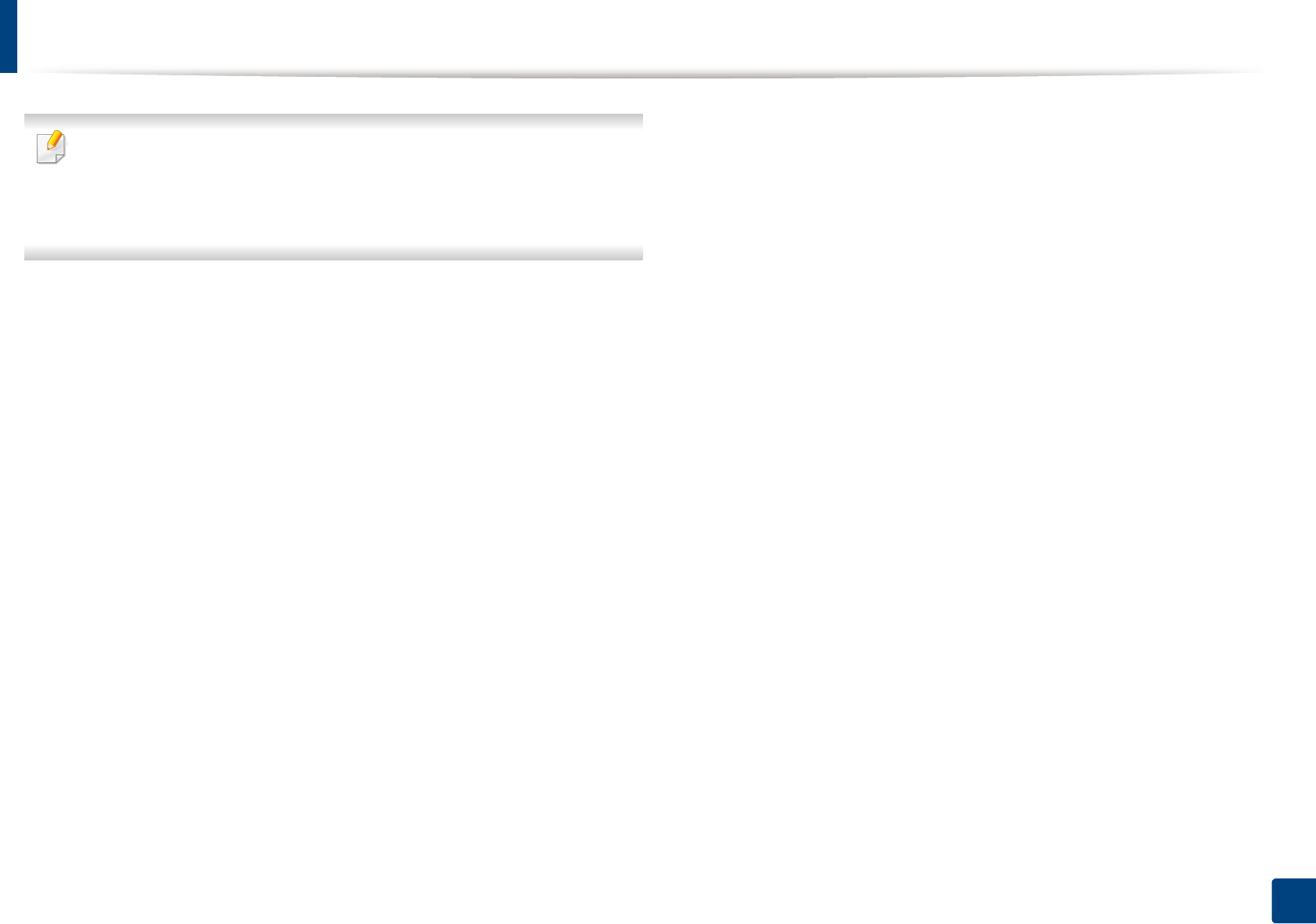
Cleaning the machine
47
3. Maintenance
• Use a dry lint-free cloth to clean the machine.
• If your machine has a power switch, turn the power switch off before
cleaning the machine.
• Before opening the top cover, close the output support first.
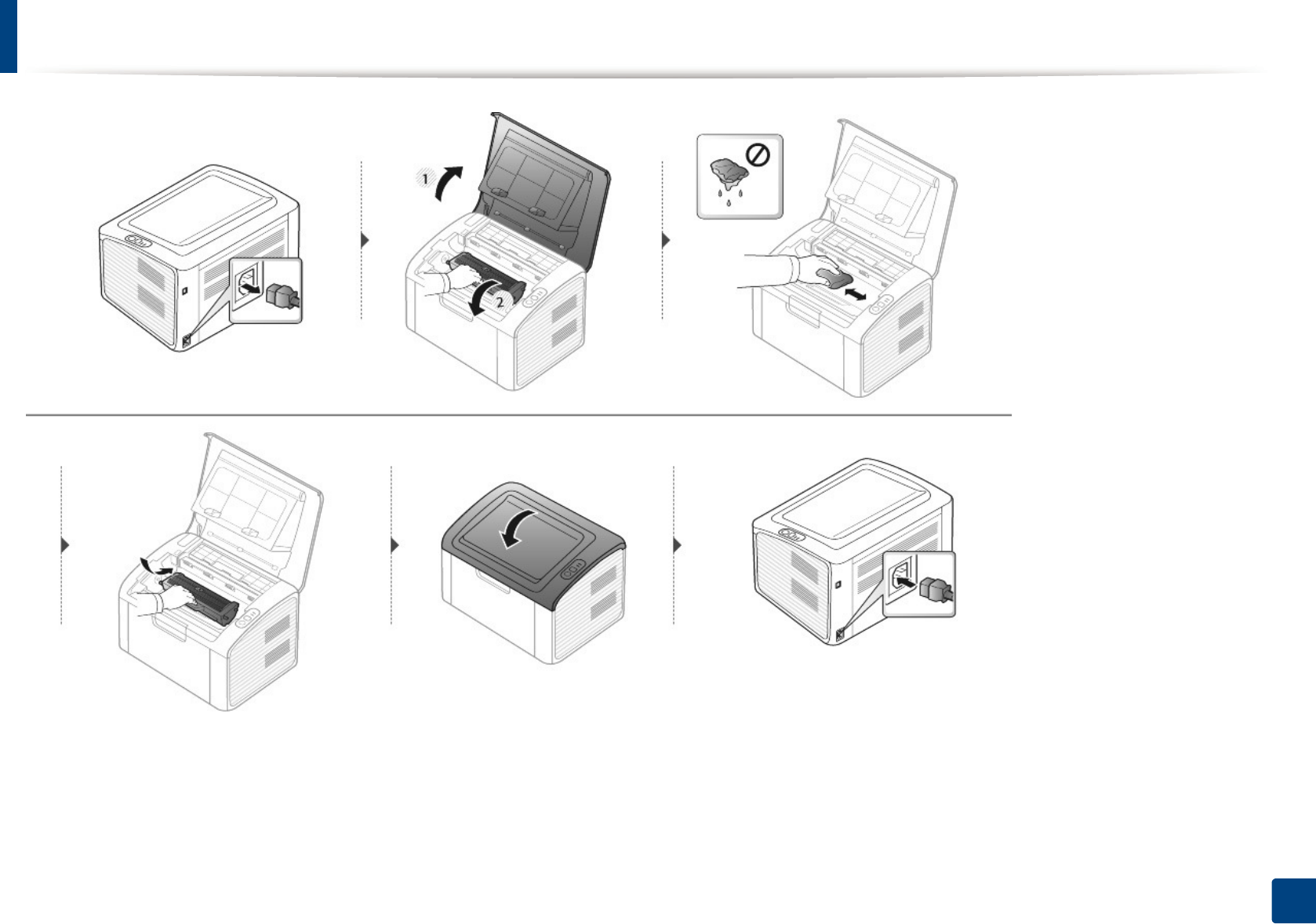
Cleaning the machine
48
3. Maintenance
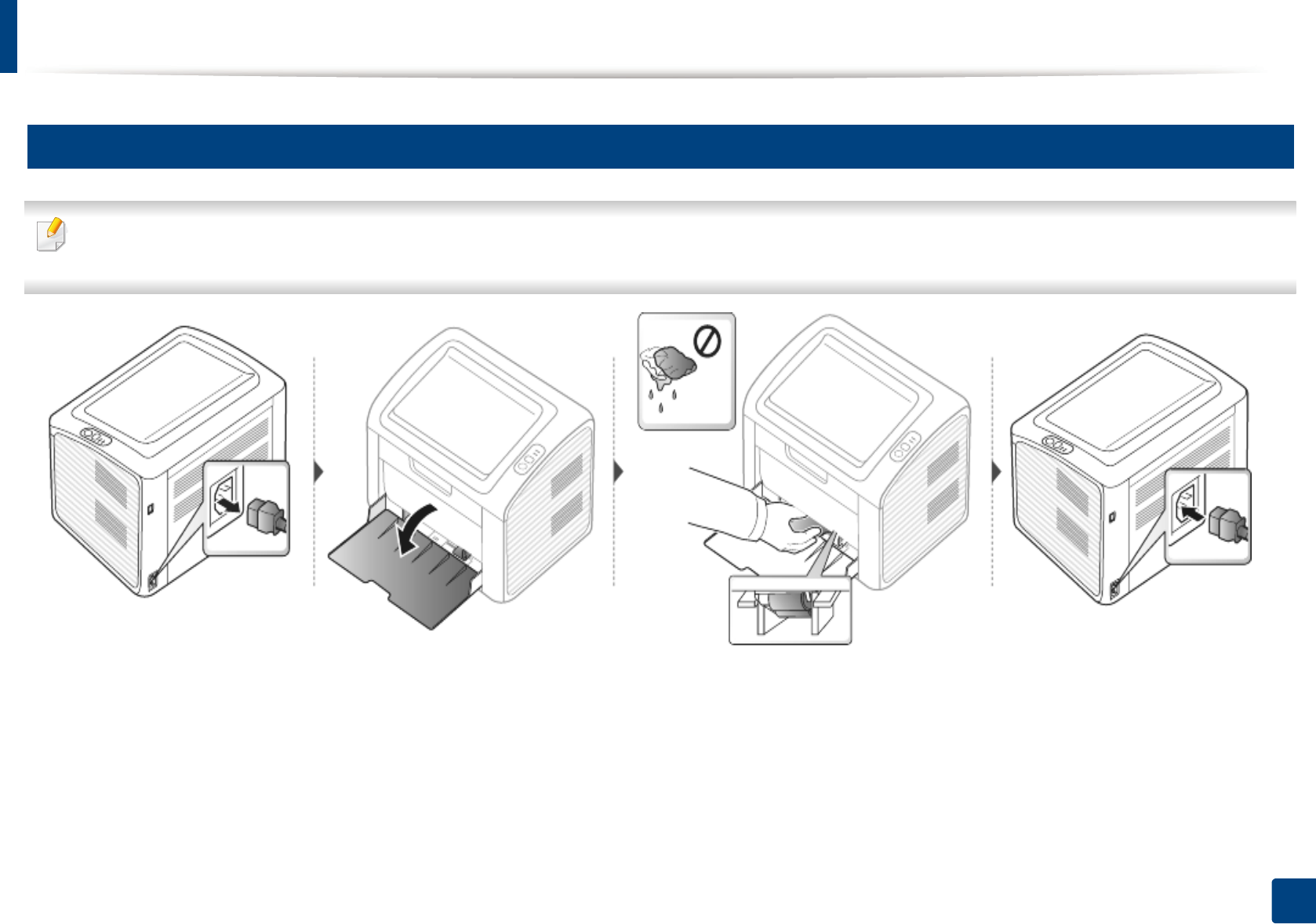
Cleaning the machine
49
3. Maintenance
6
Cleaning the pickup roller
• Use a dry lint-free cloth to clean the machine.
• If your machine has a power switch, turn the power switch off before cleaning the machine.
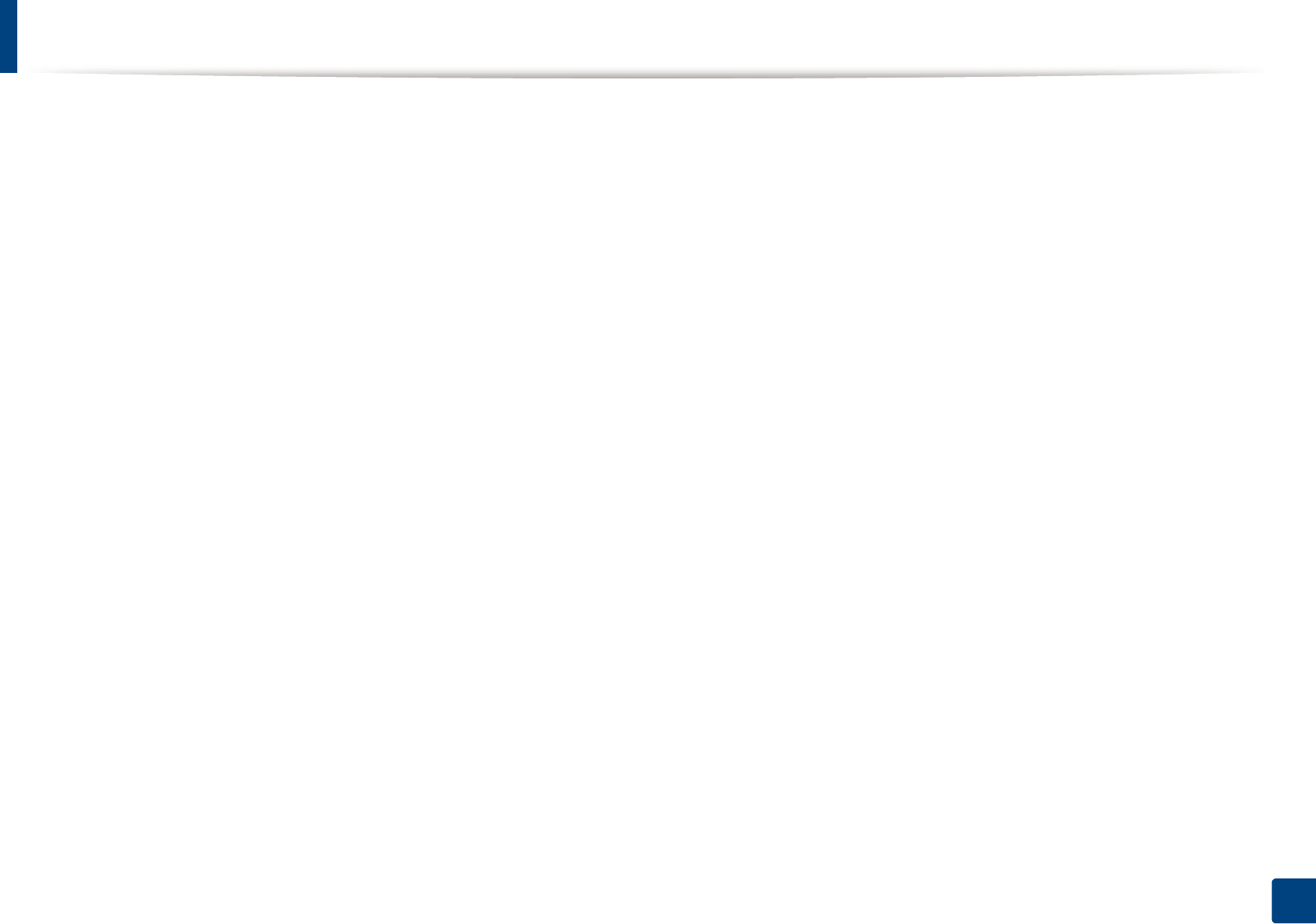
50
3. Maintenance
Tips for moving & storing your machine
• When moving the machine, do not tilt or turn it upside down. Otherwise, the inside of the machine may be contaminated by toner, which can cause damage to
the machine or reduce print quality.
• When moving the machine, make sure at least two people are holding the machine securely.
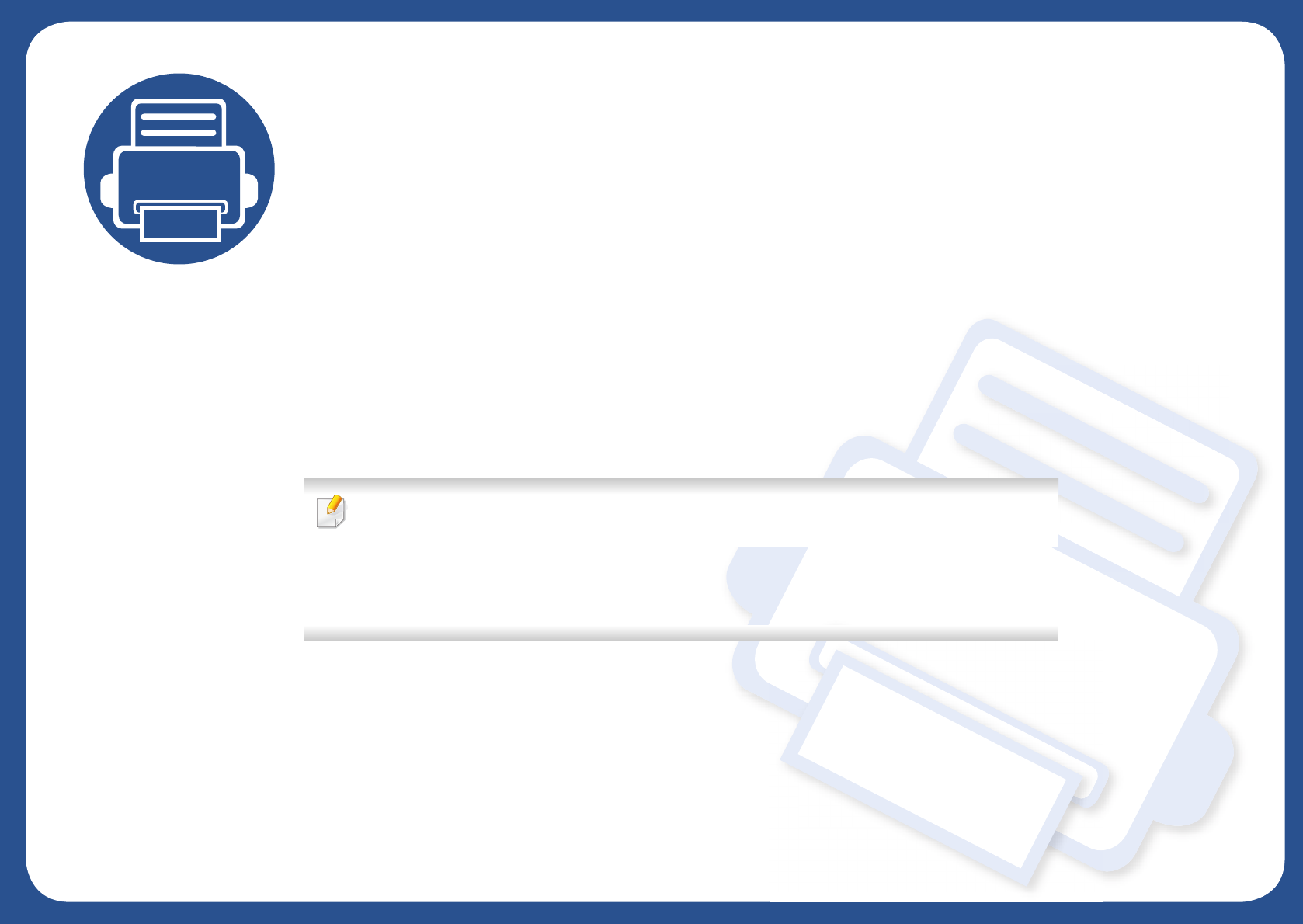
4. Troubleshooting
This chapter gives helpful information for what to do if you encounter an error.
• Tips for avoiding paper jams 2
• Clearing paper jams 3
• Understanding the status LED 6
This chapter gives helpful information for what to do if you encounter an error.If your machine
has a display screen, check the message on the display screen first to solve the error. If you
cannot find a solution to your problem in this chapter, refer to the Troubleshooting chapter in
the Advanced User's Guide (see "Troubleshooting" on page 1).If you cannot find a solution in
the User's Guide or the problem persists, call for service.
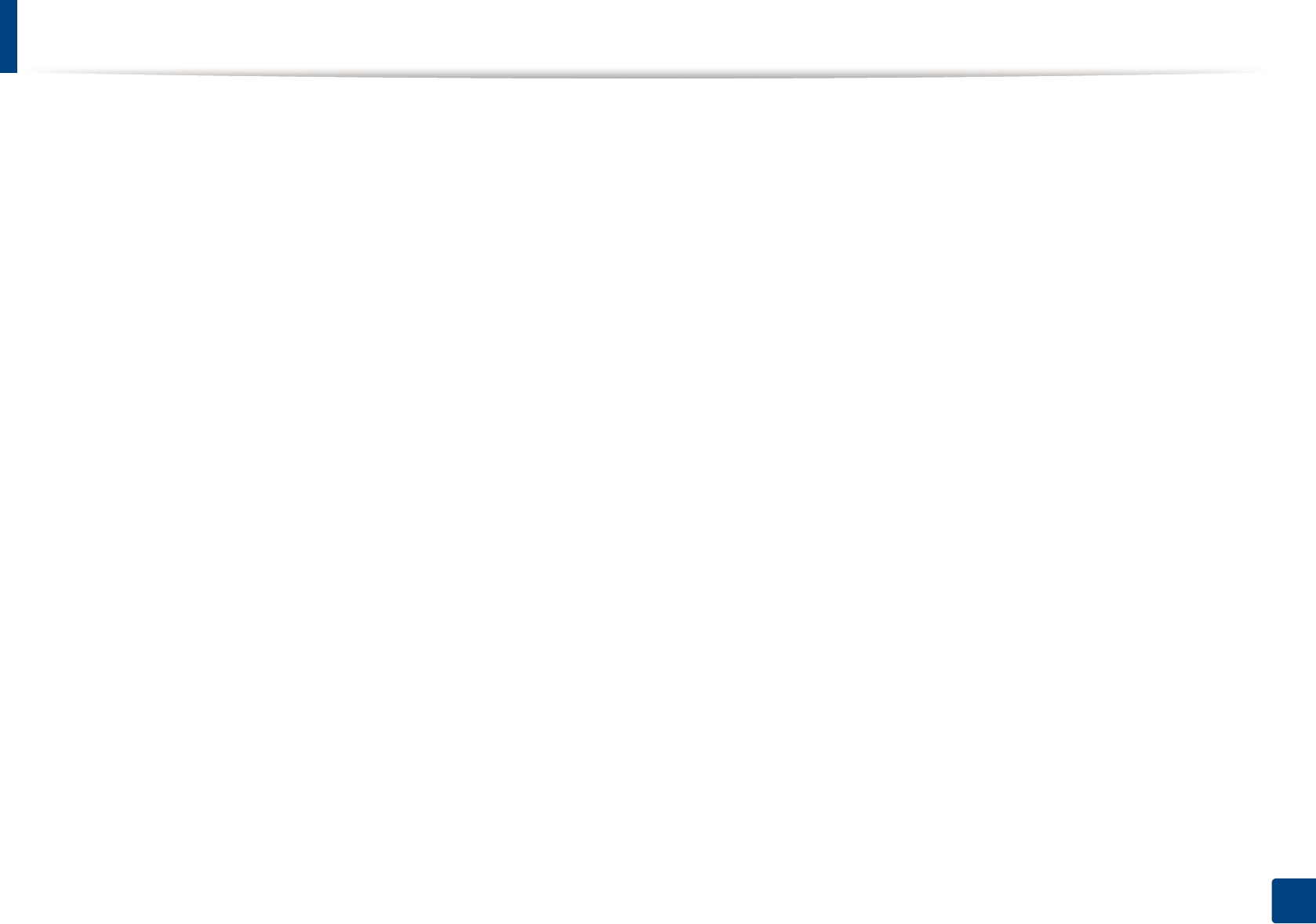
52
4. Troubleshooting
Tips for avoiding paper jams
By selecting the correct media types, most paper jams can be avoided. To avoid paper jams, refer to the following guidelines:
• Ensure that the adjustable guides are positioned correctly (see "Tray overview" on page 3).
• Do not overload the tray. Ensure that the paper level is below the paper capacity mark on the inside of the tray.
• Do not remove paper from the tray while your machine is printing.
• Flex, fan, and straighten paper before loading.
• Do not use creased, damp, or highly curled paper.
• Do not mix paper types in a tray.
• Use only recommended print media (see "Print media specifications" on page 4).
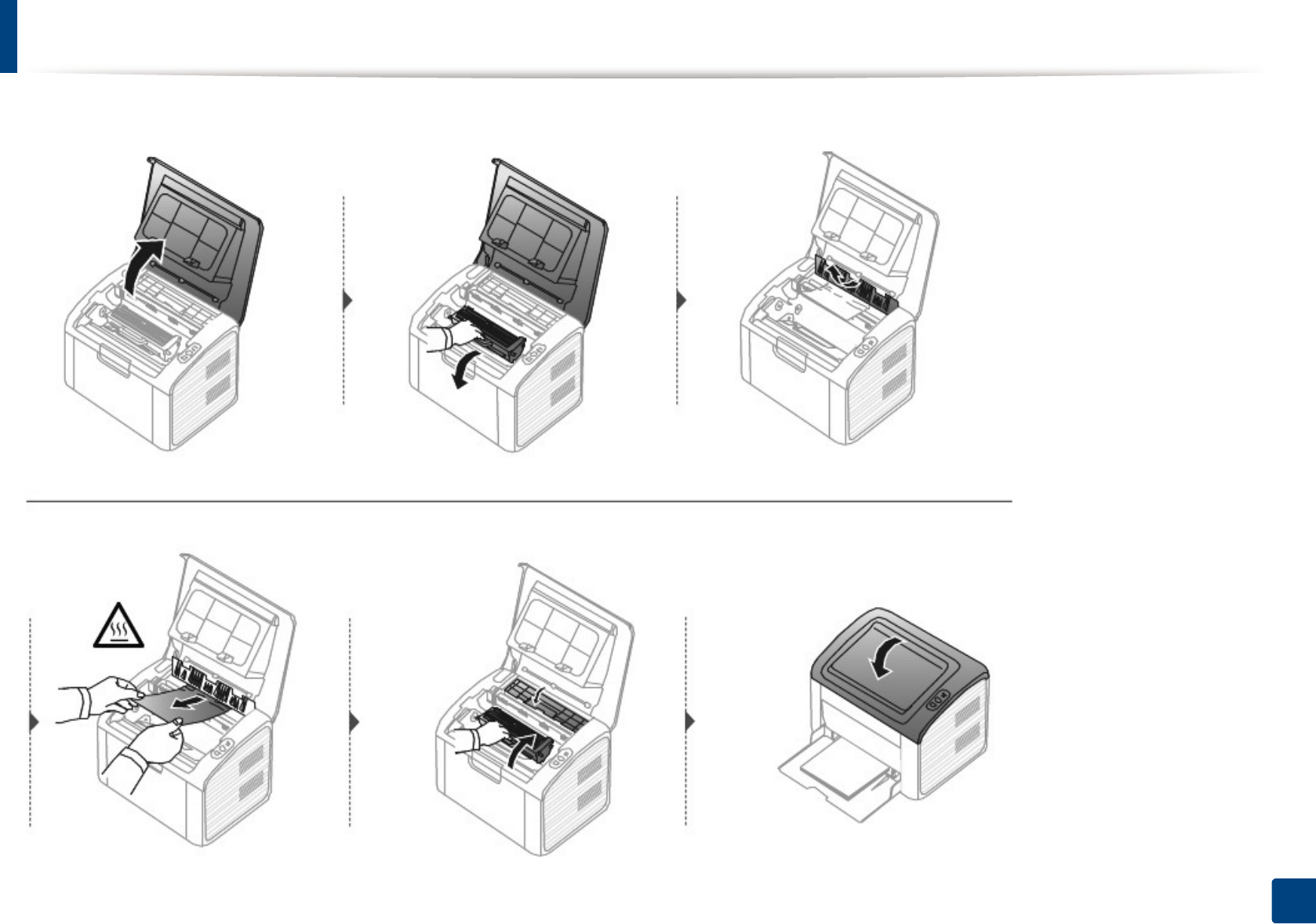
Clearing paper jams
55
4. Troubleshooting
If you do not see the paper in this area, stop and go to next step:
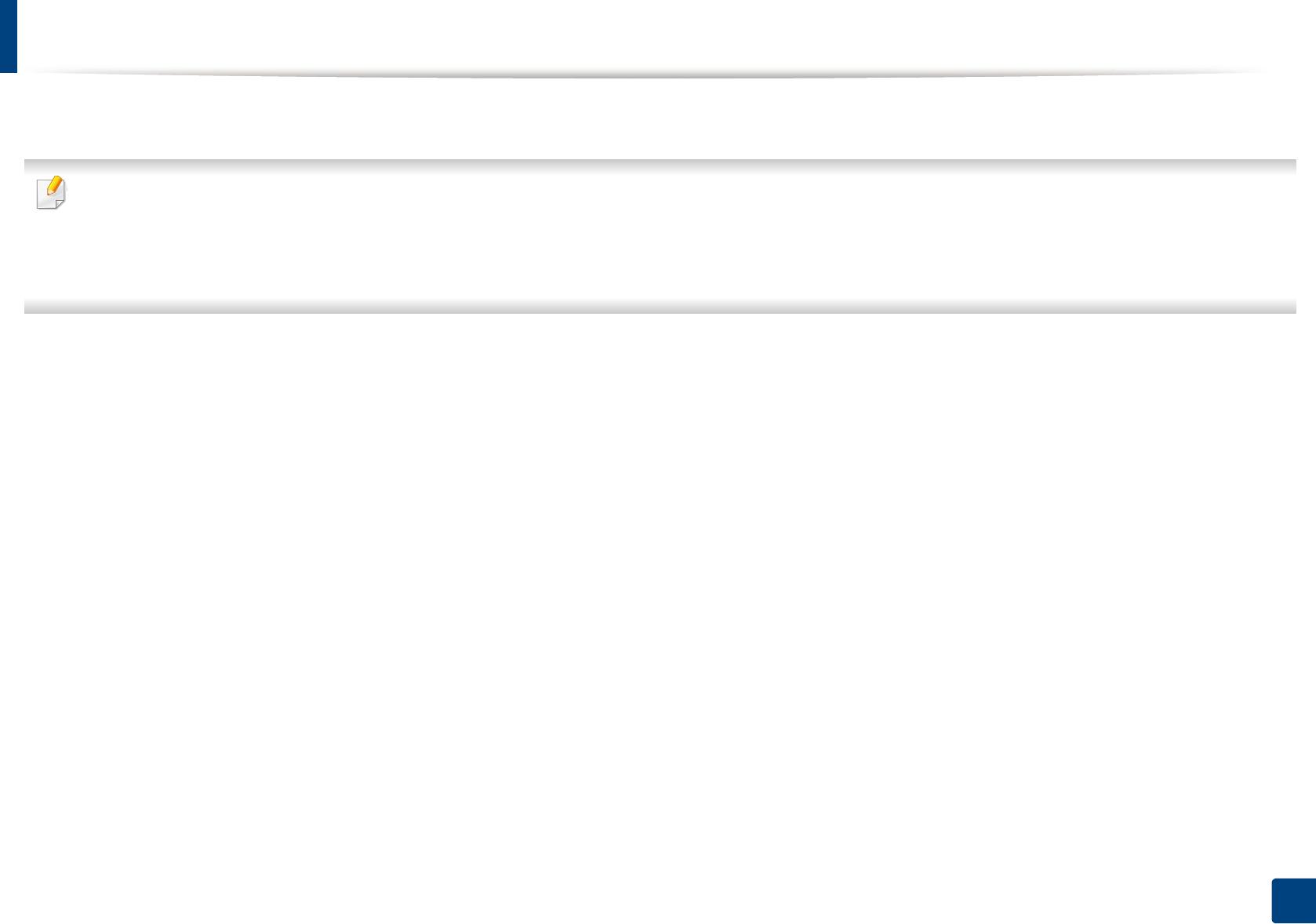
56
4. Troubleshooting
Understanding the status LED
The color of the LED indicates the machine's current status.
• Some LEDs may not be available depending on model or country.
• To resolve the error, look at the error message and its instructions from the troubleshooting part.
• You can also resolve the error with the guidelines from the Samsung Printer Status window or Smart Panel program window.
• If the problem persists, call a service representative.
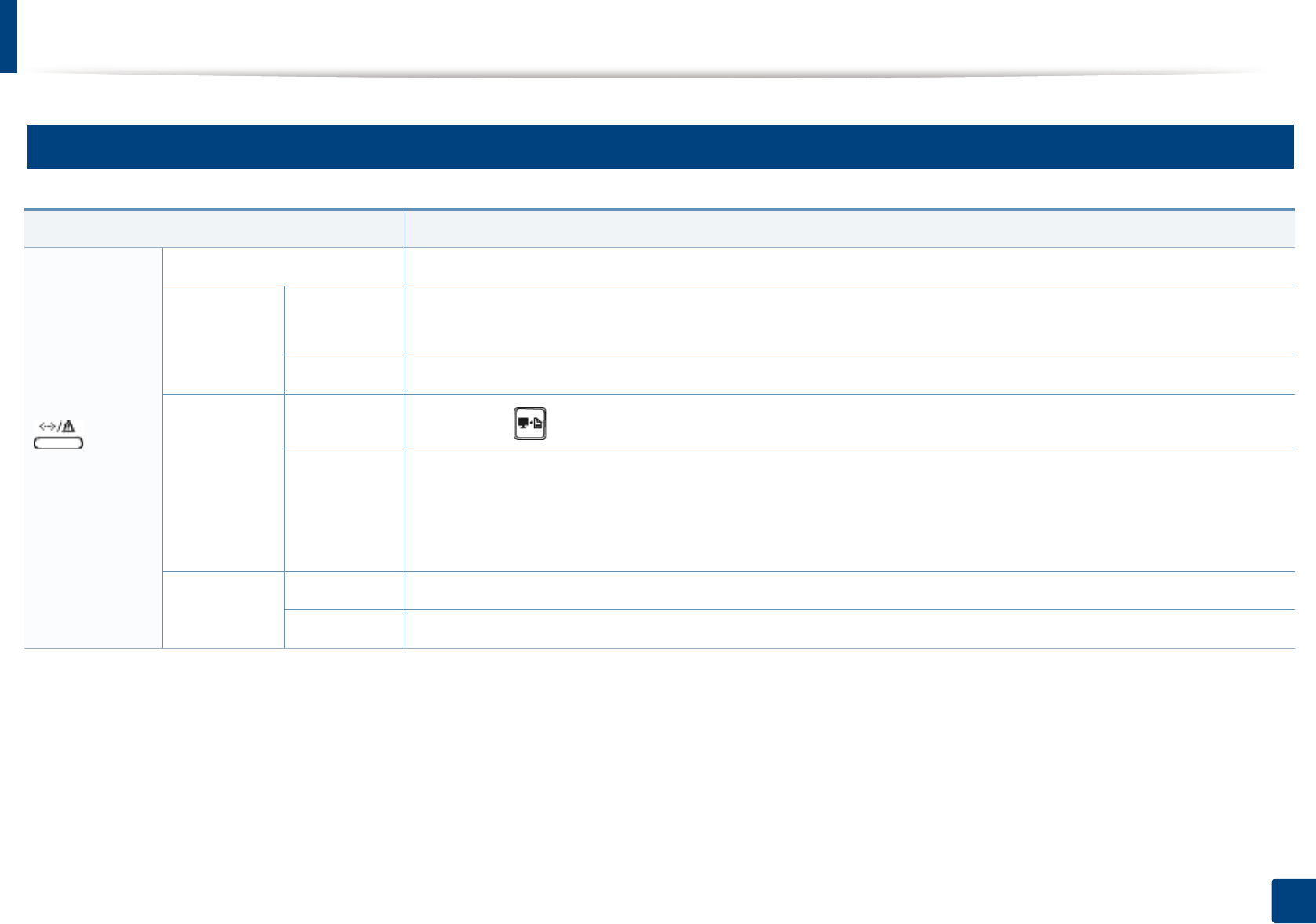
Understanding the status LED
57
4. Troubleshooting
3
Status LED
Status Description
(Status
LED)
Off The machine is off-line or save mode.
Green
Blinking • When the backlight slowly blinks, the machine is receiving data from the computer.
• When the backlight blinks rapidly, the machine is printing data.
On The machine is on-line and can be used.
Red
Blinking Waiting for a (Print screen) button to be pressed for manual printing.
On
• The cover is opened. Close the cover.
• There is no paper in the tray when receiving or printing data. Load paper in the tray ("Loading paper in the tray" on
page 4).
• The machine has stopped due to a major error.
Orange
Blinking Upgrading firmware.
On A paper jam has occurred (see "Clearing paper jams" on page 3).
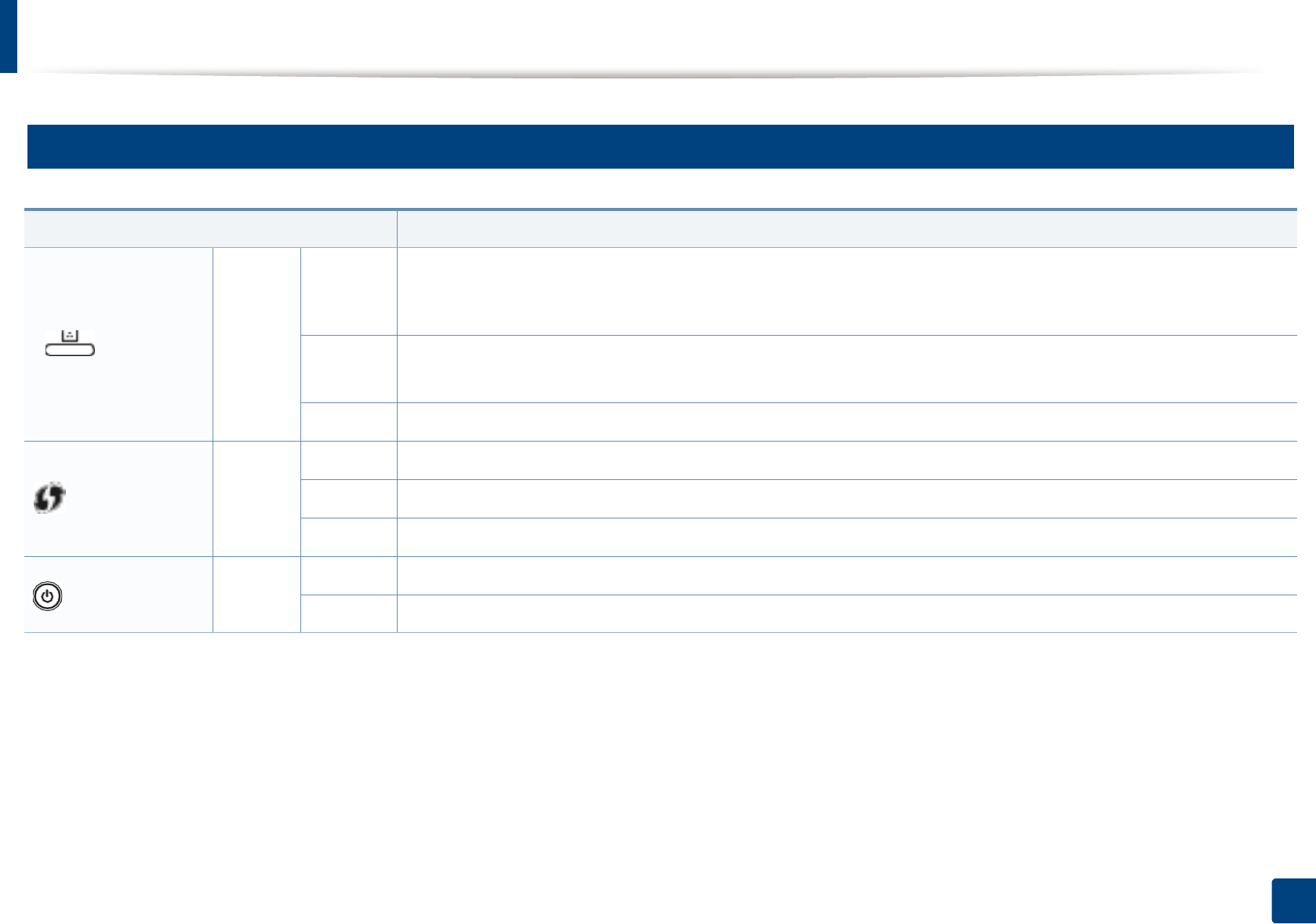
Understanding the status LED
58
4. Troubleshooting
4
Toner LED/ WPS LED
Status Description
(Toner LED) Orange
Blinking
Small amount of toner is left in the cartridge. The estimated cartridge life of toner is close. Prepare a new cartridge for
replacement. You may temporarily increase the printing quality by redistributing the toner (see "Redistributing toner"
on page 7).
On A toner cartridge has almost reached its estimated cartridge life1. It is recommended to replace the toner cartridge (see
"Replacing the toner cartridge" on page 8).
1. Estimated cartridge life means the expected or estimated toner cartridge life, which indicates the average capacity of print-outs and is designed pursuant to ISO/IEC 19752. The number of pages
may be affected by operating environment, printing interval, graphics, media type and media size. Some amount of toner may remain in the cartridge even when red LED is on and the printer
stops printing.
Off All toner cartridges are at normal capacity.
(WPS LED)2
2. Wireless model only (see "Features by models" on page 4).
Blue
Blinking The machine is connecting to a wireless network.
On The machine is connected to a wireless network (see "Using the WPS button" on page 20).
Off The machine is disconnected from a wireless network.
(Power LED) Blue
On The machine is in power save mode.
Off The machine is in ready mode or the machine’s power is off.
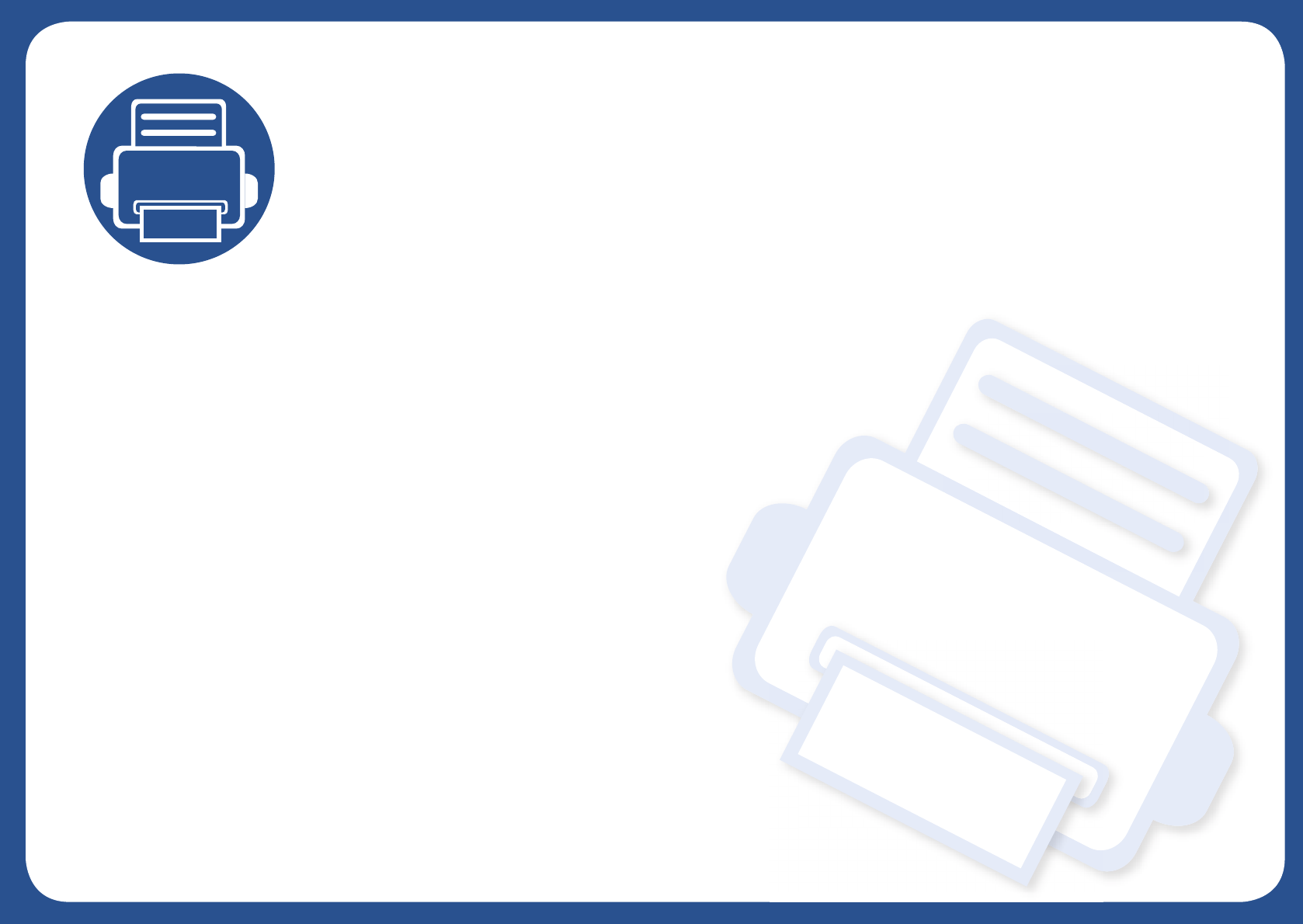
5. Appendix
This chapter provides product specifications and information concerning applicable regulations.
•Specifications 2
• Regulatory information 11
•Copyright 21
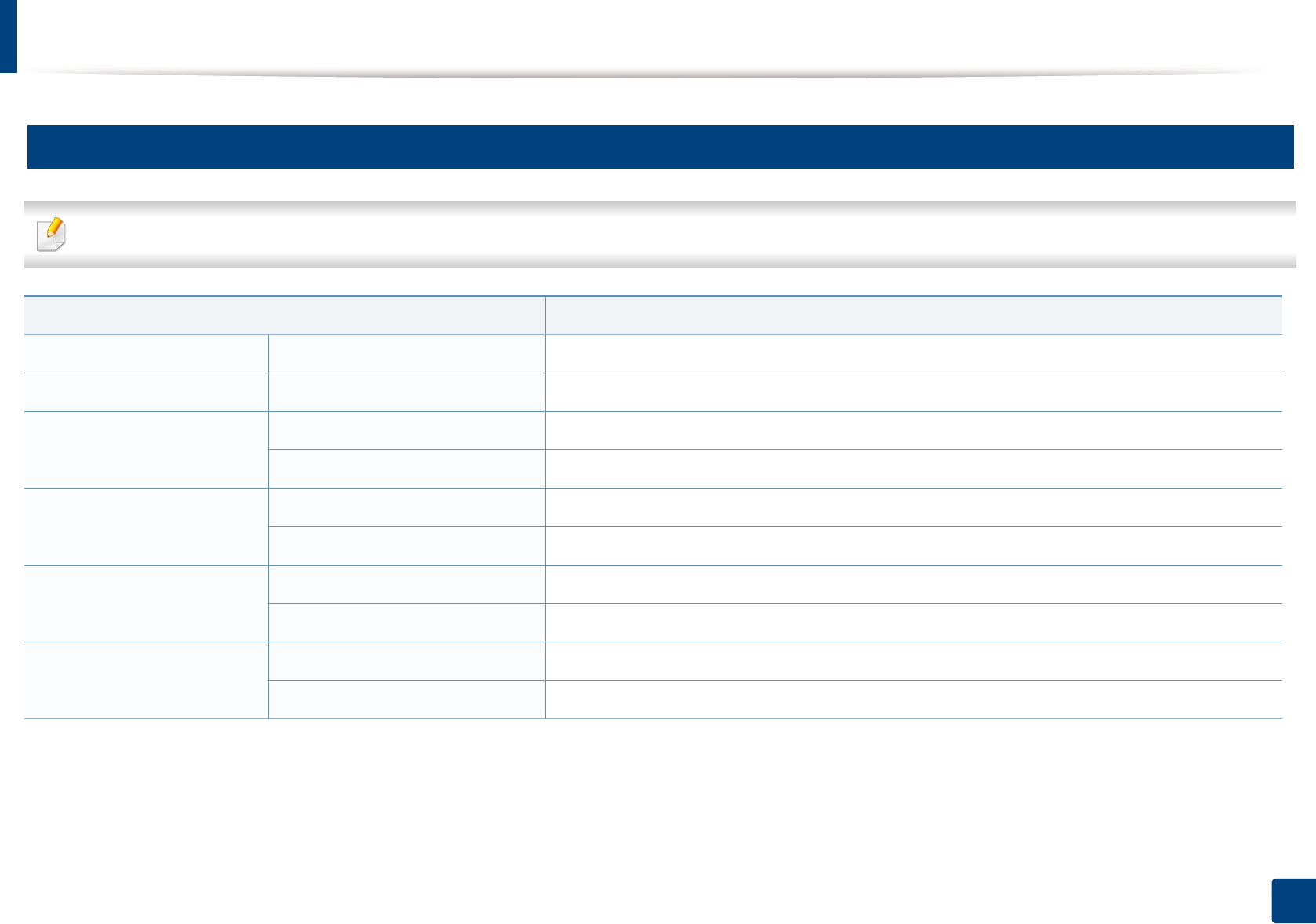
60
5. Appendix
Specifications
1
General specifications
The specification values listed below are subject to change without notice. See www.samsung.com for possible changes in information.
Items Description
Dimension Width x Length x Height 332 x 215 x 178 mm (13.07 x 8.46 x 7.01 inches)
Weight Machine with consumables 4.95 kg (10.91 lbs)
Noise Level1
Ready mode Less than 26 dB (A)
Print mode Less than 50 dB (A)
Temperature Operation 10 to 32°C (50 to 90°F)
Storage (packed) -20 to 40°C (-4 to 104°F)
Humidity Operation 10 to 80% RH
Storage (packed) 20 to 95% RH
Power rating2110 volt models AC 110 - 127 V
220 volt models AC 220 - 240 V
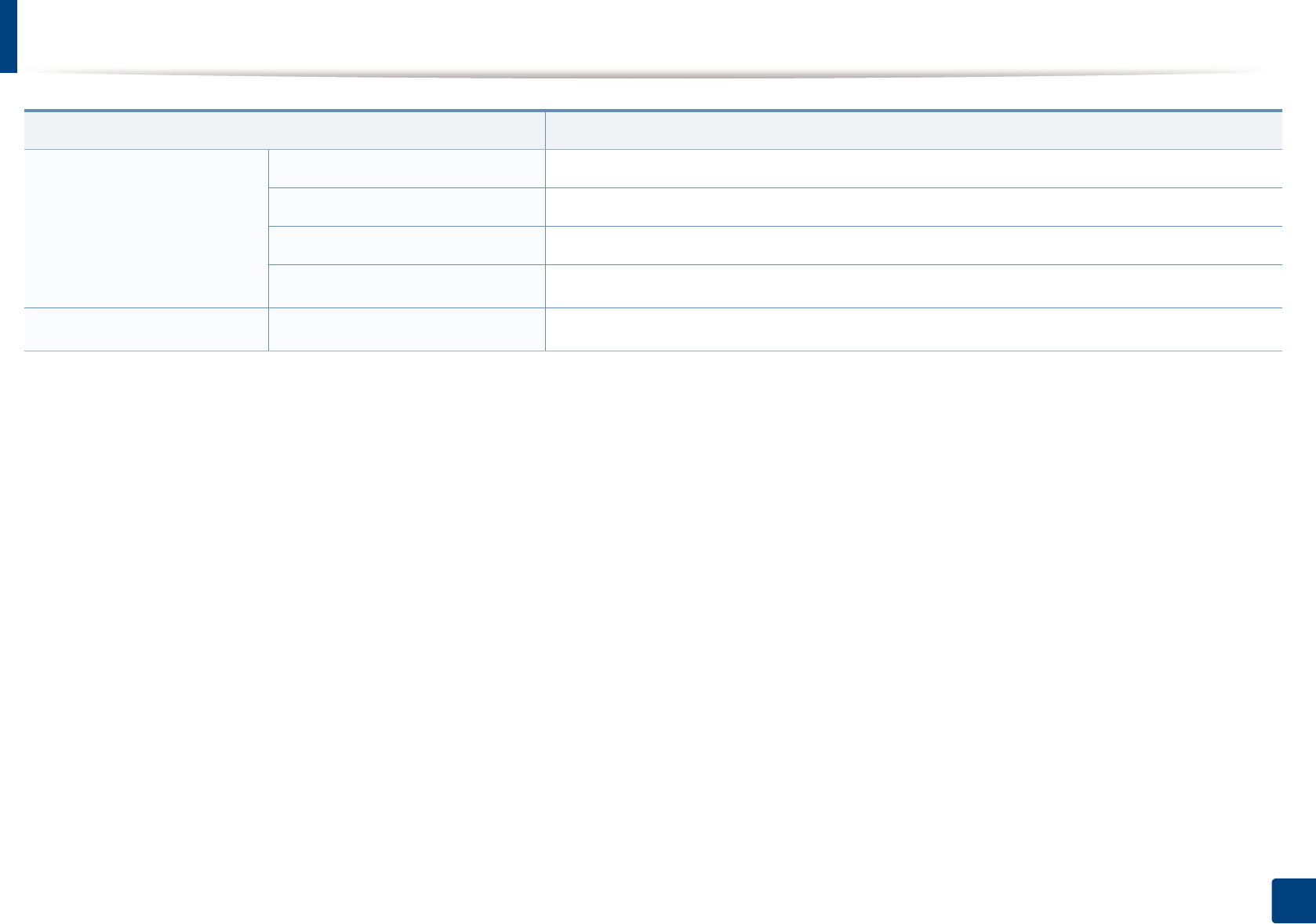
Specifications
61
5. Appendix
Power consumption Average operating mode Less than 310W
Ready mode Less than 30 W
Power save mode Less than 0.9 W (M-202x Series), Less than 1.2 W (M-202xW Series)
Power off mode Less than 0.45 W (0.1 W3)
Wireless 4Module T77H262 / SPW-B4319S
1. Sound Pressure Level, ISO 7779. Configuration tested: basic machine installation, A4 paper, simplex printing.
2. See the rating label on the machine for the correct voltage (V), frequency (hertz) and type of current (A) for your machine.
3. For the machine that has a power switch.
4. Wireless model only (see "Features by models" on page 4).
Items Description
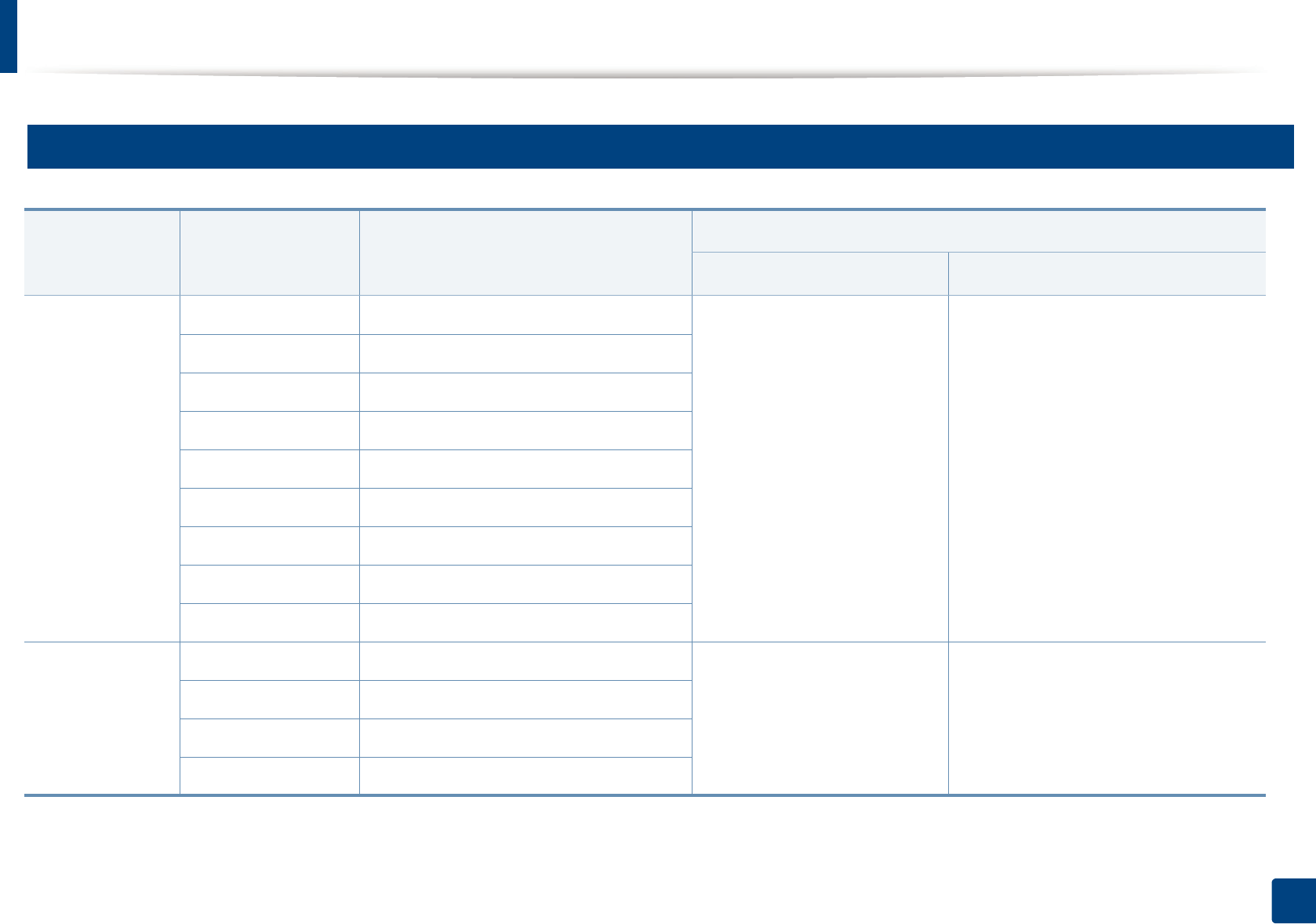
Specifications
62
5. Appendix
2
Print media specifications
Type Size Dimensions
Print media weight/Capacity1
Tray Manual feeding in tray2
Plain paper
Letter 216 x 279 mm (8.5 x 11 inches) 71 to 85 g/m2 (19 to 23 lbs
bond)
• 150 sheets of 80 g/m2 (21 lbs
bond)
71 to 85 g/m2 (19 to 23 lbs bond)
• 1 sheet
Legal 216 x 356 mm (8.5 x 14 inches)
US Folio 216 x 330 mm (8.5 x 13 inches)
A4 210 x 297 mm (8.27 x 11.69 inches)
Oficio 216 x 343 mm (8.5 x 13.5 inches)
JIS B5 182 x 257 mm (7.17 x 10.12 inches)
ISO B5 176 x 250 mm (6.93 x 9.84 inches)
Executive 184 x 267 mm (7.25 x 10.5 inches)
A5 148 x 210 mm (5.83 x 8.27 inches)
Envelope
Envelope Monarch 98 x 191 mm (3.87 x 7.5 inches) 75 to 90 g/m2 (20 to 24 lbs
bond)
• 10 sheets
75 to 90 g/m2 (20 to 24 lbs bond)
• 1 sheet
Envelope No. 10 105 x 241 mm (4.12 x 9.5 inches)
Envelope DL 110 x 220 mm (4.33 x 8.66 inches)
Envelope C5 162 x 229 mm (6.38 x 9.02 inches)
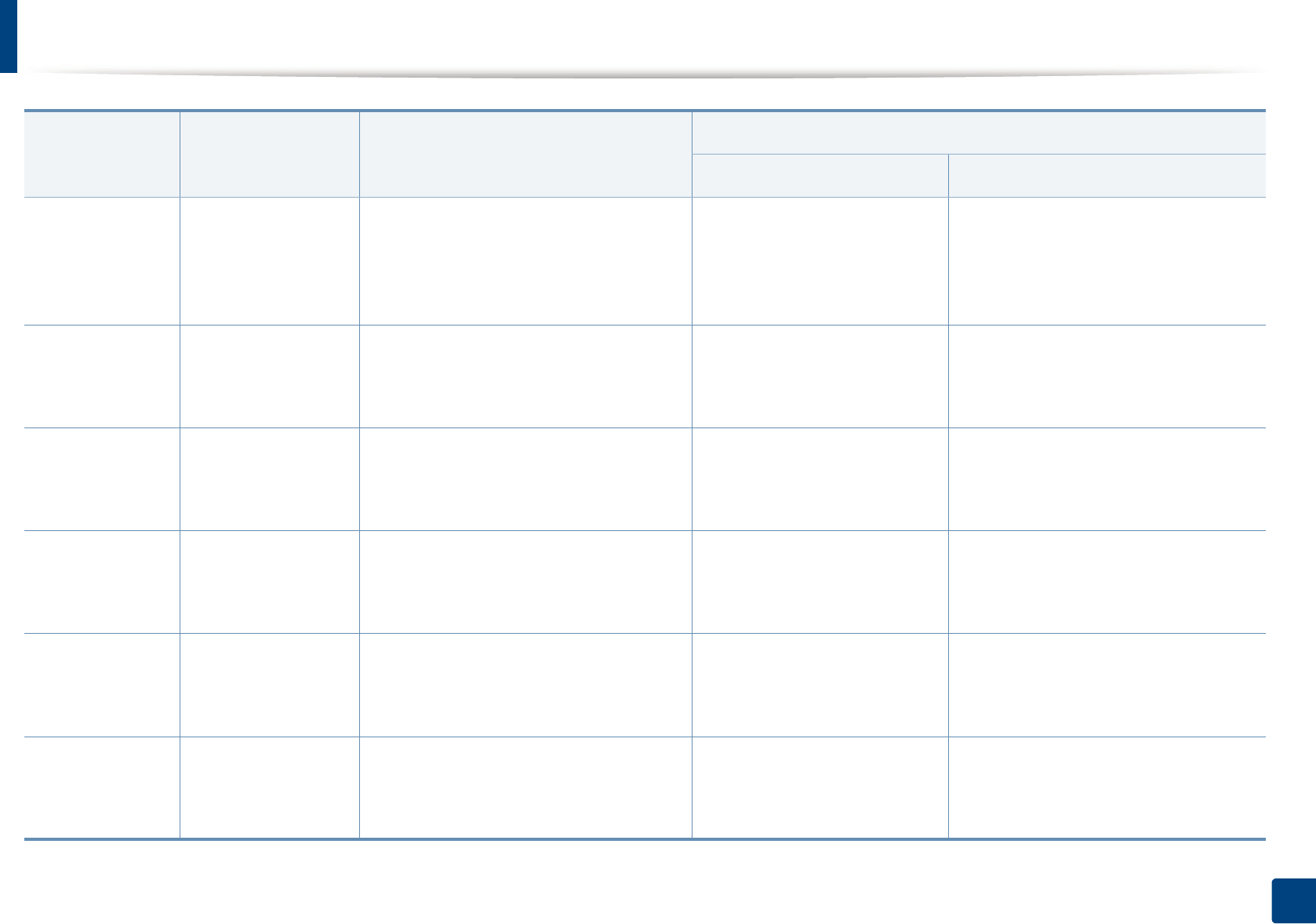
Specifications
63
5. Appendix
Thick paper Refer to the Plain
paper section
Refer to the Plain paper section 86 to 120 g/m2 (23 to 32 lbs
bond)
• 50 sheets of 120 g/m2 (32 lbs
bond)
86 to 120 g/m2 (23 to 32 lbs bond)
• 1 sheet
Thin paper Refer to the Plain
paper section
Refer to the Plain paper section 60 to 70 g/m2 (16 to 19 lbs bond)
• 160 sheets of 60 g/m2 (16 lbs
bond)
60 to 70 g/m2 (16 to 19 lbs bond)
• 1 sheet
Cotton Refer to the Plain
paper section
Refer to the Plain paper section 75 to 90 g/m2 (20 to 24 lbs bond)
• 150 sheets of 80 g/m2 (21 lbs
bond)
75 to 90 g/m2 (20 to 24 lbs bond)
• 1 sheet
Colored Refer to the Plain
paper section
Refer to the Plain paper section 75 to 90 g/m2 (20 to 24 lbs bond)
• 150 sheets of 80 g/m2 (21 lbs
bond)
75 to 90 g/m2 (20 to 24 lbs bond)
• 1 sheet
Pre-printed Refer to the Plain
paper section
Refer to the Plain paper section 75 to 90 g/m2 (20 to 24 lbs bond)
• 150 sheets of 80 g/m2 (21 lbs
bond)
75 to 90 g/m2 (20 to 24 lbs bond)
• 1 sheet
Recycled Refer to the Plain
paper section
Refer to the Plain paper section 60 to 90 g/m2 (16 to 24 lbs bond)
• 150 sheets of 80 g/m2 (21 lbs
bond)
60 to 90 g/m2 (16 to 24 lbs bond)
• 1 sheet
Type Size Dimensions
Print media weight/Capacity1
Tray Manual feeding in tray2
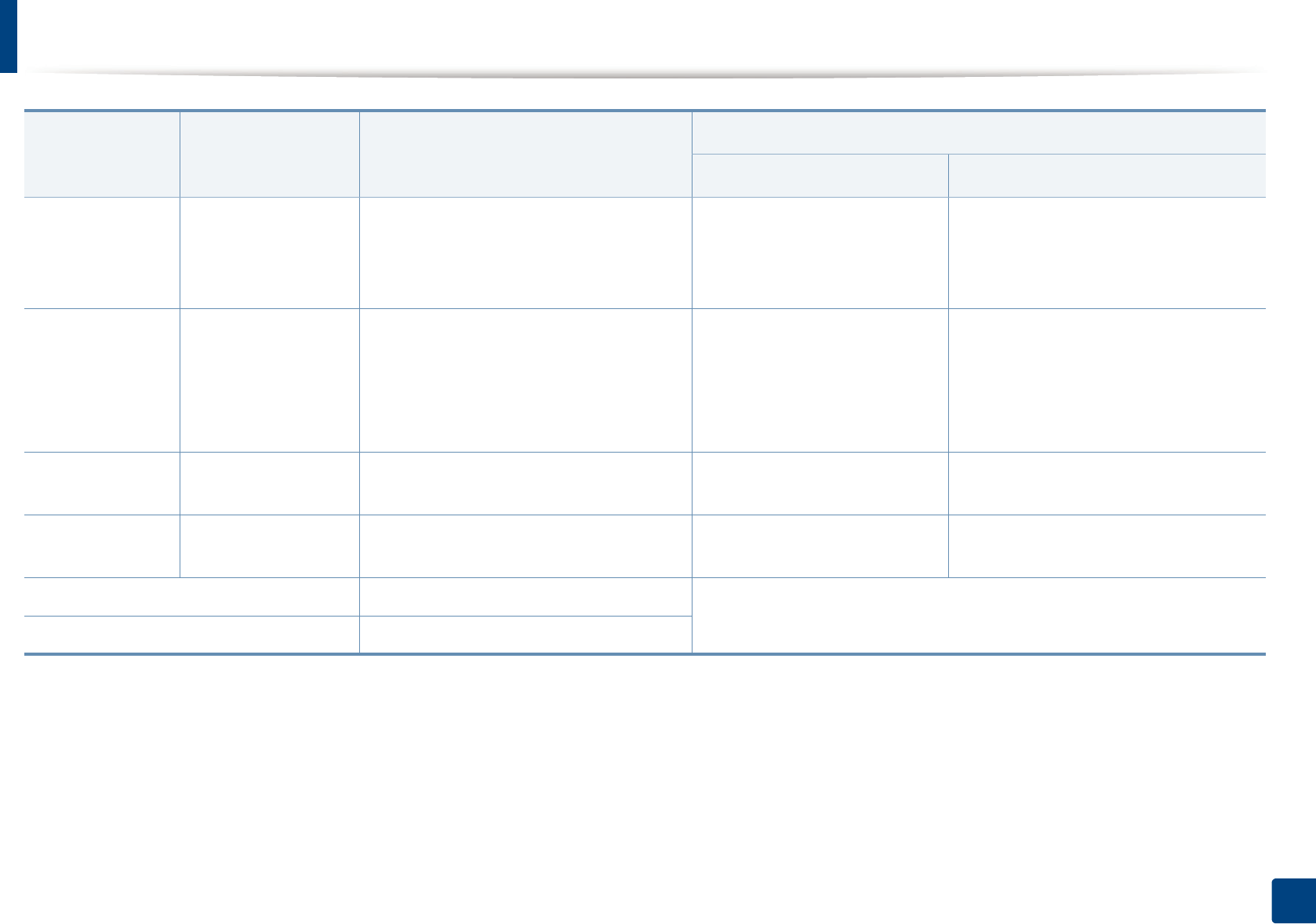
Specifications
64
5. Appendix
Labels3
Letter, Legal, Oficio,
US Folio, A4, JIS B5,
ISO B5, Executive,
A5
Refer to the Plain paper section 120 to 150 g/m2 (32 to 40 lbs
bond)
• 10 sheets
120 to 150 g/m2 (32 to 40 lbs bond)
• 1 sheet
Card stock
Letter, Legal, Oficio,
US Folio, A4, JIS B5,
ISO B5, Executive,
A5,
Postcard 4x6
Refer to the Plain paper section 121 to 163 g/m2 (32 to 43 lbs
bond)
• 10 sheets
121 to 163 g/m2 (32 to 43 lbs bond)
• 1 sheet
Bond paper Refer to the Plain
paper section
Refer to the Plain paper section • 10 sheets • 1 sheet
Archive Refer to the Plain
paper section
Refer to the Plain paper section • 100 sheets • 1 sheet
Minimum size (custom) 76 x 127 mm (3 x 5 inches) 60 to 163 g/m2 (16 to 43 lbs bond)
Maximum size (custom) 216 x 356 mm (8.5 x 14 inches)
1. Maximum capacity may differ depending on media weight, thickness, and environmental conditions.
2. Feed one sheet at a time.
3. The smoothness of the labels used in this machine is 100 to 250 (sheffield). This means the numeric level of smoothness.
Type Size Dimensions
Print media weight/Capacity1
Tray Manual feeding in tray2
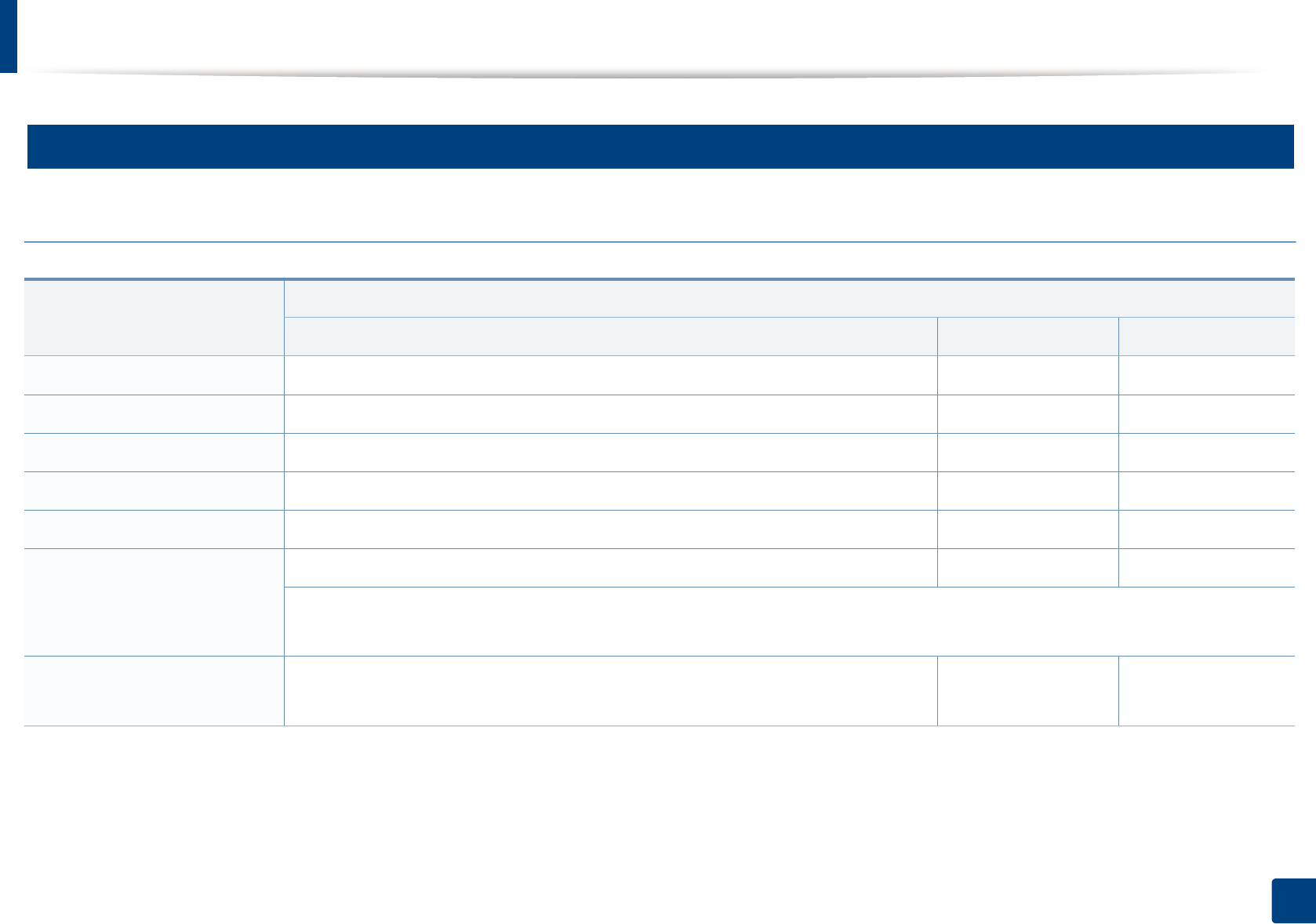
Specifications
65
5. Appendix
3
System requirements
Microsoft® Windows®
Operating system
Requirement (recommended)
CPU RAM free HDD space
Windows® 2000 Intel® Pentium® II 400 MHz (Pentium III 933 MHz) 64 MB (128 MB) 600 MB
Windows® XP Intel® Pentium® III 933 MHz (Pentium IV 1 GHz) 128 MB (256 MB) 1.5 GB
Windows Server® 2003 Intel® Pentium® III 933 MHz (Pentium IV 1 GHz) 128 MB (512 MB) 1.25 GB to 2 GB
Windows Server® 2008 Intel® Pentium® IV 1 GHz (Pentium IV 2 GHz) 512 MB (2 GB) 10 GB
Windows Vista® Intel® Pentium® IV 3 GHz 512 MB (1 GB) 15 GB
Windows® 7
Intel® Pentium® IV 1 GHz 32-bit or 64-bit processor or higher 1 GB (2 GB) 16 GB
• Support for DirectX® 9 graphics with 128 MB memory (to enable the Aero theme).
•DVD-R/W Drive
Windows Server® 2008 R2 Intel® Pentium® IV 1 GHz (x86) or 1.4 GHz (x64) processors (2 GHz or faster) 512 MB (2 GB) 10 GB
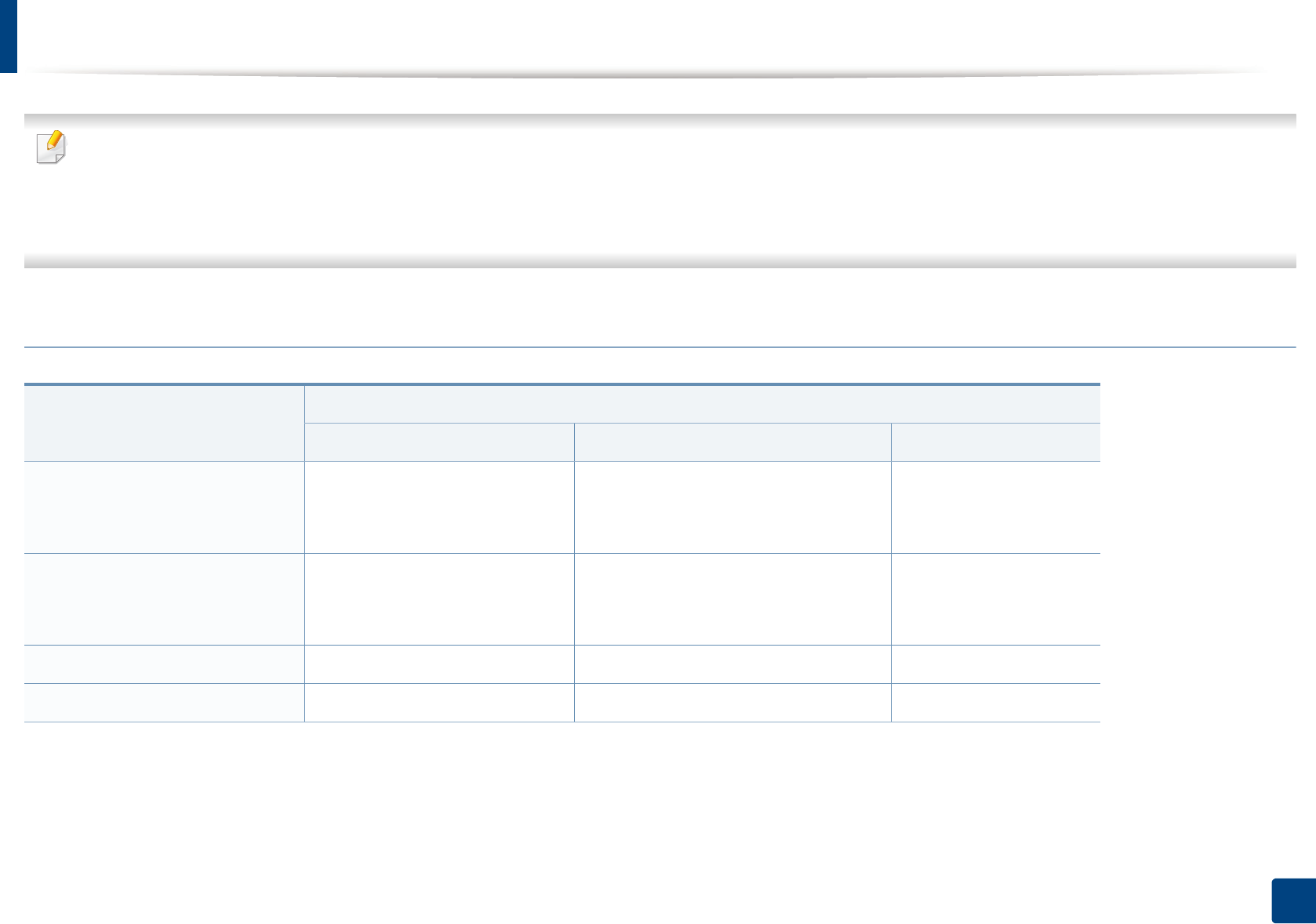
Specifications
66
5. Appendix
• Internet Explorer 6.0 or higher is the minimum requirement for all Windows operating systems.
• Users who have administrator rights can install the software.
•Windows Terminal Services is compatible with your machine.
• For Windows 2000, Services Pack 4 or higher is required.
Macintosh
Operating system
Requirements (Recommended)
CPU RAM Free HDD space
Mac OS X 10.4
• Intel® processors
• PowerPC G4/ G5
• 128 MB for a powerPC based Mac
(512 MB)
• 512 MB for an Intel-based Mac (1 GB)
1 GB
Mac OS X 10.5
• Intel® processors
• 867 MHz or faster Power PC G4/
G5
512 MB (1 GB) 1 GB
Mac OS X 10.6 • Intel® processors 1 GB (2 GB) 1 GB
Mac OS X 10.7 • Intel® processors 2 GB 4 GB
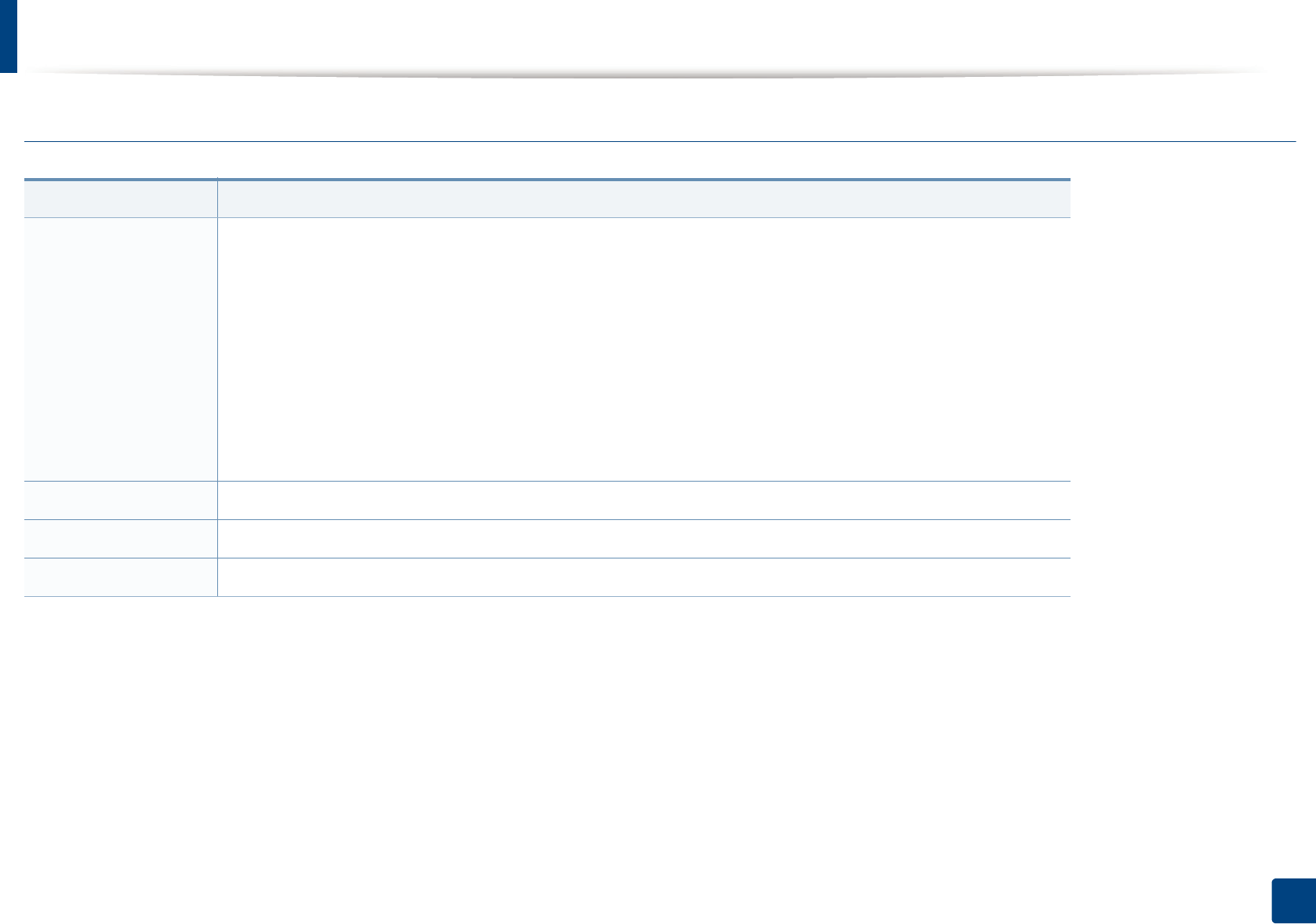
Specifications
67
5. Appendix
Linux
Items Requirements
Operating system
Fedora 5~13 (32/ 64 bit)
OpenSuSE® 10.2, 10.3, 11.0, 11.1, 11.2 (32/64 bit)
SuSE 10.1 (32 bit)
Ubuntu 6.06, 6.10, 7.04, 7.10, 8.04, 8.10, 9.04, 9.10, 10.04 (32/64 bit)
Mandriva 2007, 2008, 2009, 2009.1, 2010 (32/64 bit)
Debian 4.0, 5.0 (32/64 bit)
Redhat® Enterprise Linux WS 4, 5 (32/64 bit)
SuSE Linux Enterprise Desktop 10, 11 (32/64 bit)
CPU Pentium IV 2.4GHz (Intel Core™2)
RAM 512 MB (1 GB)
Free HDD space 1 GB (2 GB)
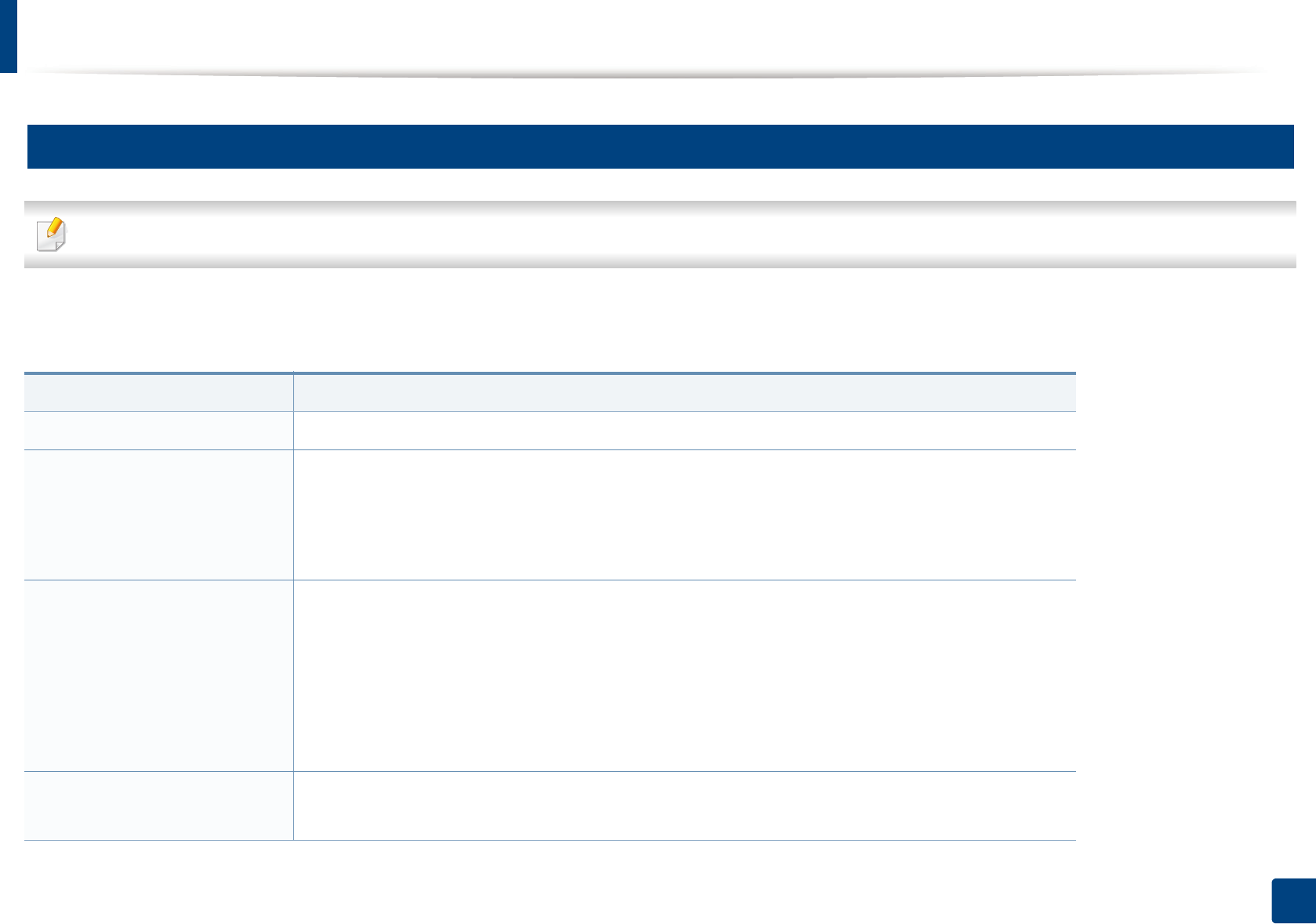
Specifications
68
5. Appendix
4
Network environment
Network and wireless models only (see "Features by models" on page 4).
You need to set up the network protocols on the machine to use it as your network machine. The following table shows the network environments supported by the
machine.
Items Specifications
Network interface • 802.11b/g/n Wireless LAN
Network operating system
• Windows 2000/Server 2003 /Server 2008/XP/Vista/7/Server 2008 R2
•Various Linux OS
• Mac OS X 10.4 ~ 10.7
• Unix
Network protocols
•TCP/IPv4
• DHCP, BOOTP
• DNS, WINS, Bonjour, SLP, UPnP
• Standard TCP/IP Printing (RAW), LPR, IPP, WSD
• SNMPv 1/2/3, HTTP, IPSec
• TCP/IPv6 (DHCP, DNS, RAW, LPR, SNMPv 1/2/3, HTTP, IPSec)
Wireless security • Authentication: Open System, Shared Key, WPA Personal, WPA2 Personal (PSK)
• Encryption: WEP64, WEP128, TKIP, AES
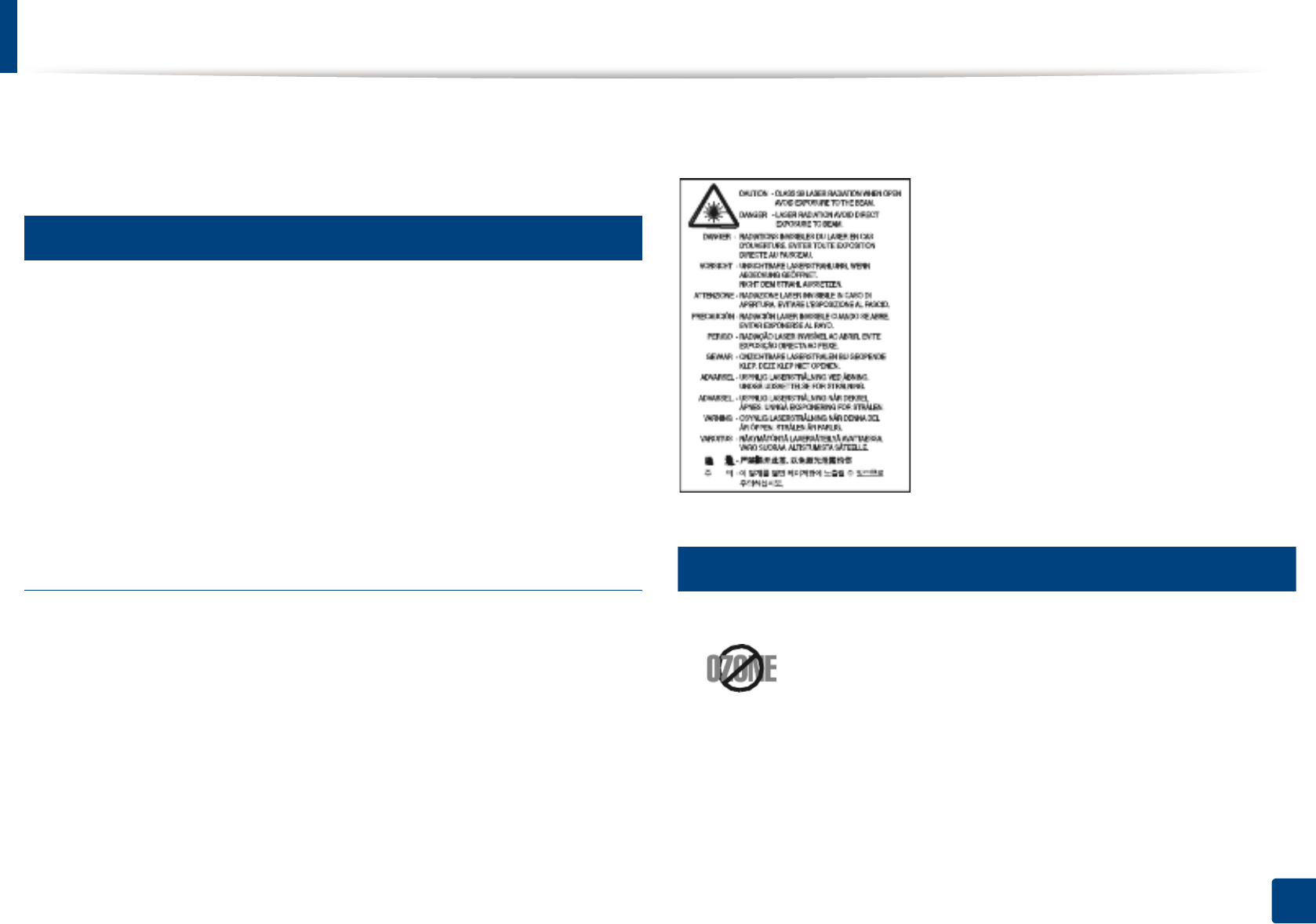
69
5. Appendix
Regulatory information
This machine is designed for a normal work environment and certified with
several regulatory statements.
5
Laser safety statement
The printer is certified in the U.S. to conform to the requirements of DHHS 21
CFR, chapter 1 Subchapter J for Class I(1) laser products, and elsewhere is
certified as a Class I laser product conforming to the requirements of IEC 60825-
1 : 2007.
Class I laser products are not considered to be hazardous. The laser system and
printer are designed so there is never any human access to laser radiation above
a Class I level during normal operation, user maintenance or prescribed service
condition.
Warning
Never operate or service the printer with the protective cover removed from
laser/scanner assembly. The reflected beam, although invisible, can damage
your eyes.
When using this product, these basic safety precautions should always be
followed to reduce risk of fire, electric shock, and injury to persons:
6
Ozone safety
This product's ozone emission rate is under 0.1 ppm. Because
ozone is heavier than air, keep the product in a place with good
ventilation.
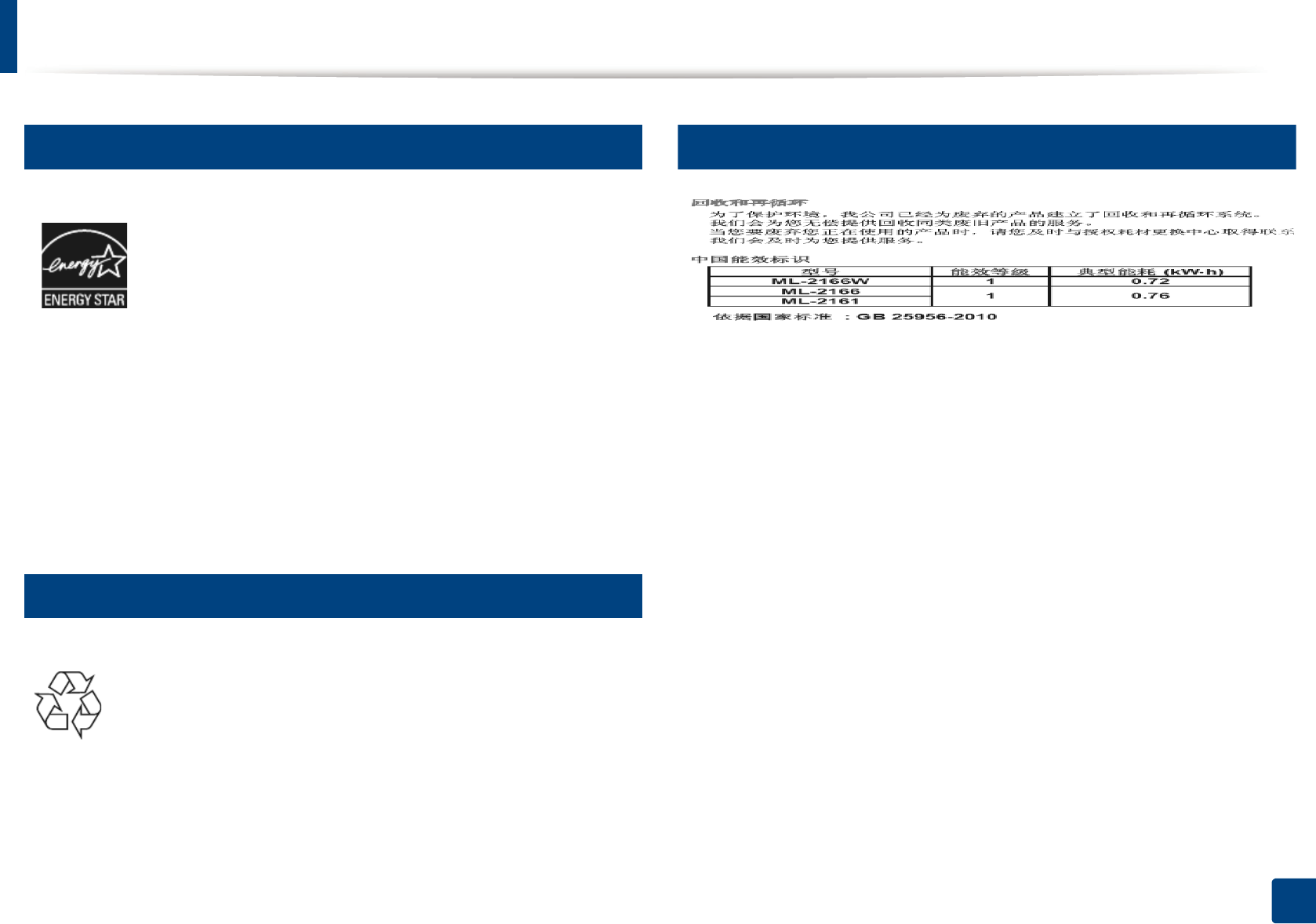
Regulatory information
70
5. Appendix
7
Power saver
8
Recycling
9
China only
This printer contains advanced energy conservation technology
that reduces power consumption when it is not in active use.
When the printer does not receive data for an extended period of
time, power consumption is automatically lowered.
ENERGY STAR and the ENERGY STAR mark are registered U.S.
marks.
For more information on the ENERGY STAR program see http://
www.energystar.gov
For ENERGY STAR certified models, the ENERGY STAR label will be
on your machine. Check if your machine is ENERGY STAR
certified.
Recycle or dispose of the packaging material for this product in an
environmentally responsible manner.
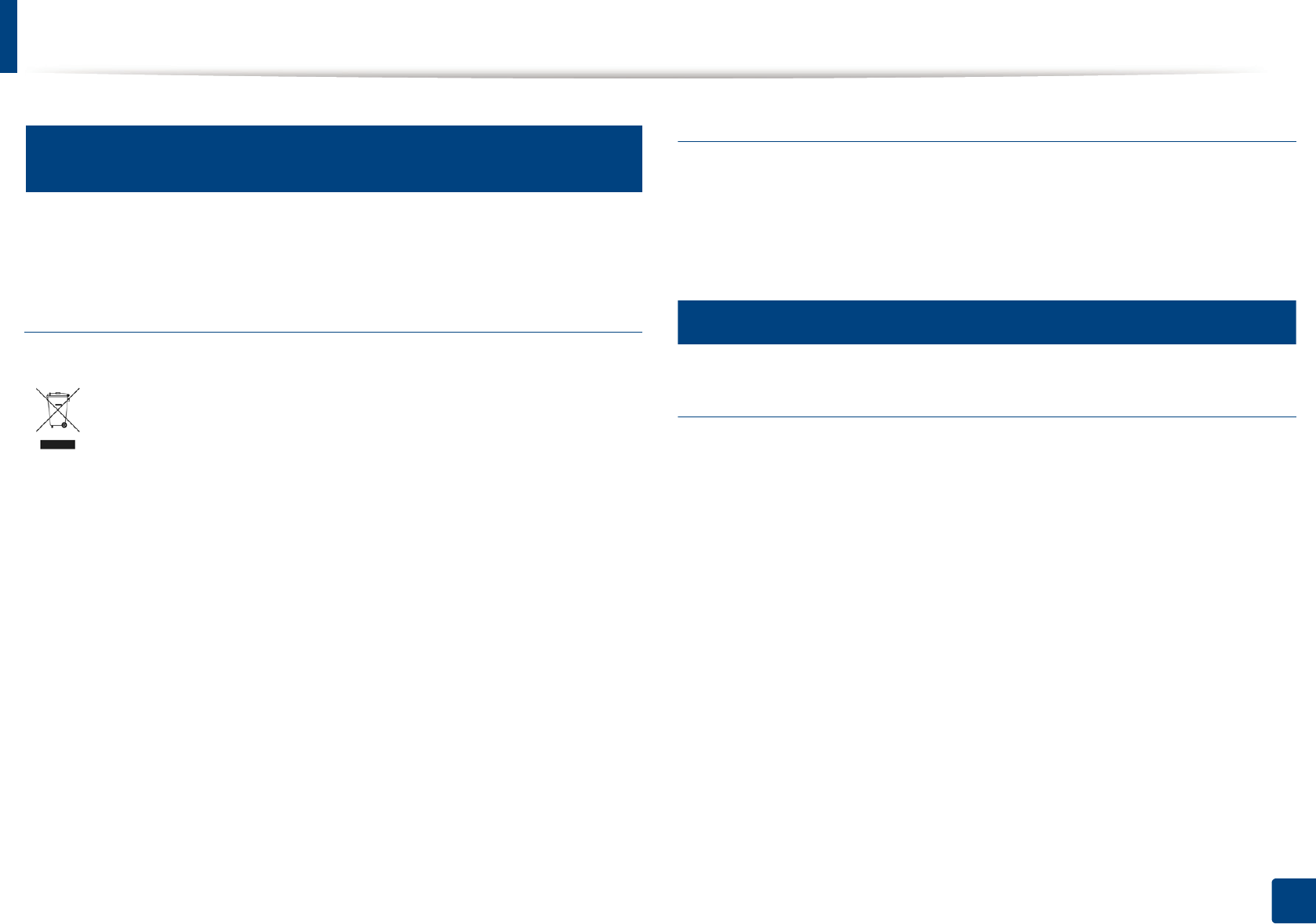
Regulatory information
71
5. Appendix
10
Correct disposal of this product (Waste electrical &
electronic equipment)
(Applicable in the european union and other
european countries with separate collection
systems)
The United States of America only
Dispose unwanted electronics through an approved recycler. To find the nearest
recycling location, go to our website:www.samsung.com/recyclingdirect Or call,
(877) 278 - 0799
11
Radio frequency emissions
FCC information to the user
This device complies with Part 15 of the FCC Rules. Operation is subject to the
following two conditions:
• This device may not cause harmful interference, and
• This device must accept any interference received, including interference
that may cause undesired operation.
This marking on the product, accessories or literature indicates that the
product and its electronic accessories (e.g. charger, headset, USB cable)
should not be disposed of with other household waste at the end of
their working life. To prevent possible harm to the environment or
human health from uncontrolled waste disposal, please separate these
items from other types of waste and recycle them responsibly to
promote the sustainable reuse of material resources.
Household users should contact either the retailer where they
purchased this product, or their local government office, for details of
where and how they can take these items for environmentally safe
recycling.
Business users should contact their supplier and check the terms and
conditions of the purchase contract. This product and its electronic
accessories should not be mixed with other commercial wastes for
disposal.
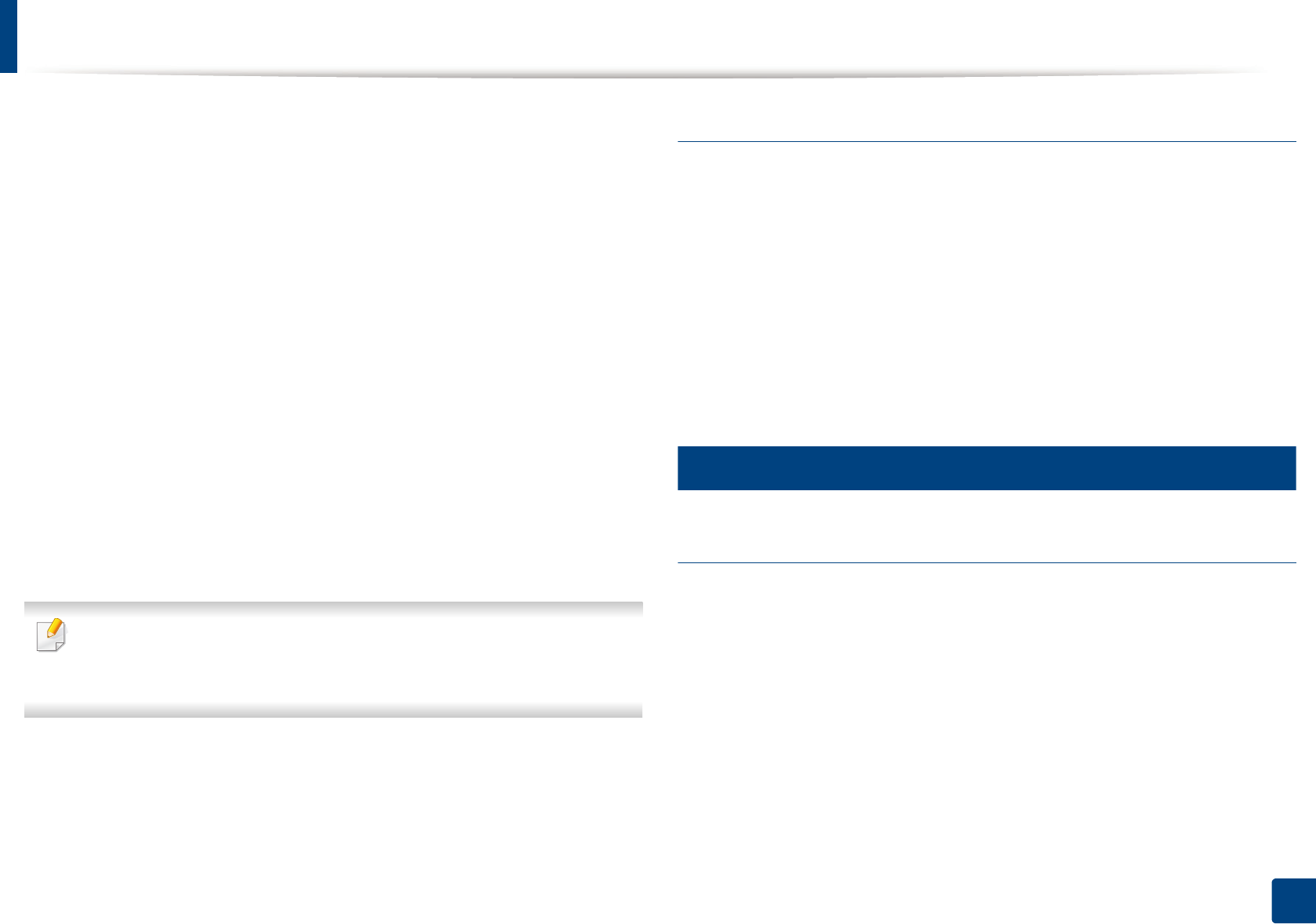
Regulatory information
72
5. Appendix
This equipment has been tested and found to comply with the limits for a Class
B digital device, pursuant to Part 15 of the FCC Rules. These limits are designed
to provide reasonable protection against harmful interference in a residential
installation. This equipment generates, uses and can radiate radio frequency
energy and, if not installed and used in accordance with the instructions, may
cause harmful interference to radio communications. However, there is no
guarantee that interference will not occur in a particular installation. If this
equipment does cause harmful interference to radio or television reception,
which can be determined by turning the equipment off and on, the user is
encouraged to try to correct the interference by one or more of the following
measures:
• Reorient or relocate the receiving antenna.
• Increase the separation between the equipment and receiver.
• Connect the equipment into an outlet on a circuit different from that to
which the receiver is connected.
• Consult the dealer or experienced radio TV technician for help.
Change or modifications not expressly approved by the manufacturer
responsible for compliance could void the user's authority to operate the
equipment.
Canadian radio interference regulations
This digital apparatus does not exceed the Class B limits for radio noise
emissions from digital apparatus as set out in the interference-causing
equipment standard entitled “Digital Apparatus”, ICES-003 of the Industry and
Science Canada.
Cet appareil numérique respecte les limites de bruits radioélectriques
applicables aux appareils numériques de Classe B prescrites dans la norme sur le
matériel brouilleur: “Appareils Numériques”, ICES-003 édictée par l’Industrie et
Sciences Canada.
12
United states of america
Federal communications commission (FCC)
Intentional emitter per FCC Part 15
Low power, Radio LAN type devices (radio frequency (RF) wireless
communication devices), operating in the 2.4 GHz/5 GHz Band, may be present
(embedded) in your printer system. This section is only applicable if these
devices are present. Refer to the system label to verify the presence of wireless
devices.
Wireless devices that may be in your system are only qualified for use in the
United States of America if an FCC ID number is on the system label.
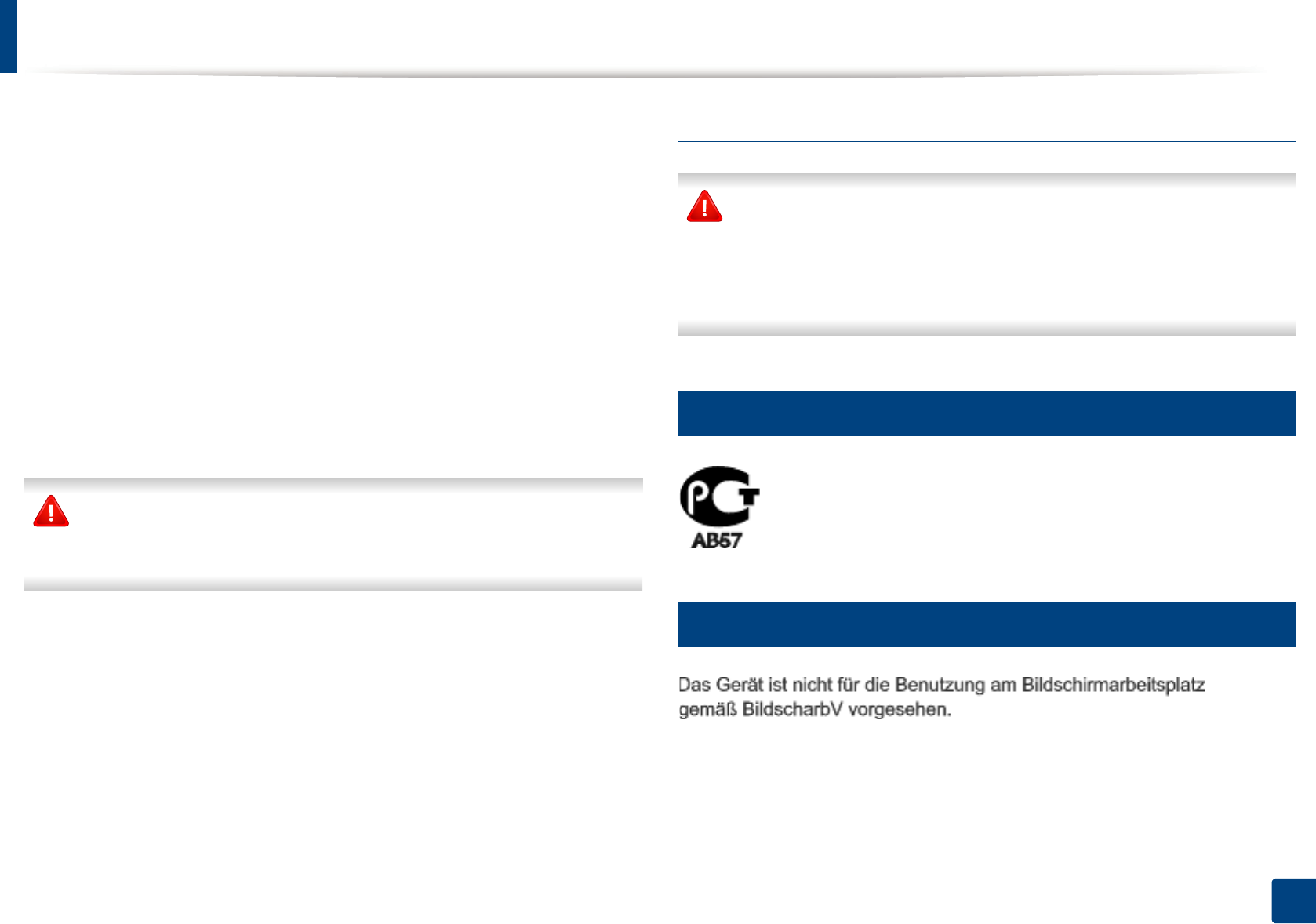
Regulatory information
73
5. Appendix
The FCC has set a general guideline of 20 cm (8 inches) separation between the
device and the body, for use of a wireless device near the body (this does not
include extremities). This device should be used more than 20 cm (8 inches)
from the body when wireless devices are on. The power output of the wireless
device (or devices), which may be embedded in your printer, is well below the
RF exposure limits as set by the FCC.
This transmitter must not be collocated or operation in conjunction with any
other antenna or transmitter.
Operation of this device is subject to the following two conditions: (1) This
device may not cause harmful interference, and (2) this device must accept any
interference received, including interference that may cause undesired
operation of the device.
Wireless devices are not user serviceable. Do not modify them in any way.
Modification to a wireless device will void the authorization to use it.
Contact manufacturer for service.
FCC statement for wireless LAN use:
While installing and operating this transmitter and antenna combination
the radio frequency exposure limit of 1m W/cm2 may be exceeded at
distances close to the antenna installed. Therefore, the user must maintain
a minimum distance of 20cm from the antenna at all times. This device
cannot be colocated with another transmitter and transmitting antenna.
13
Russia only
14
Germany only
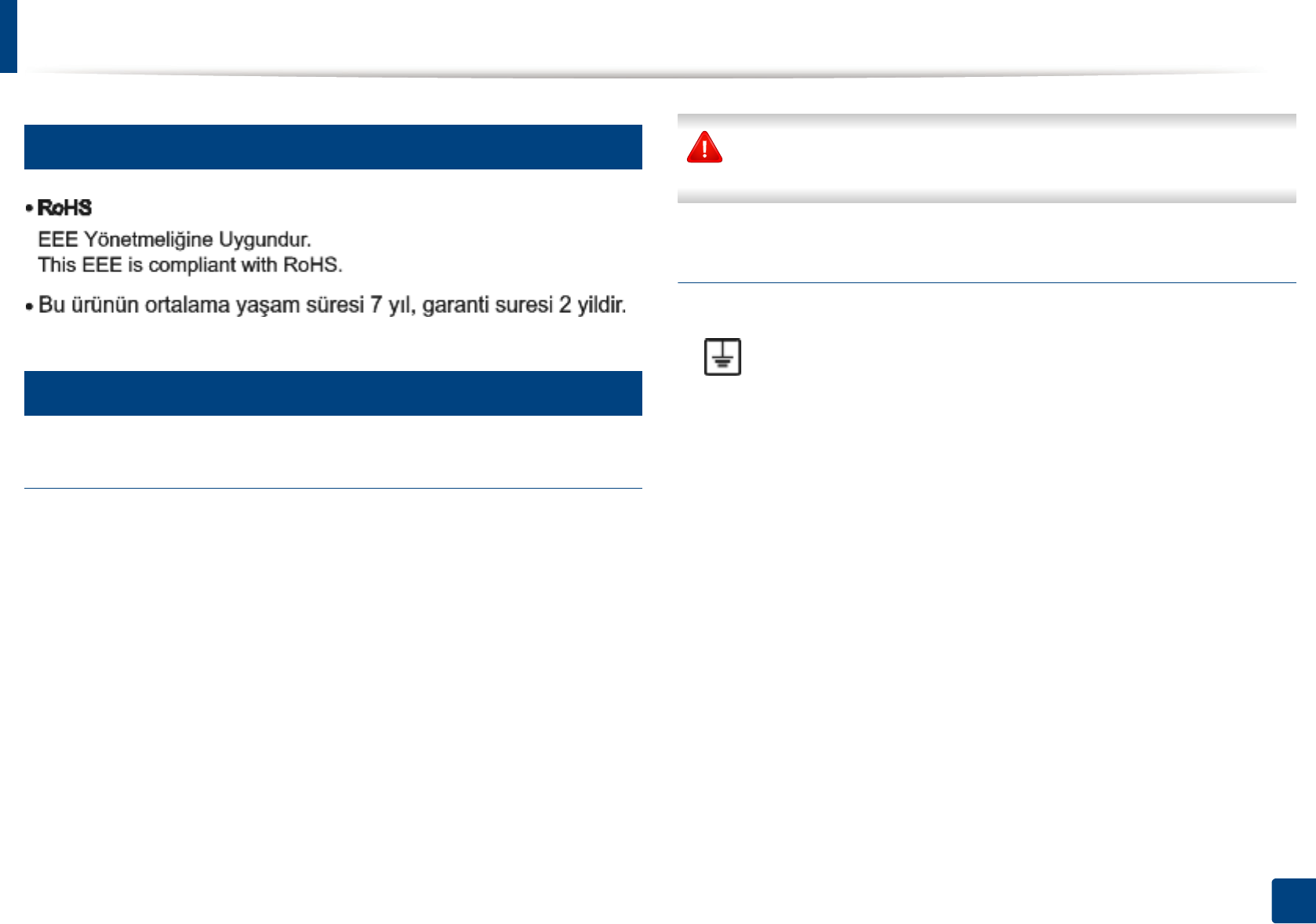
Regulatory information
74
5. Appendix
15
Turkey only
16
Replacing the fitted plug (for UK only)
Important
The mains lead for this machine is fitted with a standard (BS 1363) 13 amp plug
and has a 13 amp fuse. When you change or examine the fuse, you must re-fit
the correct 13 amp fuse. You then need to replace the fuse cover. If you have lost
the fuse cover, do not use the plug until you have another fuse cover.
Contact the people from you purchased the machine.
The 13 amp plug is the most widely used type in the UK and should be suitable.
However, some buildings (mainly old ones) do not have normal 13 amp plug
sockets. You need to buy a suitable plug adaptor. Do not remove the moulded
plug.
If you cut off the moulded plug, get rid of it straight away.You cannot rewire
the plug and you may receive an electric shock if you plug it into a socket.
Important warning:
If the wires in the mains lead do not match the colors marked in your plug, do
the following:
You must connect the green and yellow wire to the pin marked by the letter “E”
or by the safety ‘Earth symbol’ or colored green and yellow or green.
You must connect the blue wire to the pin which is marked with the letter “N” or
colored black.
You must connect the brown wire to the pin which is marked with the letter “L”
or colored red.
You must have a 13 amp fuse in the plug, adaptor, or at the distribution board.
You must earth this machine.
The wires in the mains lead have the following color code:
•Green and Yellow: Earth
•Blue: Neutral
•Brown: Live
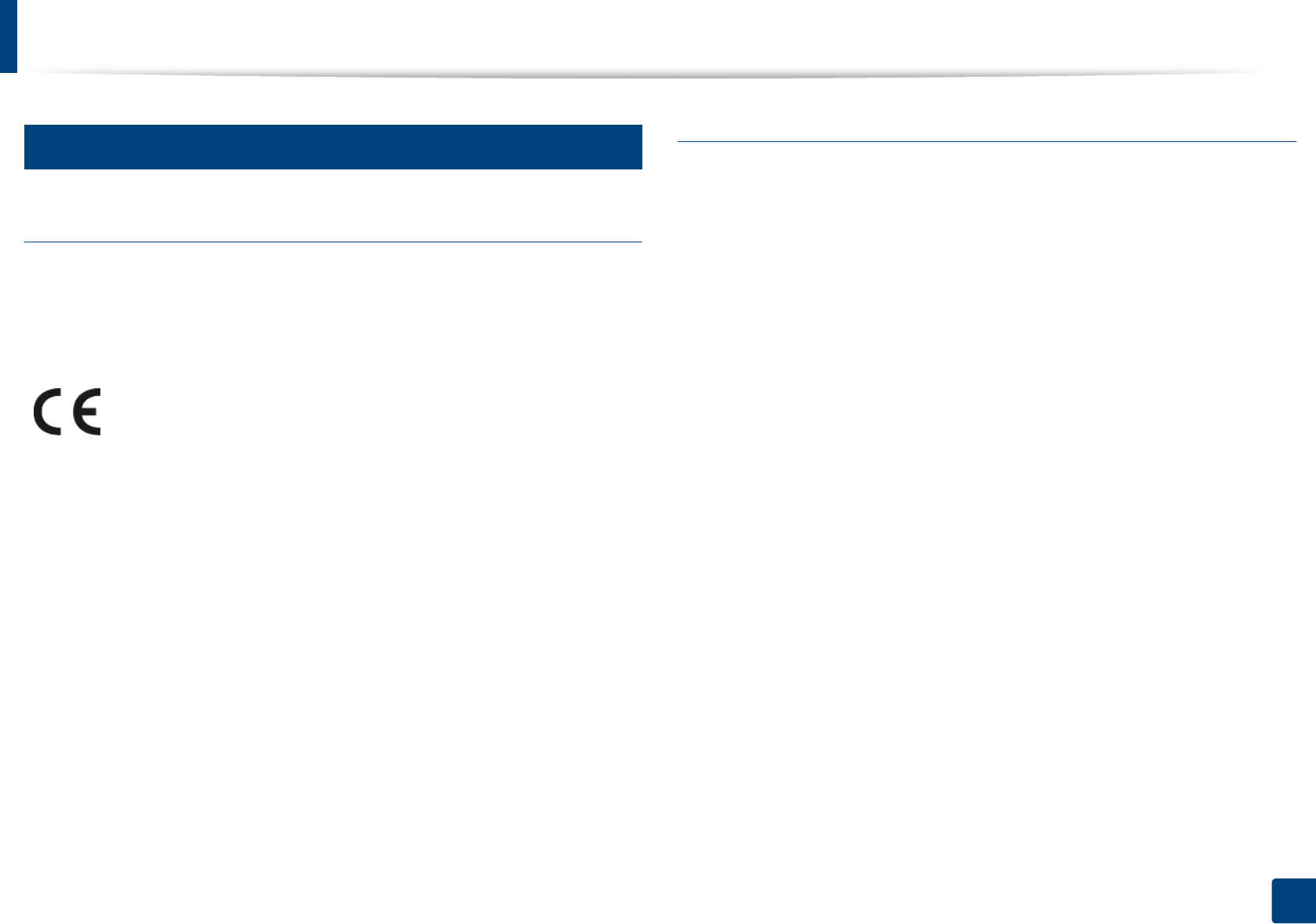
Regulatory information
75
5. Appendix
17
Declaration of conformity (European countries)
Approvals and Certifications
January 1, 1995: Council Directive 2006/95/EC Approximation of the laws of
the member states related to low voltage equipment.
January 1, 1996: Council Directive 2004/108/EC, approximation of the laws of
the Member States related to electromagnetic compatibility.
March 9, 1999: Council Directive 1999/5/EC on radio equipment and
telecommunications terminal equipment and the mutual recognition of their
conformity. A full declaration, defining the relevant Directives and referenced
standards can be obtained from your Samsung Electronics Co., Ltd.
representative.
EC Certification
Certification to 1999/5/EC Radio Equipment & Telecommunications Terminal
Equipment Directive (FAX)
This Samsung product has been self-certified by Samsung for pan-European
single terminal connection to the analogue public switched telephone network
(PSTN) in accordance with Directive 1999/5/EC. The product has been designed
to work with the national PSTNs and compatible PBXs of the European
countries:
In the event of problems, you should contact the Euro QA Lab of Samsung
Electronics Co., Ltd. in the first instance.
The product has been tested against TBR21. To assist in the use and application
of terminal equipment which complies with this standard, the European
Telecommunication Standards Institute (ETSI) has issued an advisory document
(EG 201 121) which contains notes and additional requirements to ensure
network compatibility of TBR21 terminals. The product has been designed
against, and is fully compliant with, all of the relevant advisory notes contained
in this document.
• Hereby, Samsung Electronics, declares that this [M-202x Series] is
in compliance with the essential requirements and other relevant
provisions of Low Voltage Directive (2006/95/EC), EMC Directive
(2004/108/EC).
• Hereby, Samsung Electronics, declares that this [M-202xW Series
] is in compliance with the essential requirements and other
relevant provisions of R&TTE Directive 1999/5/EC.
The declaration of conformity may be consulted at
www.samsung.com, go to Support > Download center and enter
your printer (MFP) name to browse the EuDoC.
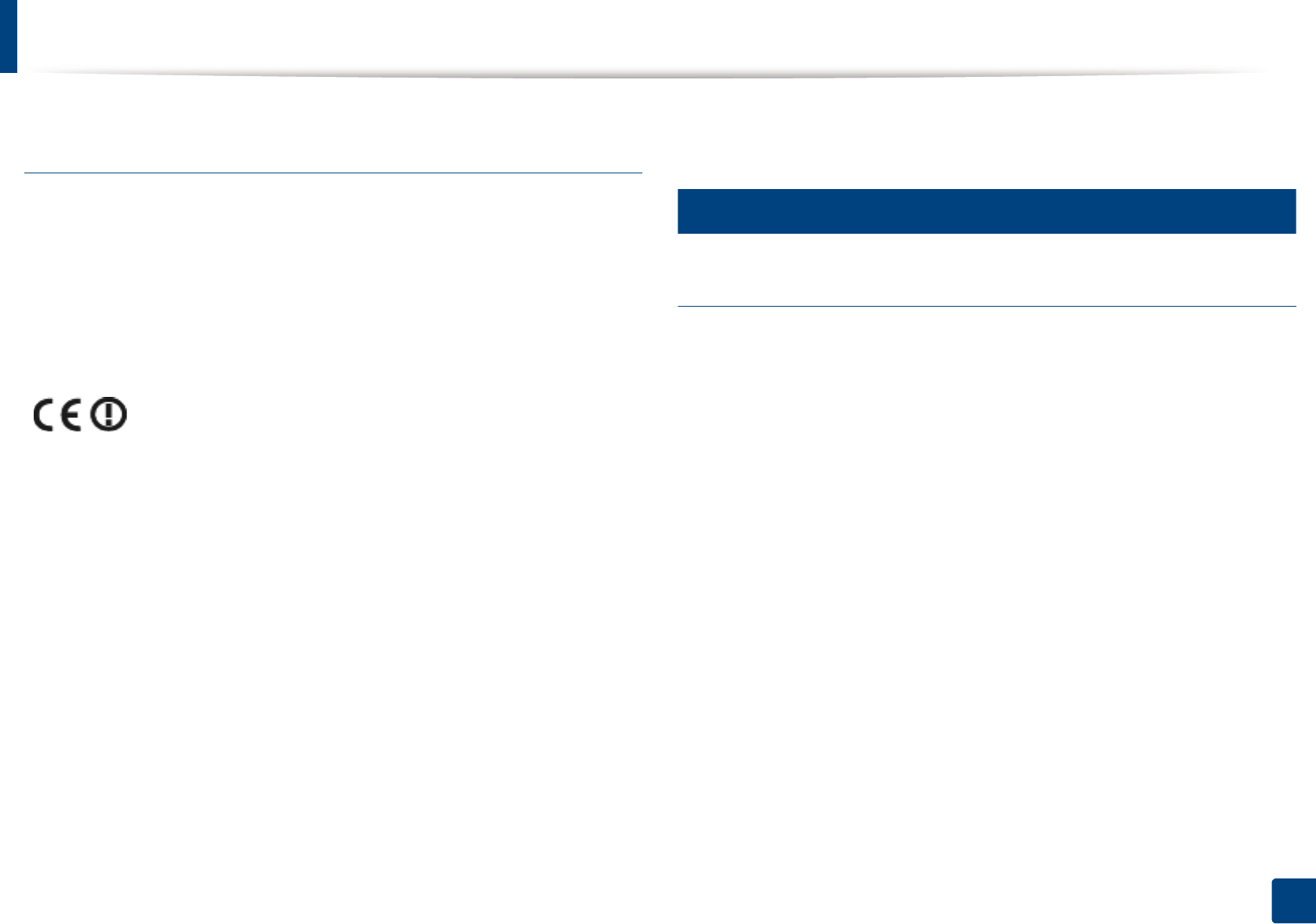
Regulatory information
76
5. Appendix
European radio approval information (for products
fitted with EU-approved radio devices)
Low power, Radio LAN type devices (radio frequency (RF) wireless
communication devices), operating in the 2.4 GHz/5 GHz band, may be present
(embedded) in your printer system which is intended for home or office use. This
section is only applicable if these devices are present. Refer to the system label
to verify the presence of wireless devices.
The power output of the wireless device or devices that may be embedded in
you printer is well below the RF exposure limits as set by the European
Commission through the R&TTE directive.
European states qualified under wireless approvals:
EU countries
European states with restrictions on use:
EU
In France, the frequency range is restricted to 2454-2483.5 MHz for devices
above 10 mW transmitting power such as wireless
EEA/EFTA countries
No limitations at this time
18
Regulatory compliance statements
Wireless guidance
Low power, Radio LAN type devices (radio frequency (RF) wireless
communication devices), operating in the 2.4 GHz/5 GHz Band, may be present
(embedded) in your printer system. The following section is a general overview
of considerations while operating a wireless device.
Additional limitations, cautions, and concerns for specific countries are listed in
the specific country sections (or country group sections). The wireless devices in
your system are only qualified for use in the countries identified by the Radio
Approval Marks on the system rating label. If the country you will be using the
wireless device in, is not listed, contact your local Radio Approval agency for
requirements. Wireless devices are closely regulated and use may not be
allowed.
The power output of the wireless device or devices that may be embedded in
your printer is well below the RF exposure limits as known at this time. Because
the wireless devices (which may be embedded into your printer) emit less
energy than is allowed in radio frequency safety standards and
recommendations, manufacturer believes these devices are safe for use.
Regardless of the power levels, care should be taken to minimize human contact
during normal operation.
Wireless devices that may be in your system are only
qualified for use in the European Union or associated
areas if a CE mark with a Notified Body Registration
Number and the Alert Symbol is on the system label.
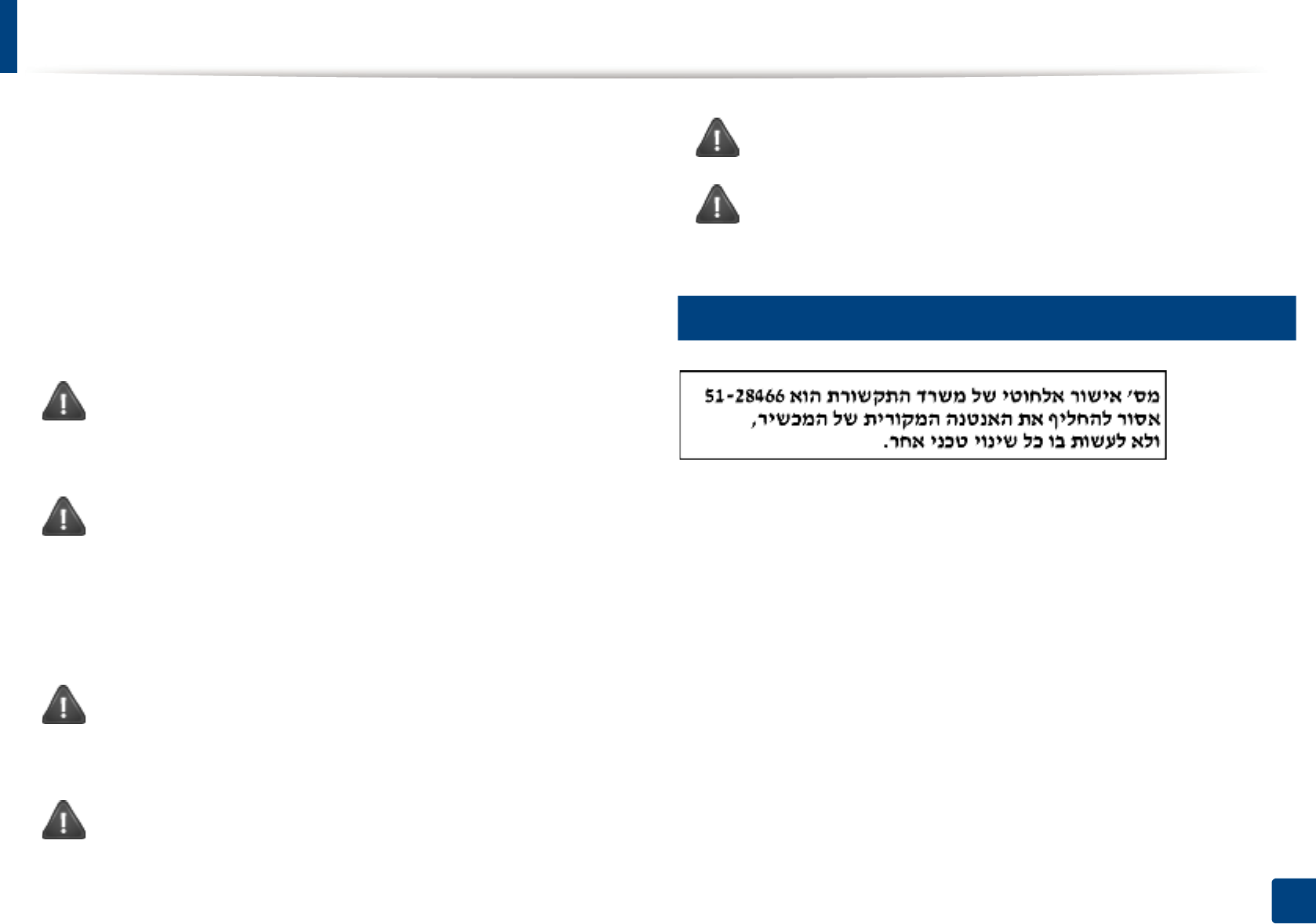
Regulatory information
77
5. Appendix
As a general guideline, a separation of 20 cm (8 inches) between the wireless
device and the body, for use of a wireless device near the body (this does not
include extremities) is typical. This device should be used more than 20 cm (8
inches) from the body when wireless devices are on and transmitting.
This transmitter must not be collocated or operation in conjunction with any
other antenna or transmitter.
Some circumstances require restrictions on wireless devices. Examples of
common restrictions are listed below:
19
Israel only
Radio frequency wireless communication can interfere with equipment
on commercial aircraft. Current aviation regulations require wireless
devices to be turned off while traveling in an airplane. IEEE 802.11 (also
known as wireless Ethernet) and Bluetooth communication devices are
examples of devices that provide wireless communication.
In environments where the risk of interference to other devices or
services is harmful or perceived as harmful, the option to use a wireless
device may be restricted or eliminated. Airports, Hospitals, and Oxygen
or flammable gas laden atmospheres are limited examples where use of
wireless devices may be restricted or eliminated. When in environments
where you are uncertain of the sanction to use wireless devices, ask the
applicable authority for authorization prior to use or turning on the
wireless device.
Every country has different restrictions on the use of wireless devices.
Since your system is equipped with a wireless device, when traveling
between countries with your system, check with the local Radio
Approval authorities prior to any move or trip for any restrictions on the
use of a wireless device in the destination country.
If your system came equipped with an internal embedded wireless
device, do not operate the wireless device unless all covers and shields
are in place and the system is fully assembled.
Wireless devices are not user serviceable. Do not modify them in any
way. Modification to a wireless device will void the authorization to use
it. Contact manufacturer for service.
Only use drivers approved for the country in which the device will be
used. See the manufacturer System Restoration Kit, or contact
manufacturer Technical Support for additional information.
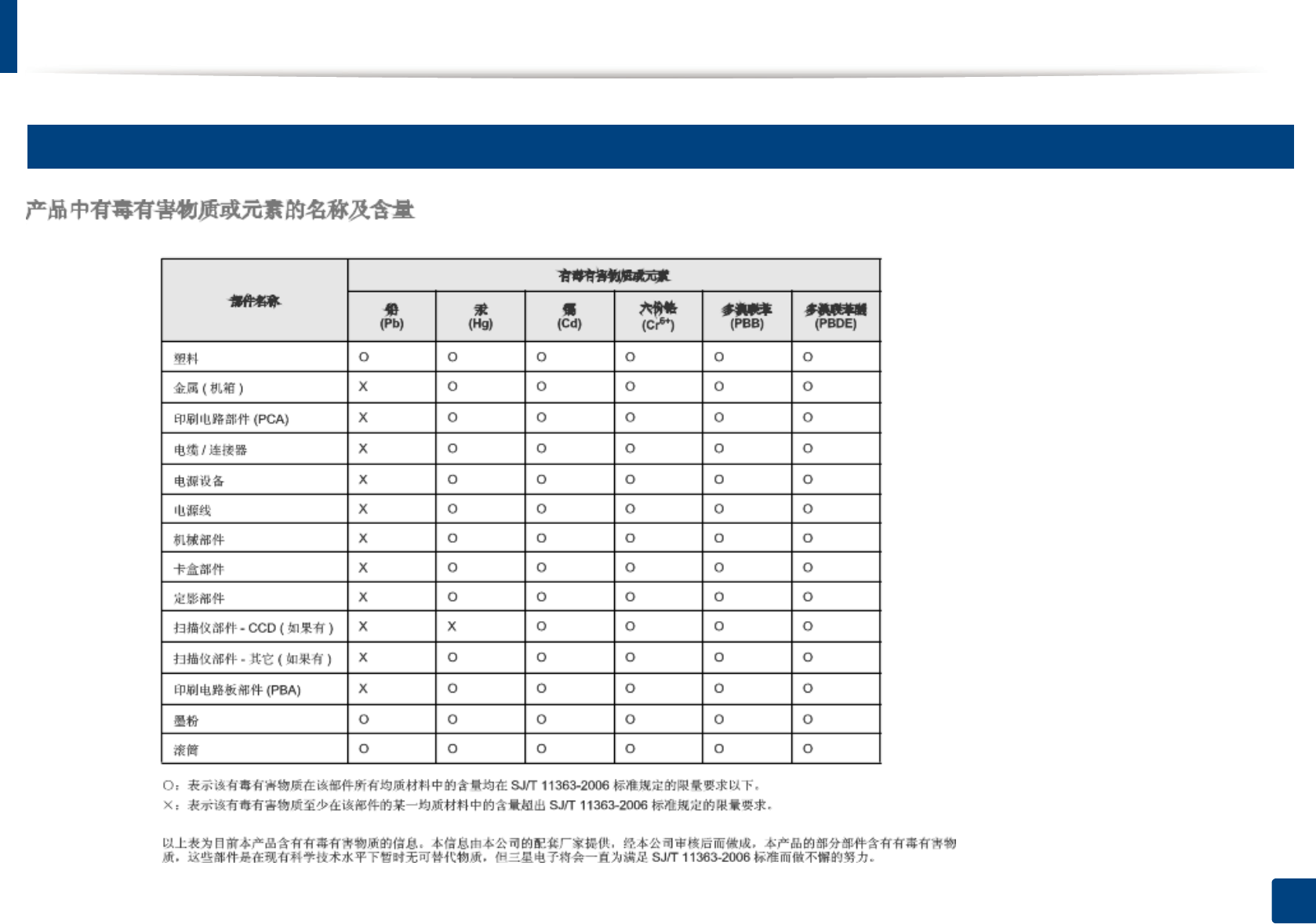
Regulatory information
78
5. Appendix
20
China only
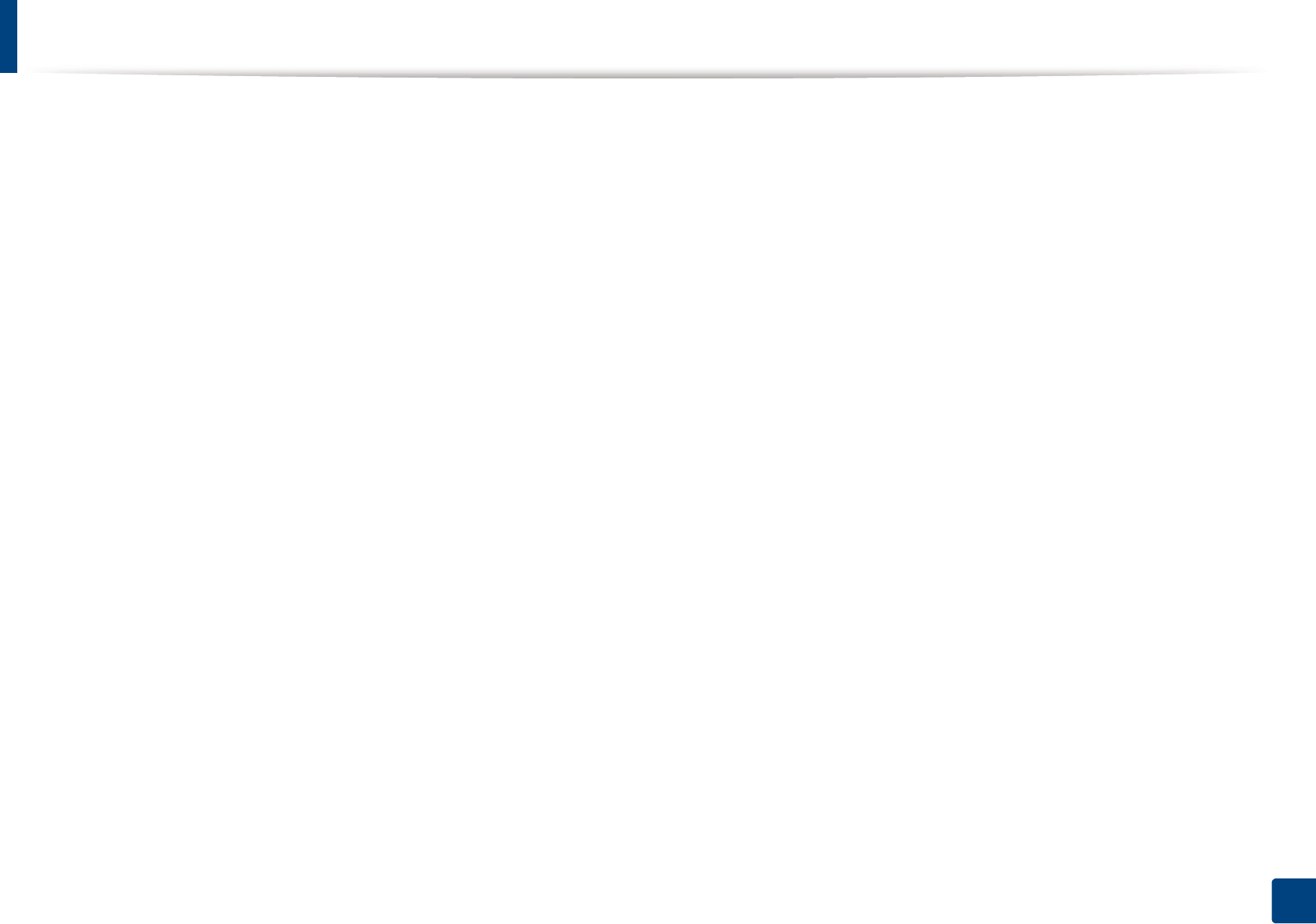
79
5. Appendix
Copyright
© 2011 Samsung Electronics Co., Ltd. All rights reserved.
This user’s guide is provided for information purposes only. All information included herein is subject to change without notice.
Samsung Electronics is not responsible for any direct or indirect damages, arising from or related to use of this user’s guide.
• Samsung and the Samsung logo are trademarks of Samsung Electronics Co., Ltd.
• Microsoft, Windows, Windows Vista, Windows 7, and Windows Server 2008 R2 are either registered trademarks or trademarks of Microsoft Corporation.
• TrueType, LaserWriter, and Macintosh are trademarks of Apple Computer, Inc.
• All other brand or product names are trademarks of their respective companies or organizations.
Refer to the 'LICENSE.txt' file in the provided CD-ROM for the open source license information.
REV. 1.1

ADVANCED
User’s Guide
M-202x Series
M-202xW Series
ADVANCED
User’s Guide
This guide provides information about installation, advanced configuration,
operation and troubleshooting on various OS environments.
Some features may not be available depending on models or countries.
BASIC
This guide provides information concerning installation, basic operation and troubleshooting
on windows.
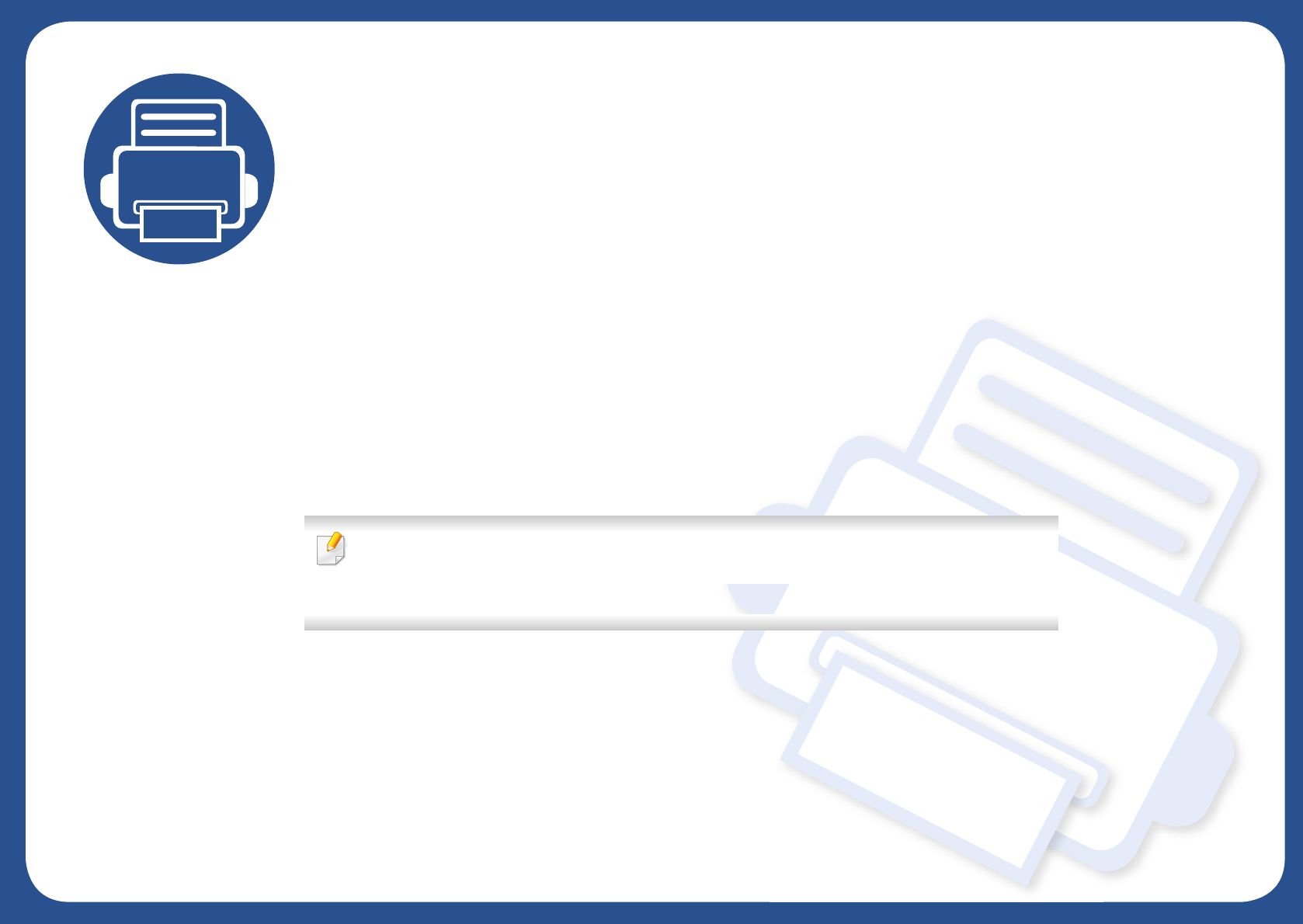
1. Software installation
This chapter provides instructions for installing essential and helpful software for use in an environment where the
machine is connected via a cable. A locally connected machine is a machine directly attached to your computer using
the cable. If your machine is attached to a network, skip the following steps below and go on to installing a network
connected machine’s driver (see Installing driver over the network6).
• Installation for Macintosh 2
• Reinstallation for Macintosh 3
• Installation for Linux 4
• Reinstallation for Linux 6
• If you are a Windows OS user, refer to the "Installing the driver locally" on page 19 for
installing the machine’s driver.
• Only use a USB cable no longer then 3 meter (118 inches).
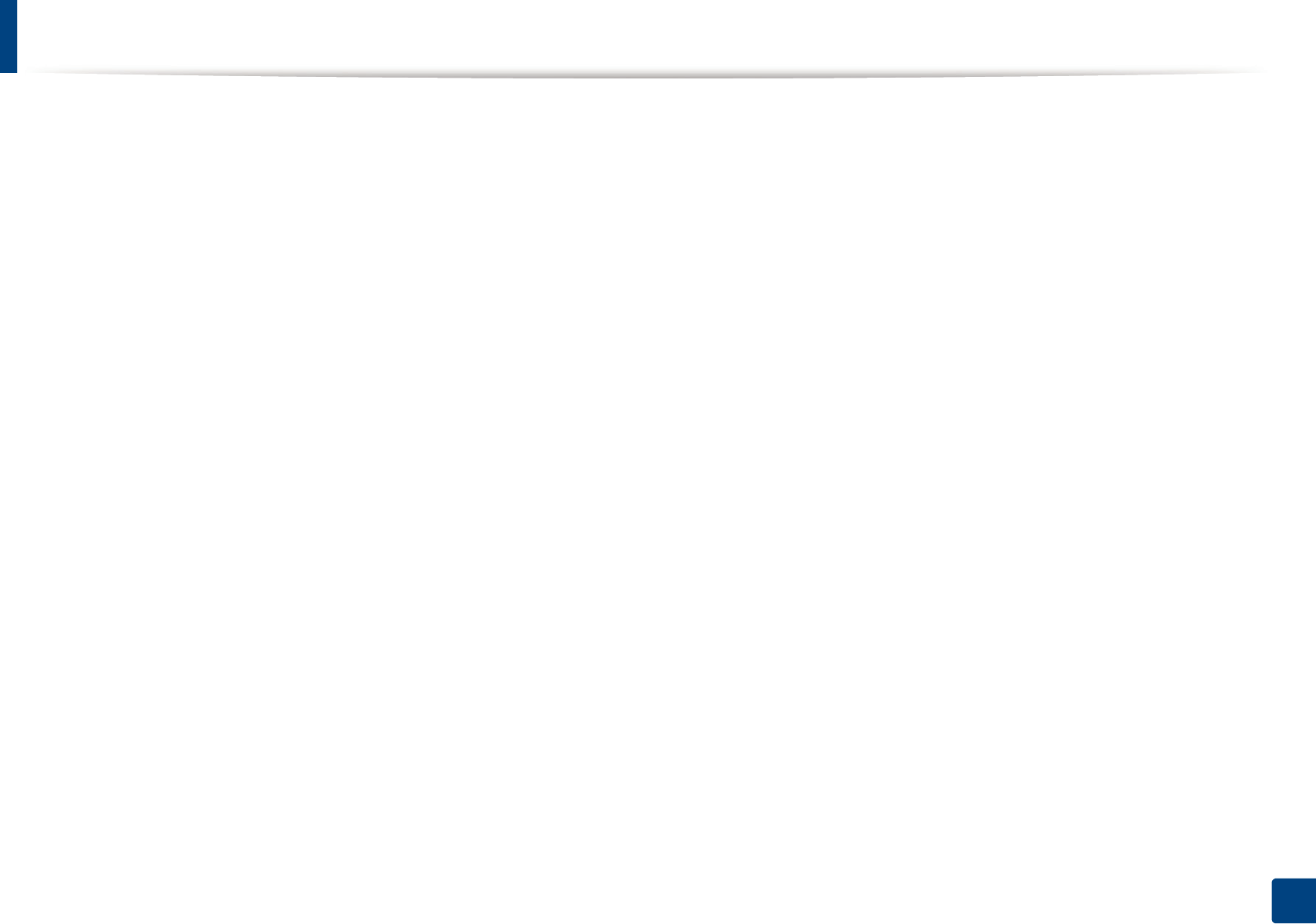
82
1. Software installation
Installation for Macintosh
1Make sure that the machine is connected to your computer and
powered on.
2 Insert the supplied software CD into your CD-ROM drive.
3 Double-click the CD-ROM icon that appears on your Macintosh desktop.
4 Double-click the MAC_Installer folder > Installer OS X icon.
5 Click Continue.
6 Read the license agreement and click Continue.
7 Click Agree to agree to the license agreement.
8 When the message that warns that all applications will close on your
computer appears, click Continue.
9 Click Continue on the User Options Pane.
10 Click Install. All components necessary for machine operations will be
installed.
If you click Customize, you can choose individual components to install.
11 Enter the password and click OK.
12 Installing software requires you to restart your computer. Click Continue
Installation.
13 After the installation is finished, click Close.
14 Open the Applications folder > Utilities > Print Setup Utility.
• For Mac OS X 10.5 -10.7, open the Applications folder > System
Preferences and click Print & Fax.
15 Click Add on the Printer List.
• For Mac OS X 10.5 -10.7, click the “+” folder icon; a display window
will pop up.
16 Click Default Browser and find the USB connection.
• For Mac OS X 10.5-10.7, click Default and find the USB connection.
17 For Mac OS X 10.4, if Auto Select does not work properly, select Samsung
in Print Using and your machine name in Model.
• For Mac OS X 10.5-10.7, if Auto Select does not work properly, select
Select a driver to use... and your machine name in Print Using.
Your machine appears on the Printer List, and is set as the default
machine.
18 Click Add.
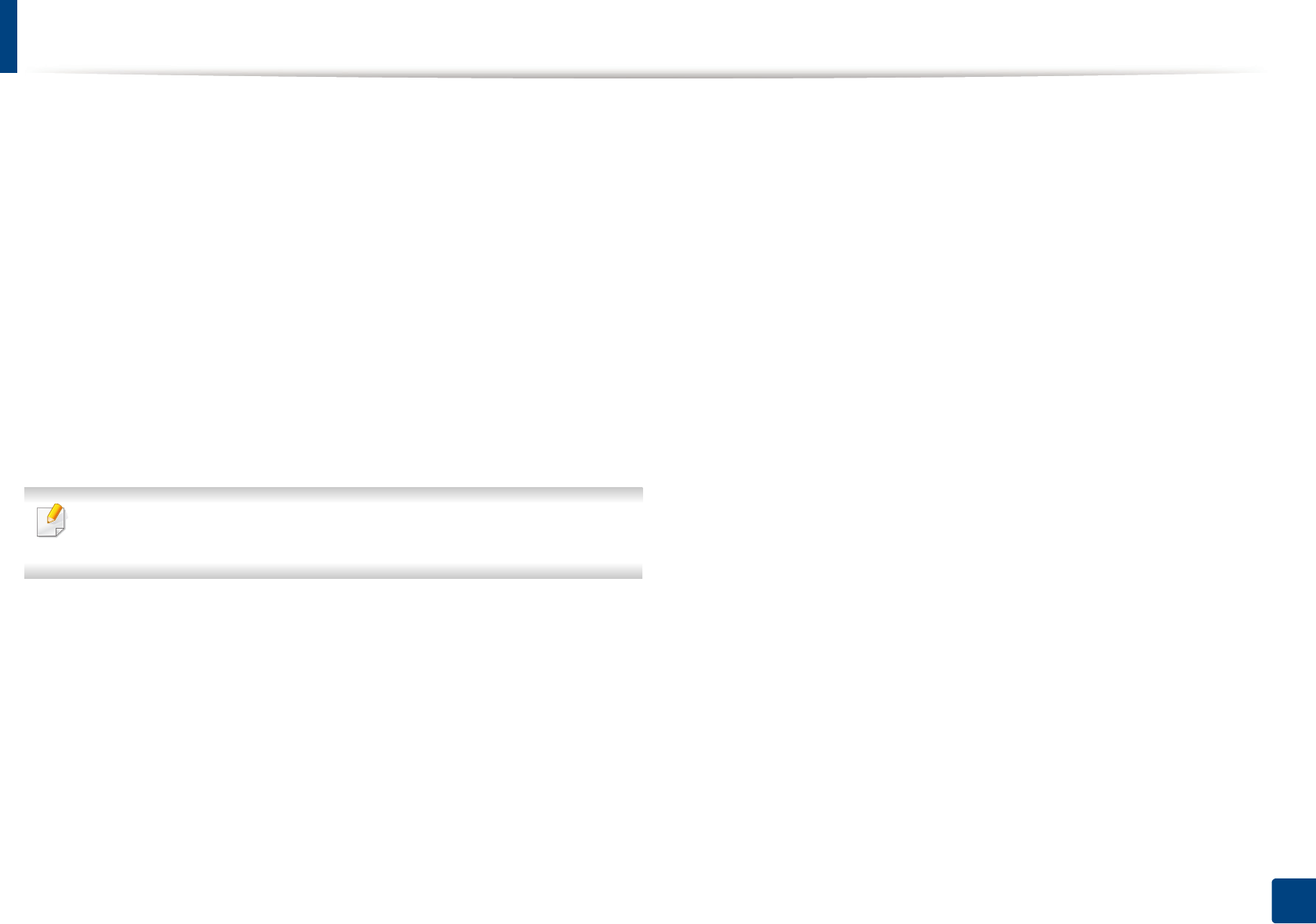
83
1. Software installation
Reinstallation for Macintosh
If the printer driver does not work properly, uninstall the driver and reinstall it.
1Make sure that the machine is connected to your computer and
powered on.
2 Insert the supplied software CD into your CD-ROM drive.
3 Double-click the CD-ROM icon that appears on your Macintosh desktop.
4 Double-click the MAC_Installer folder > Uninstaller OS X icon.
5 Enter the password and click OK.
6 When the uninstall is done, click OK.
If a machine has already been added, delete it from the Print Setup Utility
or Print & Fax.
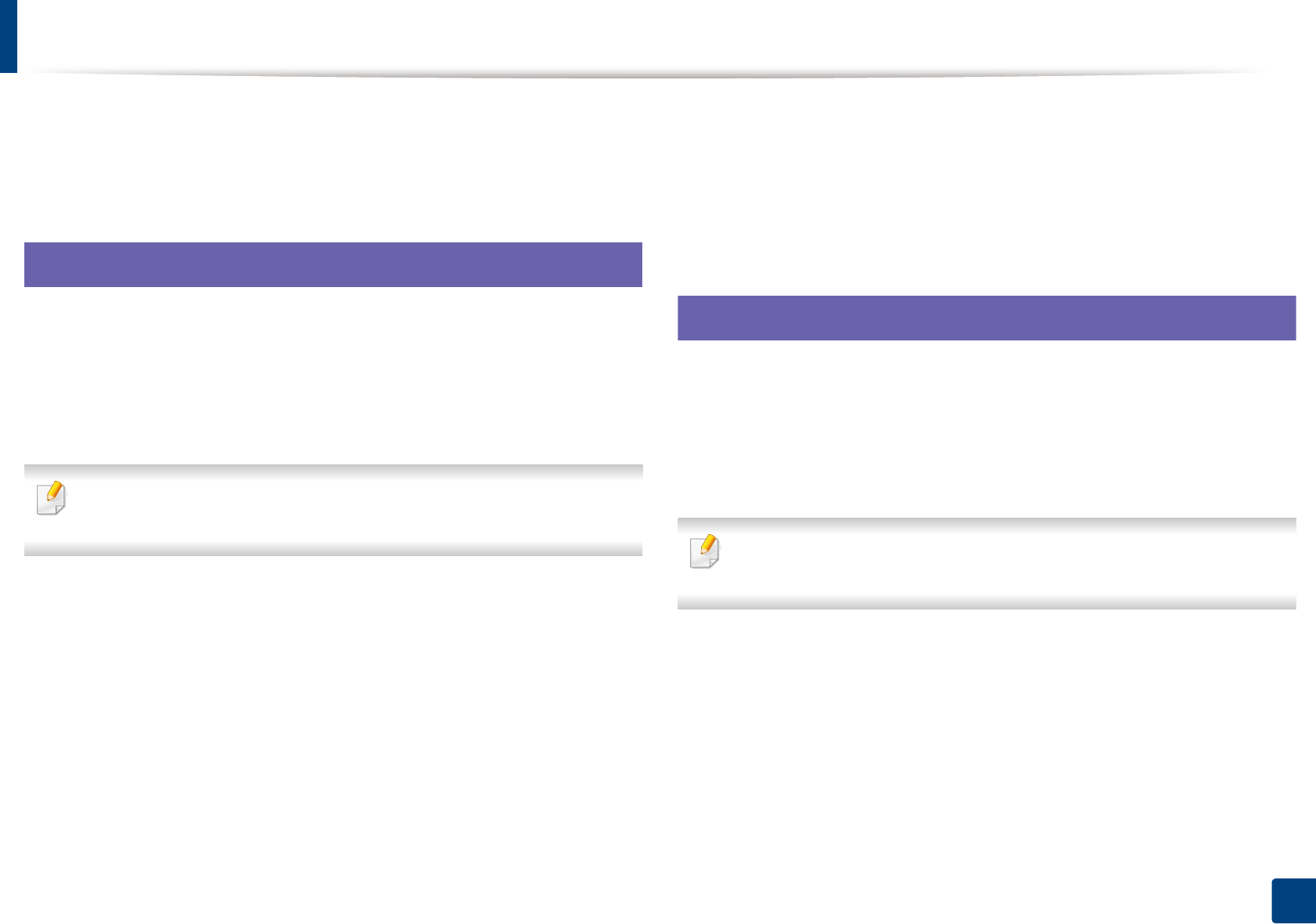
84
1. Software installation
Installation for Linux
You need to download Linux software packages from the Samsung website to
install the printer software (http://www.samsung.com > find your product >
Support or Downloads).
1
Installing the Unified Linux Driver
1Make sure that the machine is connected to your computer and
powered on.
2 When the Administrator Login window appears, type “root” in the
Login field and enter the system password.
You must log in as a super user (root) to install the machine software. If you
are not a super user, ask your system administrator.
3 From the Samsung website, download the Unified Linux Driver package
to your computer.
4 Right-click the Unified Linux Driver package and extract the package.
5 Double click cdroot > autorun.
6 When the welcome screen appears, click Next.
7 When the installation is complete, click Finish.
The installation program added the Unified Driver Configurator desktop icon
and the Unified Driver group to the system menu for your convenience. If you
have any difficulties, consult the on-screen help that is available through your
system menu or from the driver package Windows applications, such as Unified
Driver Configurator or Image Manager.
2
Installing the Smart Panel
1Make sure that the machine is connected to your computer and
powered on.
2 When the Administrator Login window appears, type in root in the
Login field and enter the system password.
You must log in as a super user (root) to install the machine software. If you
are not a super user, ask your system administrator.
3 From the Samsung website, download the Smart Panel package to your
computer.
4 Right-click the Smart Panel package and extract the package.
5 Double click cdroot > Linux > smartpanel > install.sh.
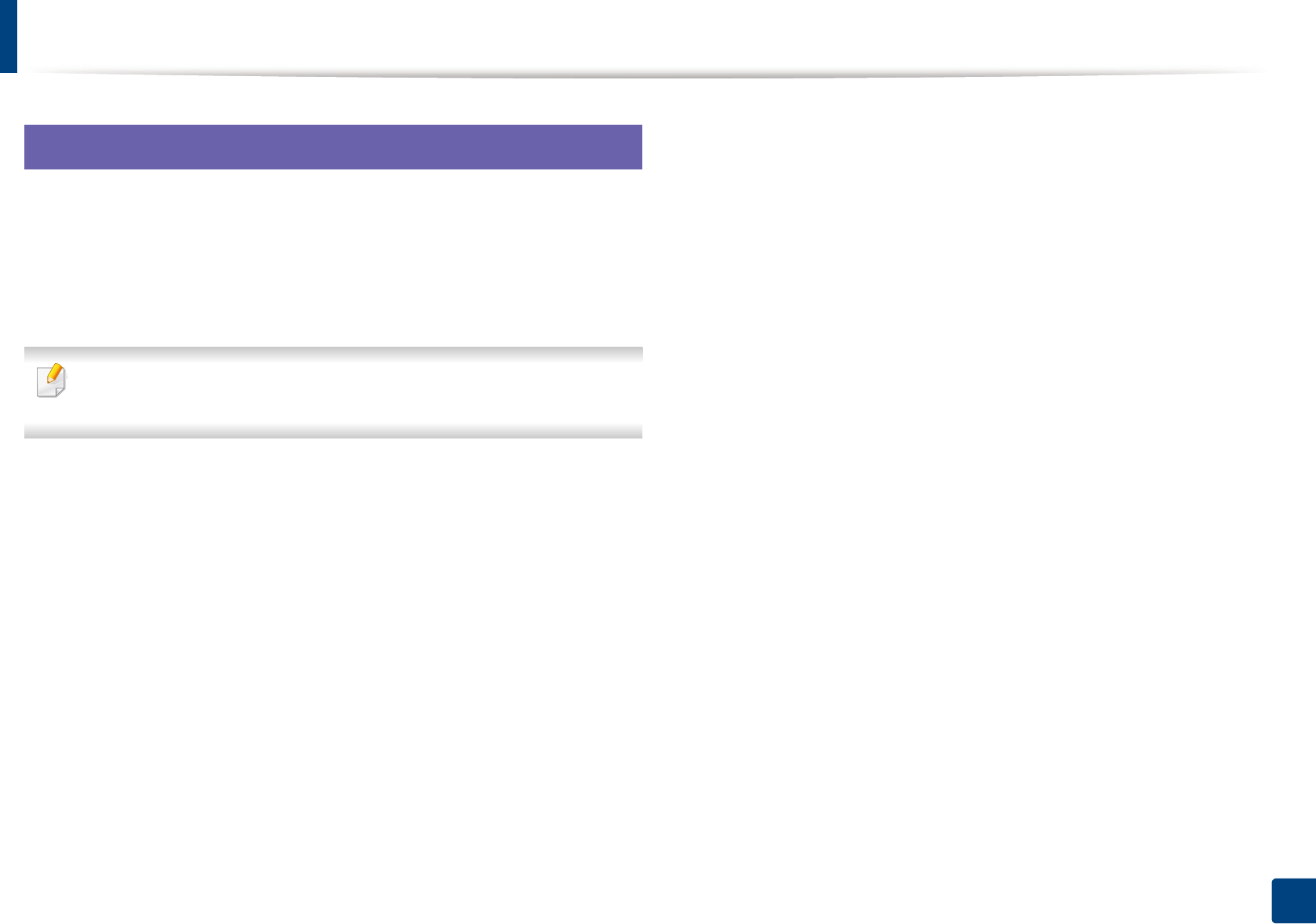
Installation for Linux
85
1. Software installation
3
Installing the Printer Settings Utility
1Make sure that the machine is connected to your computer and
powered on.
2 When the Administrator Login window appears, type “root” in the
Login field and enter the system password.
You must log in as a super user (root) to install the machine software. If you
are not a super user, ask your system administrator.
3 From the Samsung website, download the Printer Settings Utility
package to your computer.
4 Right-click the Printer Settings Utility package and extract the
package.
5 Double click cdroot > Linux > psu > install.sh.
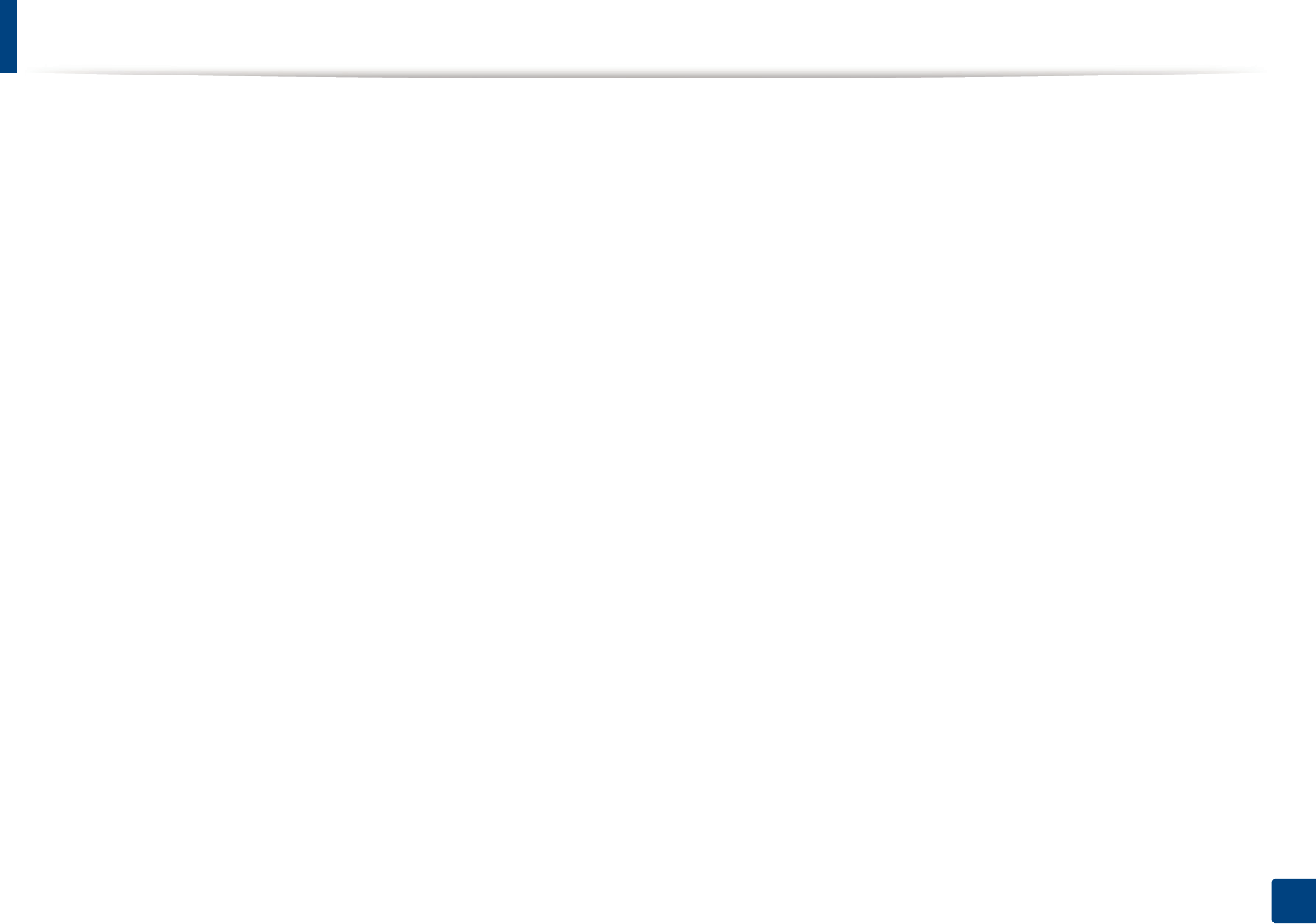
86
1. Software installation
Reinstallation for Linux
If the printer driver does not work properly, uninstall the driver and reinstall it.
1Make sure that the machine is connected to your computer and
powered on.
2 When the Administrator Login window appears, type “root” in the
Login field and enter the system password.
You must log in as a super user (root) to uninstall the printer driver. If you
are not a super user, ask your system administrator.
3 Click the icon at the bottom of the desktop. When the Terminal screen
appears, type in the following.
[root@localhost root]#cd /opt/Samsung/mfp/uninstall/[root@localhost
uninstall]#./uninstall.sh
4 Click Uninstall.
5 Click Next.
6 Click Finish.
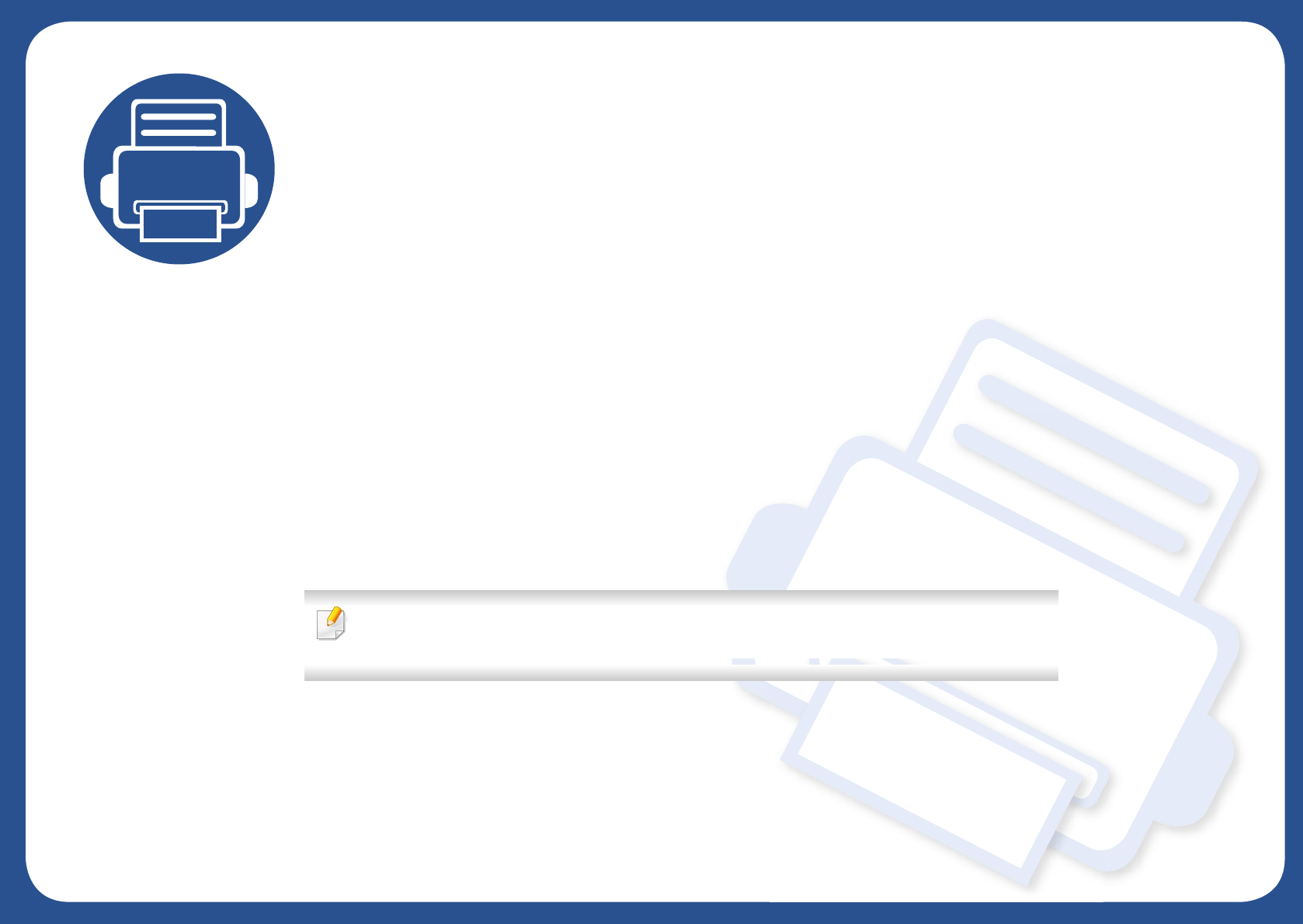
2. Using a network-
connected machine
This chapter gives you step-by-step instructions for setting up a network connected machine and software.
• Useful network programs 2
• Wired network setup 3
• Installing driver over the network 6
• IPv6 configuration 14
• Wireless network setup 17
• Samsung MobilePrint 49
Supported optional devices and features may differ according to your model (see "Features by
models" on page 4).
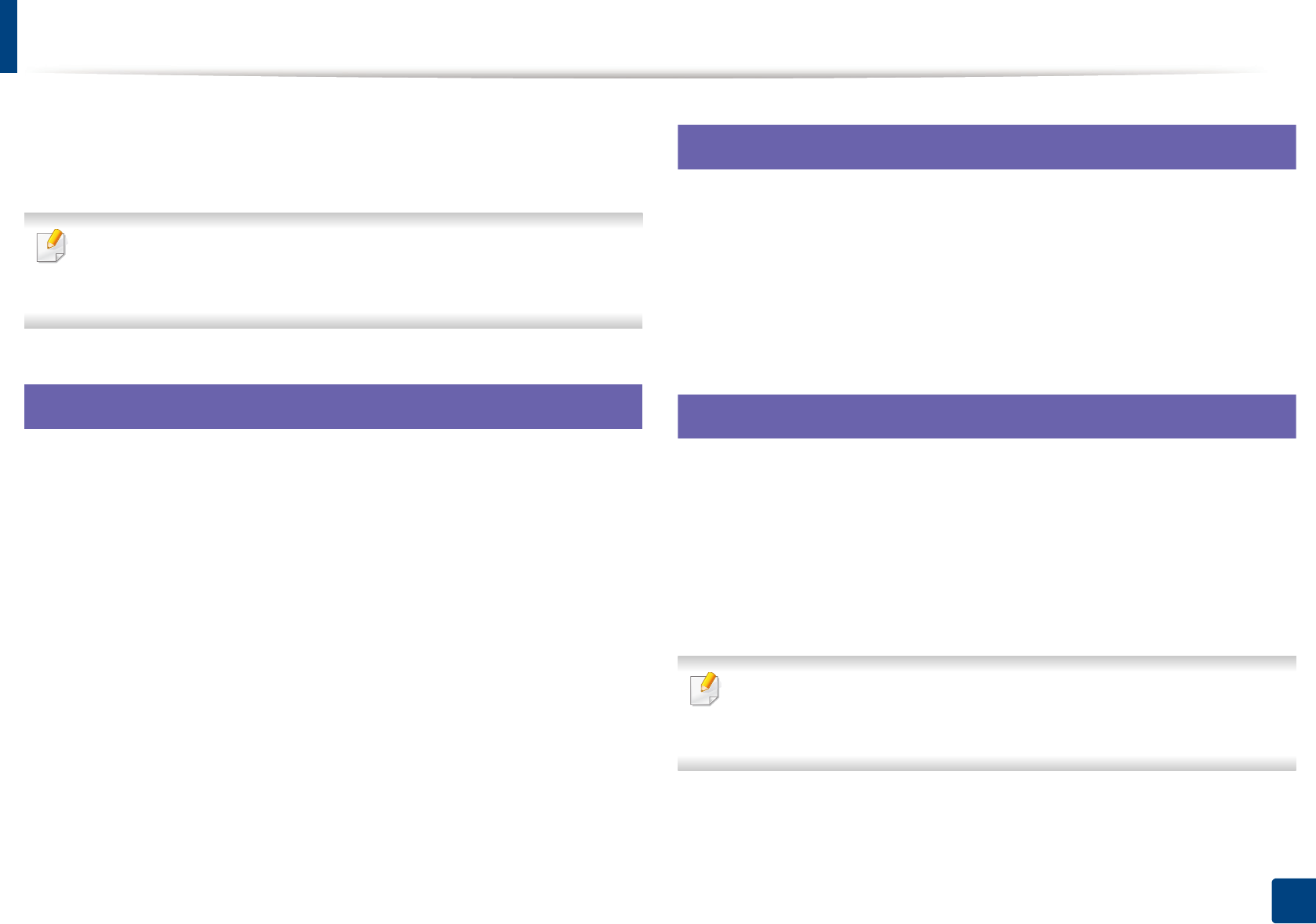
88
2. Using a network-connected machine
Useful network programs
There are several programs available to setup the network settings easily in a
network environment. For the network administrator especially, managing
several machines on the network is possible.
• Before using the programs below, set the IP address first.
• Some features and optional goods may not be available depending on
model or country (see "Features by models" on page 4).
1
SyncThru™ Web Service
The web server embedded on your network machine allows you to do the
following tasks (see "Using SyncThru™ Web Service" on page 16):
• Check the supplies information and status.
• Customize machine settings.
• Set the email notification option. When you set this option, the machine
status (toner cartridge shortage or machine error) will be sent to a certain
person's email automatically.
• Configure the network parameters necessary for the machine to connect to
various network environments.
2
SyncThru™ Web Admin Service
Web-based machine management solution for network administrators.
SyncThru™ Web Admin Service provides you with an efficient way of managing
network devices and lets you remotely monitor and troubleshoot network
machines from any site with corporate internet access.
• Download this program from http://solution.samsungprinter.com.
3
SetIP
This utility program allows you to select a network interface and manually
configure the IP addresses for use with the TCP/IP protocol.
• See "IPv4 configuration using SetIP (Windows)" on page 3.
• See "IPv4 configuration using SetIP (Macintosh)" on page 4.
• See "IPv4 configuation using SetIP (Linux)" on page 5.
• The machine that does not support the network interface, it will notbe
able to use this feature (see "Rear view" on page 15).
• TCP/IPv6 is not supported by this program.
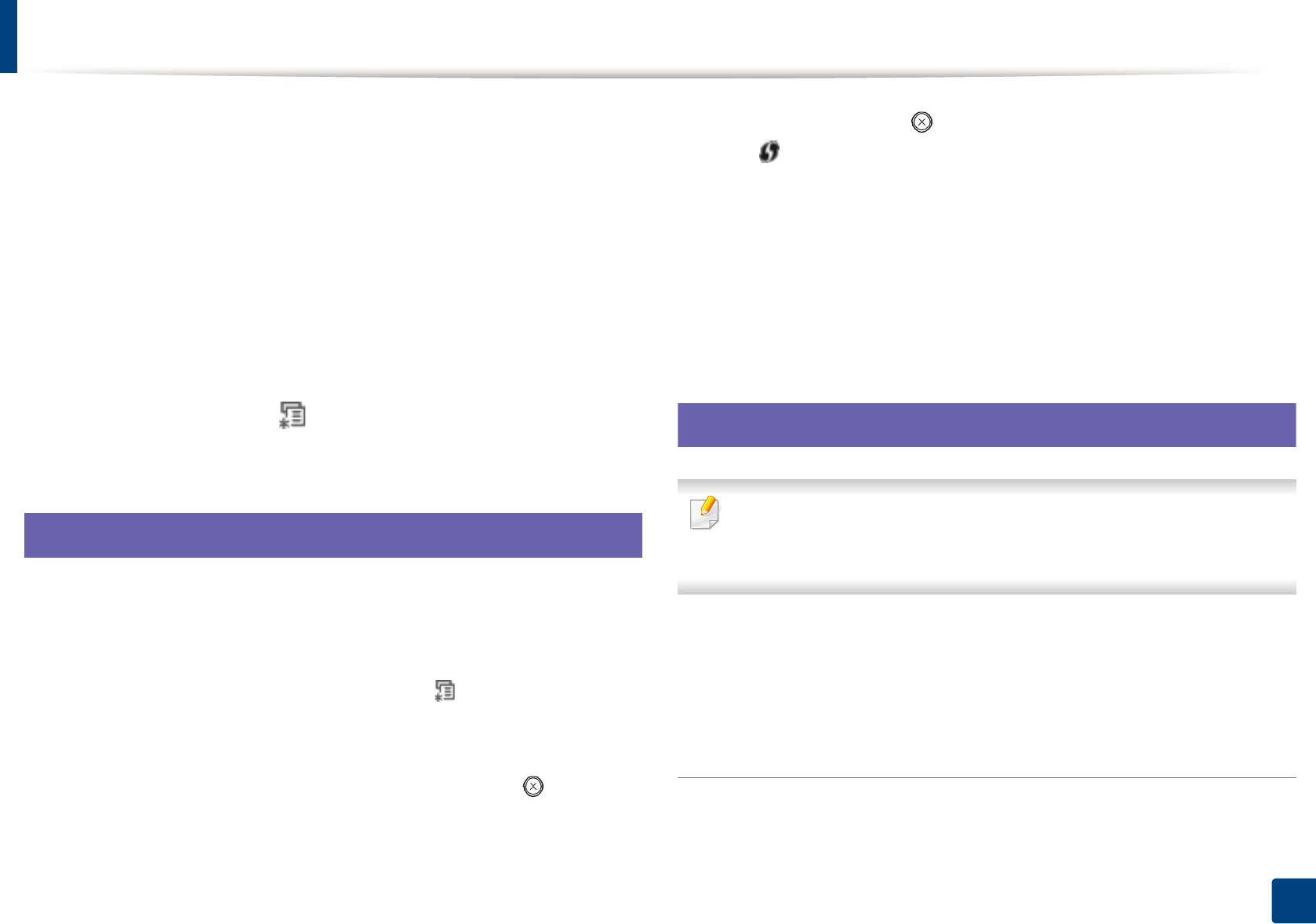
89
2. Using a network-connected machine
Wired network setup
You must set up the network protocols on your machine to use it on your
network.
You can use network after connecting network cable to a corresponding port on
your machine.
• For models that do not have the display screen on the control panel, use the
SyncThru™ Web Service or SetIP program.
- See "Using SyncThru™ Web Service" on page 5.
- See "Setting IP address" on page 3.
• For models that have the display screen on the control panel, configure the
network setting by pressing (Menu) button > Network on the control
panel.
4
Printing a network configuration report
You can print Network Configuration Report from the machine’s control panel
that will show the current machine’s network settings. This will help you to set
up a network.
•The machine has the display screen: Press the (Menu) button on the
control panel and select Network > Network Config. (Network
Configuration)> Yes.
•The machine does not have the display screen: Press the (Cancel or
Stop/Clear) button for more than five seconds on the control panel.
• The machine without the (Cancel or Stop/Clear) button: Press the
(WPS) button formore than ten seconds on the control panel.
Using this Network Configuration Report, you can find your machine’s MAC
address and IP address.
For example:
• MAC Address: 00:15:99:41:A2:78
• IP Address: 165.254.192.192
5
Setting IP address
• The machine that does not support the network interface, it will notbe
able to use this feature (see "Rear view" on page 15)
• TCP/IPv6 is not supported by this program.
First, you have to set up an IP address for network printing and managements.
In most cases a new IP address will be automatically assigned by a DHCP
(Dynamic Host Configuration Protocol) server located on the network.
IPv4 configuration using SetIP (Windows)
Before using the SetIP program, disable the computer firewall from Control
Panel > Security Center > Windows Firewall.
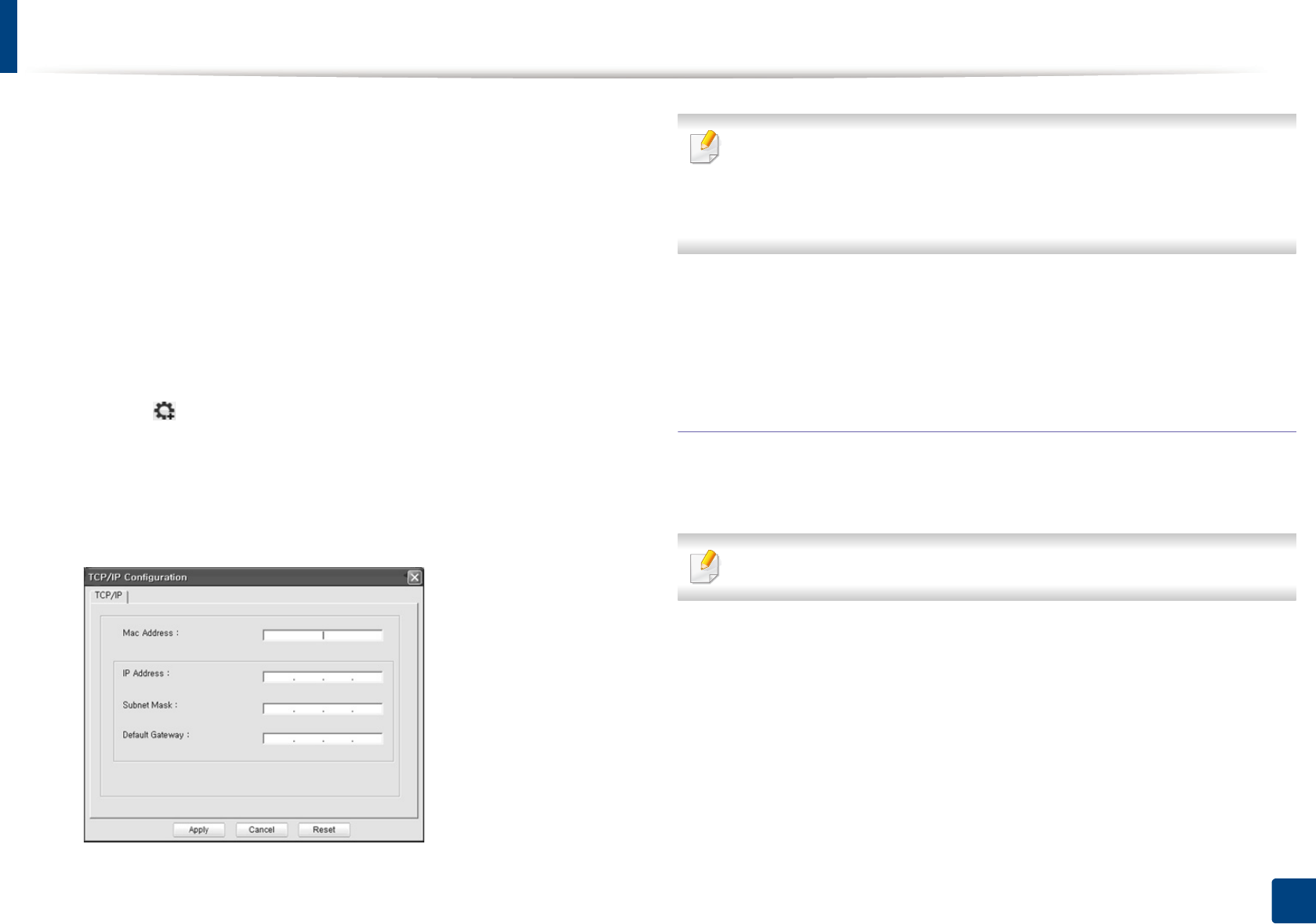
Wired network setup
90
2. Using a network-connected machine
1Install this program from the supplied CD-ROM by double-click
Application > SetIP > Setup.exe.
2 Follow the instructions in the installation window.
3 Connect your machine to the network with a network cable.
4 Turn on the machine.
5 From the Windows Start menu, select All Programs > Samsung
Printers > SetIP > SetIP.
6 Click the icon (third from left) in the SetIP window to open the TCP/IP
configuration window.
7 Enter the machine’s new information into the configuration window as
follows. In a corporate intranet, you may need to have this information
assigned by a network manager before proceeding.
Find the machine’s MAC address from the Network Configuration Report
(see "Printing a network configuration report" on page 3) and enter it
without the colons. For example, 00:15:99:29:51:A8 becomes
0015992951A8.
8 Click Apply, and then click OK. The machine will automatically print the
Network Configuration Report. Confirm that all the settings are
correct.
IPv4 configuration using SetIP (Macintosh)
Before using the SetIP program, disable the computer firewall from System
Preferences > Security > Firewall.
The following instructions may differ for your model.
1Connect your machine to the network with a network cable.
2 Insert the Installation CD-ROM, and open the disk window, select
MAC_Installer > MAC_Printer > SetIP > SetIPapplet.html.
3 Double-click the file and Safari will automatically open, then select
Trust. The browser will open the SetIPapplet.html page that shows the
printer’s name and IP address information.
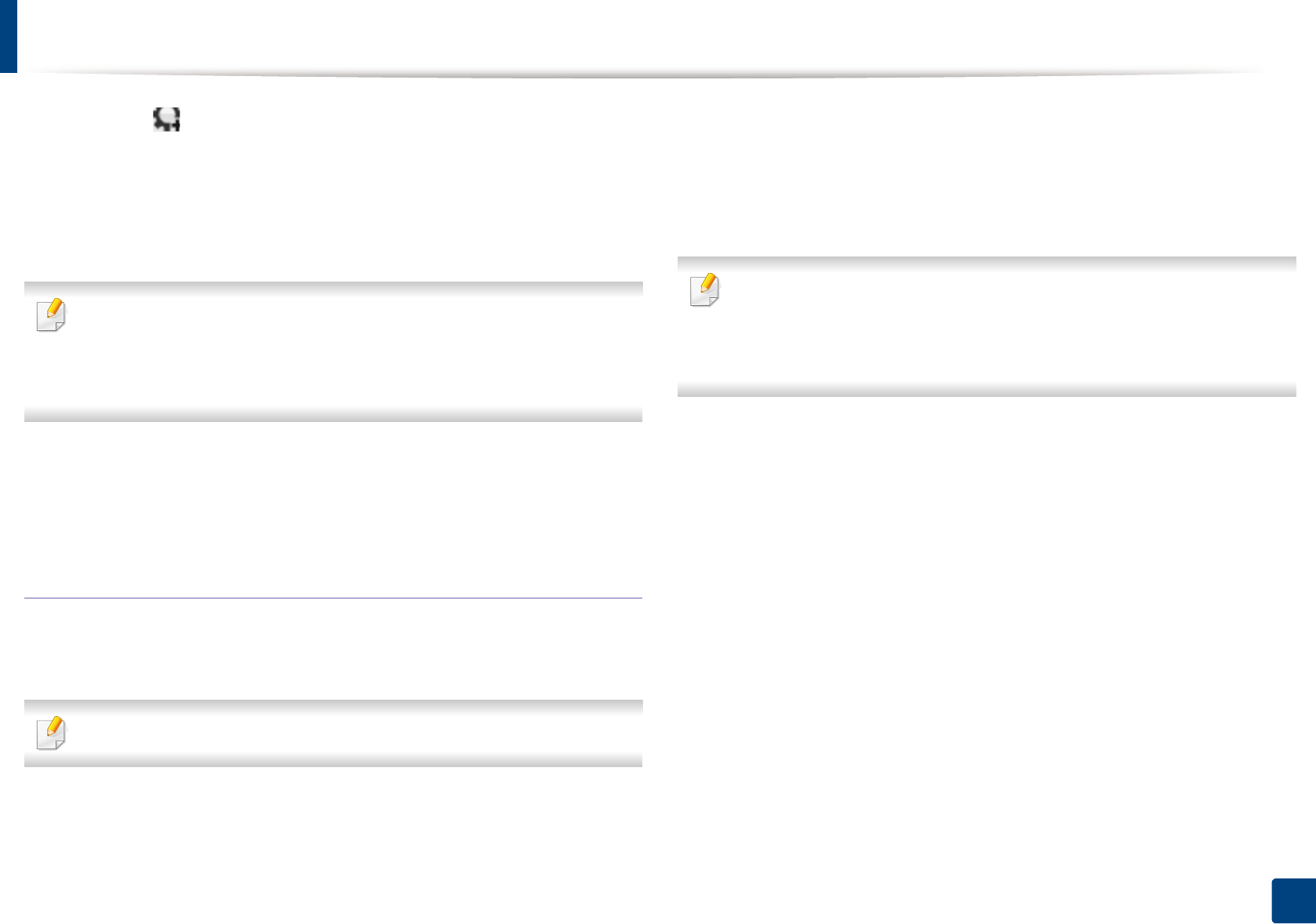
Wired network setup
91
2. Using a network-connected machine
4 Click the icon (third from left) in the SetIP window to open the TCP/
IP configuration window.
5 Enter the machine’s new information into the configuration window. In
a corporate intranet, you may need to have this information assigned by
a network manager before proceeding.
Find the machine’s MAC address from the Network Configuration Report
(see "Printing a network configuration report" on page 3) and enter it
without the colons. For example, 00:15:99:29:51:A8 becomes
0015992951A8.
6 Select Apply, then OK, and OK again.
7 Quit Safari.
IPv4 configuation using SetIP (Linux)
Before using the SetIP program, disable the computer firewall from System
Preferences or Administrator.
The following instructions may vary from your model or operating systems.
1Open /opt/Samsung/mfp/share/utils/.
2 Double-click the SetIPApplet.html file.
3 Click to open the TCP/IP configuration window.
4 Enter the machine’s new information into the configuration window. In
a corporate intranet, you may need to have this information assigned by
a network manager before proceeding.
Find the machine’s MAC address from the Network Configuration Report
(see "Printing a network configuration report" on page 3) and enter it
without the colons. For example, 00:15:99:29:51:A8 becomes
0015992951A8.
5 The machine will automatically print the Network Configuration
Report.
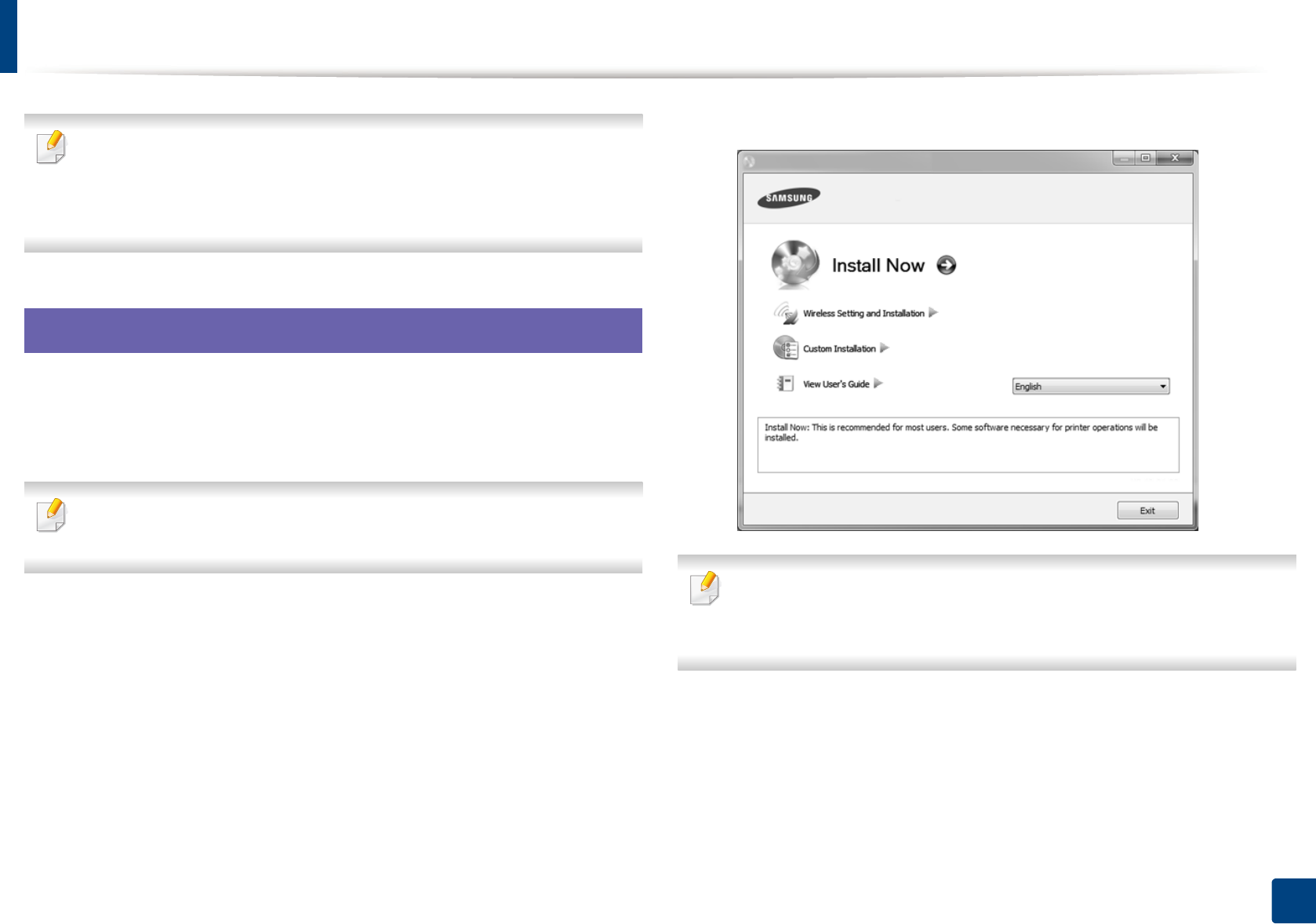
92
2. Using a network-connected machine
Installing driver over the network
• The machine that does not support the network interface, it will notbe
able to use this feature (see "Rear view" on page 15).
• Some features and optional goods may not be available dependingon
model or country (see "Features by models" on page 4).
6
Windows
1Make sure that the machine is connected to the network and powered
on. Also, your machine’s IP address should have been set (see "Setting IP
address" on page 3).
If the “Found New Hardware Wizard” appears during the installation
procedure, click Cancel to close the window.
2 Insert the supplied software CD into your CD-ROM drive.
The software CD should automatically run and an installation window
will appear.
3 Select Install Now.
The Custom Installation allows you to select the machine’s connection and
choose individual components to install. Follow the instructions on the
window.
4 Read License Agreement, and select I accept the terms of the License
Agreement. Then, click Next.
The program searches for the machine.
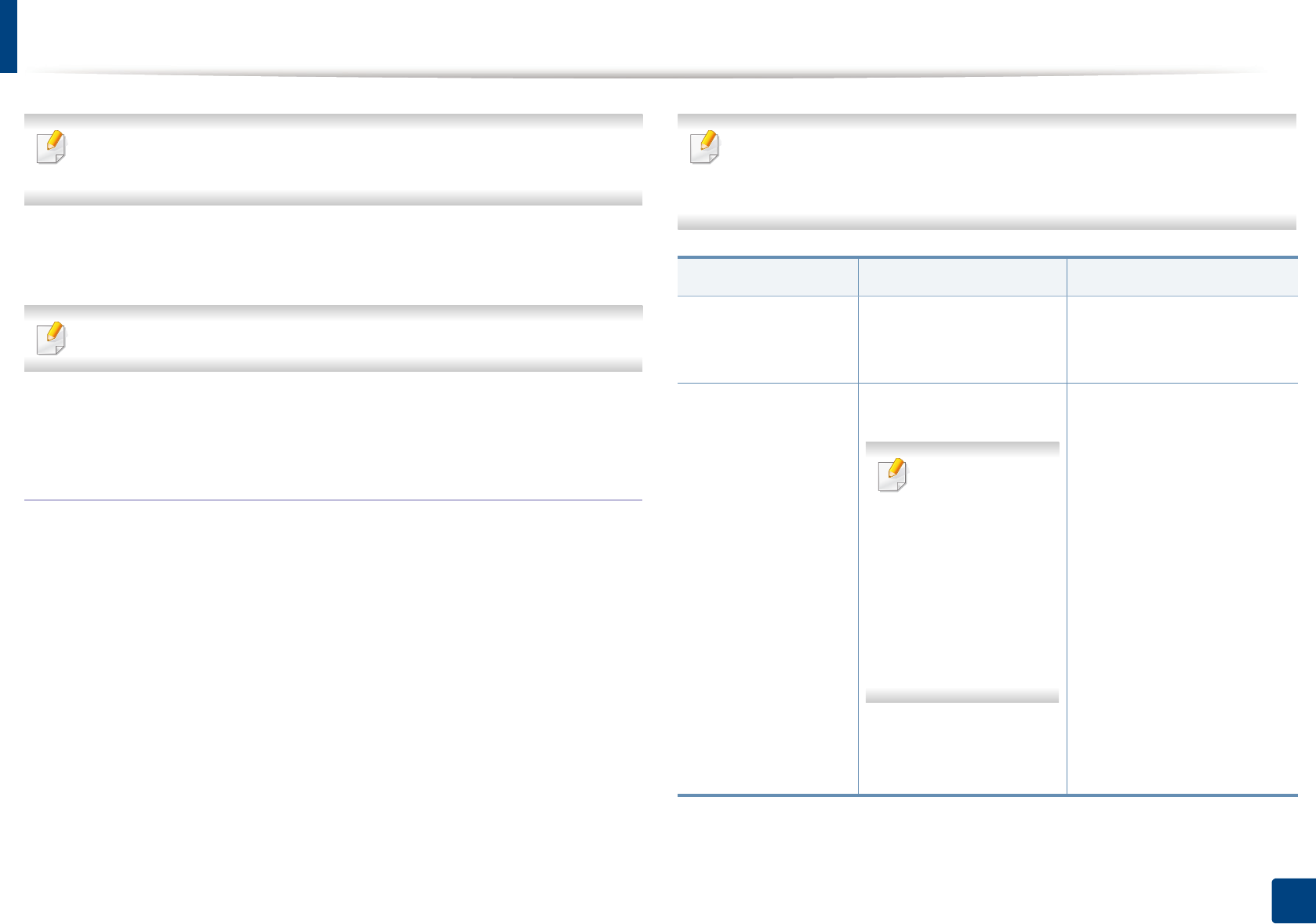
Installing driver over the network
93
2. Using a network-connected machine
If your machine is not found on the network or locally, an error message
appears. Select the option you want and click Next.
5 The searched machines will be shown on the screen. Select the one you
wish to use and click OK.
If the driver searched only one machine, the confirmation window appears.
6 Follow the instructions in the installation window.
Silent installation Mode
Silent installation mode is an installation method that does not require any user
intervention. Once you start the installation, the machine driver and software
are automatically installed on you computer. You can start the silent installation
by typing /s or /S in the command window.
Command-line Parameters
Following table shows commands that can be used in the command window.
Following command-line are effective and operated when command is
used with /s or /S. But /h, /H or /? are exceptional commands that can be
operated solely.
Command- line Definition Description
/s or/S Starts silent installation. Installs machine drivers
without prompting any UIs
or user intervention.
/p”<port name>” or/
P”<port name>”
Specifies printer port.
Network Port will
be created by use
of Standard TCP/
IP Port monitor.
For local port, this
port must exist on
system before
being specified
by command.
Printer port name can be
specified as IP address,
hostname, USB local port
name or IEEE1284 port
name.
For example
• /p”xxx.xxx.xxx.xxx” in
where, “xxx.xxx.xxx.xxx”
means IP address for
network printer. /
p”USB001”, /P”LPT1:”, /
p”hostname”
• When installing the driver
silently in Korean, type in-
Setup.exe /s /
L"0x0012”.
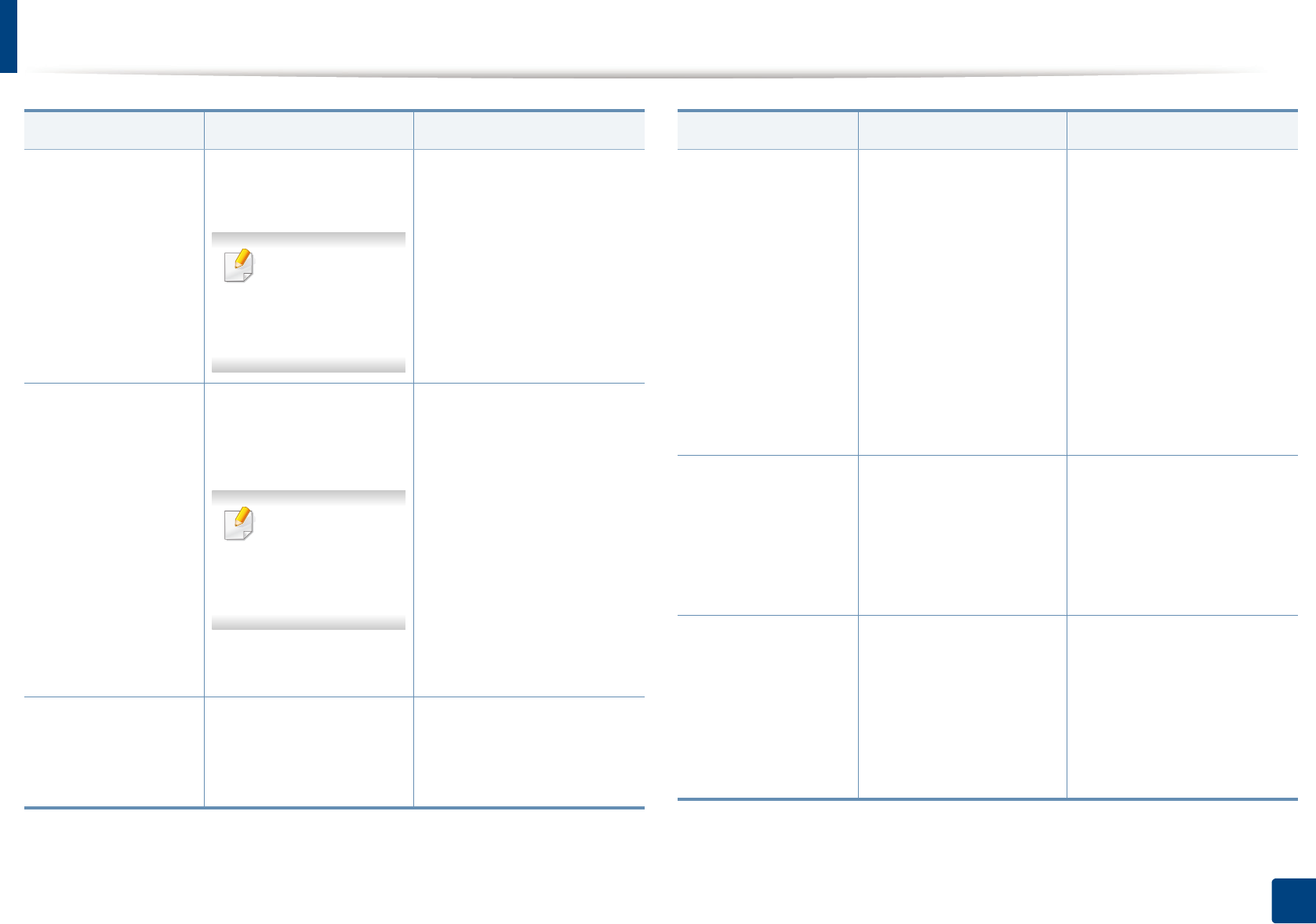
Installing driver over the network
94
2. Using a network-connected machine
/a”<dest_path>” or/
A”<dest_path>”
Specifies destination path
for installation.
The destination
path should be a
fully qualified
path.
Since machine drivers
should be installed on the OS
specific location, this
command applies to only
application software.
/i”<script filename>”
or/I”<script
filename>”
Specifies customized
install script file for
custom operation.
The script
filename should
be a fully qualified
filename.
Customized script file can be
assigned for customized
silent installation. This script
file can be created or
modified through provided
installer customizing utility
or by text editor.
Note: This customized script
file is prior than default
installer setting in setup
package but not prior than
command-line parameters.
/n”<Printer name>”
or/N”<Printer
name>”
Specifies printer name.
Printer instance shall be
created as specified
printer name.
With this parameter, you can
add printer instances as your
wishes.
Command- line Definition Description
/nd or/ND Commands not to set the
installed driver as a
default machine driver.
It indicates installed machine
driver will not be the default
machine driver on your
system if there are one or
more printer drivers
installed. If there is no
installed machine driver on
your system, then this option
won’t be applied because
Windows OS will set installed
printer driver as a default
machine driver.
/x or/X Uses existing machine
driver files to create
printer instance if it is
already installed.
This command provides a
way to install a printer
instance that uses installed
printer driver files without
installing an additional
driver.
/up”<printer name>”
or/UP”<printer
name>”
Removes only specified
printer instance and not
the driver files.
This command provides a
way to remove only specified
printer instance from your
system without effecting
other printer drivers. It will
not remove printer driver
files from your system.
Command- line Definition Description
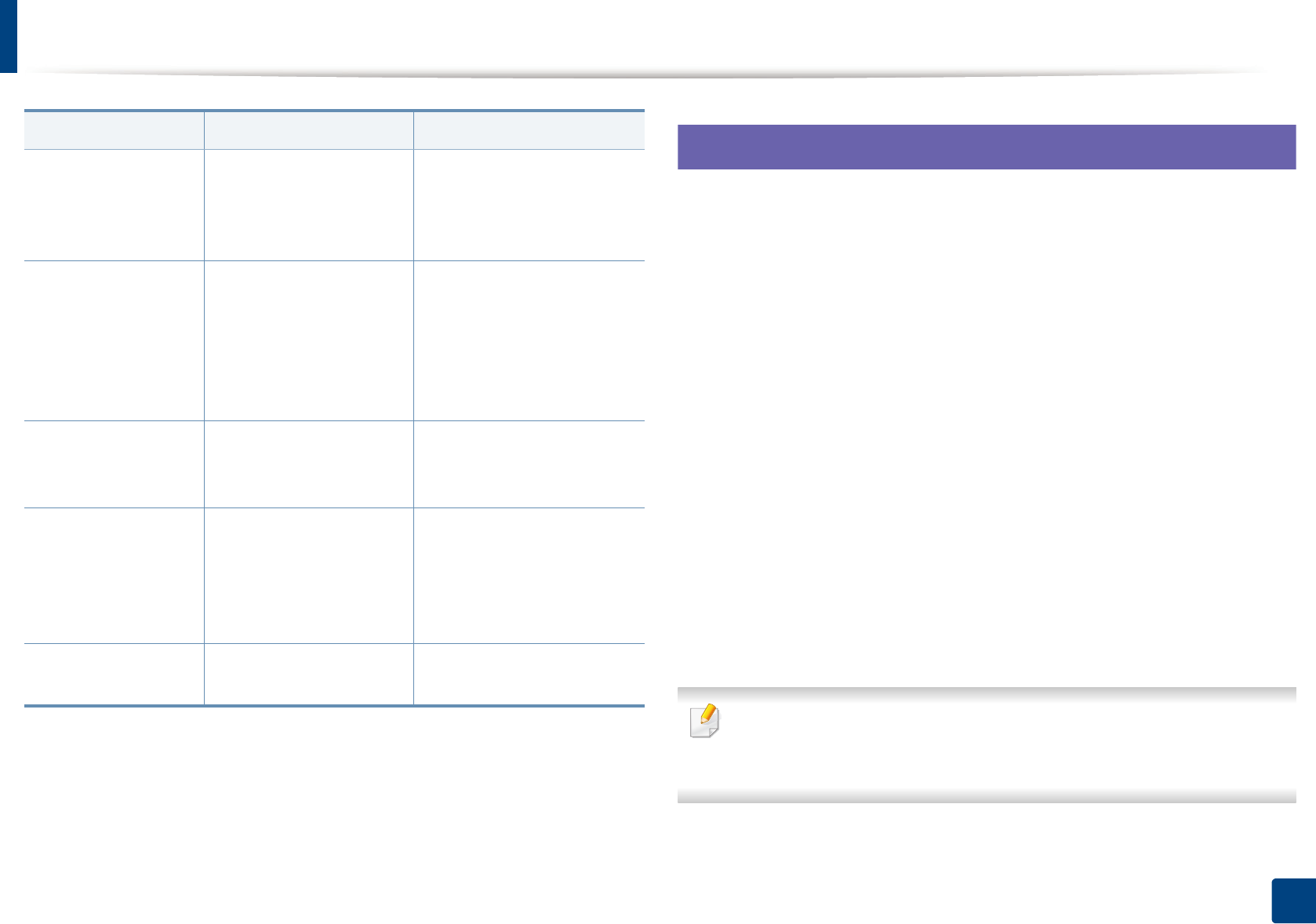
Installing driver over the network
95
2. Using a network-connected machine
7
Macintosh
1Make sure that the machine is connected to your network and powered
on.
2 Insert the supplied software CD into your CD-ROM drive.
3 Double-click the CD-ROM icon that appears on your Macintosh desktop.
4 Double-click the MAC_Installer folder > Installer OS X icon.
5 Click Continue.
6 Read the license agreement and click Continue.
7 Click Agree to agree to the license agreement.
8 When the message which warns that all applications will close on your
computer appears, click Continue.
9 Click Continue on the User Options Pane.
If you have not set the IP address yet, click Set IP address and refer to "IPv4
configuration using SetIP (Macintosh)" on page 4. If you want to set the
wireless setting, refer to "Setup using Macintosh" on page 33.
/d or/D Uninstalls all device
drivers and applications
from your system.
This command will remove
all installed device drivers
and application software
from your system.
/v”<share name>” or/
V”<share name>”
Shares installed machine
and add other available
platform drivers for Point
& Print.
It will install all supported
Windows OS platform’s
machine drivers to system
and share it with specified
<share name> for point and
print.
/o or /O Opens Printers and
Faxes folder after
installation.
This command will open
Printers and Faxes folder
after the silent installation.
/f”<log filename>” or/
F”<log filename>”
Specifies log
filename.The default log
file is created in the
system temp folder if not
specified.
It will create a log file to a
specified folder.
/h, /H or /? Shows Command-line
Usage.
Command- line Definition Description
